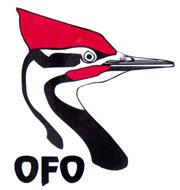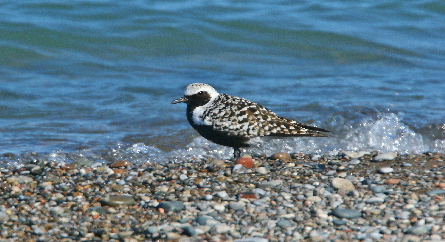| Fisherville Area | Long Point | Niagara River Gull Watch |
| Rock Point Provincial Park and Lake Erie Shore |
Long Point Area
Fisherville AreaTop
March 14 2020 (Saturday) Fisherville Area, Haldimand and Norfolk Counties
Leader: Dave Milsom, Barry Coombs.
27 birders enjoyed a rather cool day birding Haldimand county today from 9 am until 4 pm 50 species seen by the group Few waterfowl included all 3 Merganser species, Northern Shoveler and Green-winged Teal. Raptors : many Turkey vultures and Red-tailed Hawks, 6 Northern Harriers, 3 Rough-legged, Coopers and Sharp-shinned Hawks, 7 Bald Eagles, 2 Ravens, 6 Eastern Meadowlarks, 12 Killdeer, Horned Larks, Cowbirds, Eastern Bluebirds, at least 14 Red-bellied Woodpeckers, Song Sparrows, and 3 Tufted Titmice, one of which sang repeatedly from a tree overhanging the road on Irish Line. Many thanks to co- leader Barry Coombs. Dave Milsom
February 24 2019 (Sunday) Fisherville Area, Haldimand-Norfolk
Leader: Dave Milsom, Barry Coombs.
Sunday 2 cars arrived at Cayuga High School for the annual Fisherville trip. No doubt most folks were deterred by the weather forecast. Despite the winds gusting to 90 kms per hour as we reached Port Dover at noon, the weather in general did not prevent us from recording 42 species by the time we headed home at 2.30 pm. Best finds were a single Greater White-fronted goose on Silver Lake in Port Dover, Common Grackle, Red-winged Blackbird, Brown-headed Cowbird, Turkey Vulture, Rough-legged Hawk, Northern Harrier, 6 Bald Eagles, Snow Bunting, Horned Lark, Cedar Waxwing and Eastern Bluebird. Tufted Titmice eluded us all day. Many thanks to co- leader Barry Coombs.
February 24 2018 (Saturday) Fisherville area, Haldimand-Norfolk County
Leader: Dave Milsom, Barry Coombs.
19 cars and about 44 birders attended the March 4th outing covering Haldimand county as far west as Port Dover. It was beautiful sunny day . There was still a covering of snow after the recent fall. Lake Erie was mostly open water. We recorded 46 species including 4 icterid species, Tufted Titmouse, Eastern Bluebird, Red-bellied Woodpecker, Flicker, Killdeer, Tundra and Mute swans, Snow Buntings and many Horned Larks. We did well with raptors, seeing 18 Red-tailed Hawks, 3 Rough-legged Hawks, 2 Bald Eagles, 5 Turkey Vultures, 2 Northern Harriers, 2 American Kestrels, Cooper's and Sharp-shinned hawks.
February 19 2017 (Sunday) Fisherville Area, Haldimand-Norfolk County
Leader: Dave Milsom, Barry Coombs.
Amazing weather for this outing resulted in a huge group heading out from Cayuga this morning. At least 60 birders in 32 cars enjoyed the sunny, 14 degree celsius temperatures as we covered the snowless Haldimand region. A total of 43 species were recorded . Highlights included a lone Killdeer at Kohler Raceway, Eastern Bluebirds, Tufted Titmice, Red-bellied Woodpeckers, one Grackle, several Cowbirds, flocks of Red-winged Blackbirds, Cedar Waxwings, single Northern Mockingbird, Hermit Thrush, Northern Shrike , Yellow-rumped Warbler, and numerous Horned Larks. Raptors : Eastern Screech Owl, Red-tailed and Rough-legged Hawks, Sharp-shinned Hawk, American Kestrel, Bald Eagle, Northern Harrier. We ended the day at Fisherville Raptor Reserve. From here a number of birders headed for 10th Line East near Hamilton to search for Short-eared Owls at dusk. One was seen there Saturday at sunset.
February 21 2016 (Sunday) Fisherville Area, Haldimand-Norfolk County
Leader: Dave Milsom.
53 birders attended today's outing. Generally warm, sunny conditions with no snow cover. This led to very few sparrows being found and no Short-eared Owls when the outing ended at 4.15 pm. But owl pellets were discovered so they are still around. Many raptors were seen throughout the day including over 30 Red-tailed Hawks, 8 Rough-legged Hawks, 4 Northern Harriers, 4 American Kestrels, a sub-adult Bald Eagle, Merlin, Cooper's Hawk, a Northern Shrike and a calling Eastern Screech Owl. Other finds included 5 Eastern Bluebirds, 2 Mockingbirds, House Finches, both nuthatches, Red-bellied Woodpeckers, Hairy and Downy woodpeckers, Carolina Wren, Robin, several Horned Larks, 6 Red-winged Blackbirds and 3 flocks of Brown-headed Cowbirds. After hearing 3 singing birds, we finally located a Tufted Titmouse at Ruthven vocalising from the top of a tree at the edge of the woods. At least 3 more were seen over the course of the day. Lake Erie was 90 % open water: numerous waterfowl including American Wigeon, Black Ducks, Greater Scaup, Bufflehead, Common Goldeneyes, Red-breasted and Common mergansers. A total of 43 species were found.Many thanks to co-leaders Barry Coombs and John Schmelefske for their birding expertise, spotting skills and good humour.
February 22 2015 (Sunday) Fisherville Area, Haldimand-Norfolk County
Leader: Dave Milsom.
40 keen winter birds attended Sunday's OFO trip to Haldimand region. Considering it has been one of the coldest February months on record, the fact that Lake Erie was almost completely frozen and all the farm fields were covered in deep snow, it was surprising that we found as many birds as we did! Of the 42 species, highlights were as follows : 15 Rough-legged Hawks ( 6 dark morph), 20 Red-tailed Hawks, 3 American Kestrels, 2 Northern Harriers, 1 Sharp-shinned Hawk, 1 Cooper's Hawk, 3 Rusty Blackbirds, 40 + Red-winged Blackbirds, 36 Brown-headed Cowbirds, 4 Sandhill Cranes, 3 large Snow Bunting flocks, scattered groups of Horned Larks, 1 Tufted Titmouse (Ruthven C.A.), 2 Red-bellied Woodpeckers, 1 American Robin, 3 Northern Mockingbirds, 1 Song Sparrow, 2 flocks of Eastern Bluebirds, 2 flocks of Wild Turkeys, a male Red-breasted Merganser sitting on a field, and 5 Short-eared Owls at Fisherville Raptor Reserve. Many thanks to Barry Coombs for co-leading this trip, and to Wayne Bullock and David Okines for their invaluable assistance.
February 23 2014 (Sunday) Fisherville Area, Haldimand-Norfolk County
Leader: Dave Milsom.
43 birders (14 cars) enjoyed a lovely winter's day birding in the Haldimand area today.
53 species recorded was a very respectable total for this date.
Highlights were 6 Short-eared Owls, 6 Eastern Bluebirds, 2 Tufted Titmice, 2 Killdeer, 3 1st-year Bald Eagles, Rough-legged Hawk, 3 Northern Harriers, 5 American Kestrels, Cooper's Hawk, 3 Canvasbacks, Northern Pintail, many Horned Larks, Snow Buntings, Lapland Longspur, Red-bellied Woodpecker, Pileated Woodpecker, Northern Flicker, Northern Shrike, Northern Mockingbird, Lesser Black-backed Gull, and 4 flocks of Brown-headed Cowbirds.
Many thanks for their expertise and assistance to Barry Coombs, Kevin Shackleton, Len Manning and Andrew Keaveney.
The area birded included Ruthven Conservation Area, Irish Line, Fisherville area, Sandusk Creek, Peacock Point, Nanticoke, and the cornfields east of Port Dover.
February 25 2012 (Saturday) February 25 (Saturday) Fisherville Area, Haldimand-Norfolk County
Leader: Dave Milsom.
45 birders enjoyed a beautiful day along Lake Erie today and saw a number of interesting birds.Despite missing Short-eared owls at Fisherville, the group saw many other raptors.Highlights were 21 Bald Eagles in one tree on RR # 3 near Nanticoke! Barry Coombs spotted 3 Long-eared owls in a fir tree nearby-all birders obtained fabulous views of these beautiful birds. Also seen were 7 Rough-legged hawks (both morphs), 8 Northern Harriers, 3 American Kestrels, 3 Coopers and numerous Red-tailed Hawks.Other highlights included 5 Eastern Bluebirds, 5 Tufted Titmice, 4 Red-bellied Woodpeckers, 4 Golden-crowned Kinglets, many White-breasted Nuthatches, a Northern Flicker, Hairy and Downy woodpeckers, 4 Northern Mockingbirds, 25 Common Redpolls. A Lapland Longspur was found amongst a large mixed flock of Snow Buntings and Horned Larks on a cornfield near Port Dover. Large numbers of Tundra Swans were seen in bays between Sweets Corners and Nanticoke. Altogether 50 species were recorded. Thanks to Kevin Shackleton, Barry Coombs and Len Manning for their great assistance.
February 25 2012 (Saturday) Fisherville Area, Haldimand-Norfolk County
Leader: Dave Milsom.
22 OFO birders braved the snowy morning and cold winds off Lake Erie this afternoon to find a total of 45 species. Highlights: the biggest "highlight" was the flock of 1000 + Brown-headed Cowbirds in a field near Port Dover, along with a number of Red-winged Blackbirds. Others included Northern Flicker, Belted Kingfisher, Great Blue Heron, White-throated Sparrow, Horned Larks, 2 Tundra Swans in a field, 32 Wild Turkeys, and all 3 mergansers on Lake Erie. Raptor numbers were high too. We saw Merlin, American Kestrel, Red-tailed and Rough-legged hawks, Northern Harriers, 6 Bald Eagles, Short-eared Owl and 2 Northern Shrikes.
February 5 2011 (Saturday) Fisherville Area, Haldimand‐Norfolk County
Leader: Dave Milsom.
We began the day in high spirits as we joked about the terrible weather we had encountered on previous winter Fisherville trips. The sun shone and the temperature was almost balmy. By day’s end, we were happy to reach home as we crawled along the roads in heavy snow!
The 40 participants on today’s outing were rewarded with some excellent sightings. At Ruthven Park we saw 4 Red‐bellied Woodpeckers, several Eastern Bluebirds ( more than 12 through the morning), one Pine Siskin, White‐breasted Nuthatch, White‐throated Sparrow and Sharp‐shinned Hawk.
At Roger Gifford’s feeders on River Road, Cayuga, were 3 Tufted Titmouse, 6 Rusty Blackbirds, 2 Red‐bellied Woodpeckers, a Red‐breasted Nuthatch, Northern Mockingbird and a American Robin.
On a field south of Hagersville were 2 Lapland Longspurs, Horned Larks and Snow Buntings.
Most of Lake Erie was frozen, including the water near Nanticoke Power Station, but we still recorded Common Goldeneye, Bufflehead, American Black Duck and Mallard. Apart from missing Northern Harrier, we had a great day for raptors: Cooper’s and Sharp‐shinned Hawks, several American Kestrels, a Merlin, both dark and light morph Rough‐legged Hawks, Red‐tailed Hawks, 8 Bald Eagles as well as 4 Northern Shrikes. Other highlights were Northern Flicker; 3 Song Sparrows; a female Belted Kingfisher and a Great Blue Heron at the warm‐water outflow from Nanticoke; and a total of 7 Short‐eared Owls at the Raptor Reserve near Fisherville.
Total number of species was 47.
Many thanks to John Schmefelske, Gord Cameron and Hart Brasche for their expertise and assistance today.
February 6 2010 Fisherville Area, Haldimand‐Norfolk County
Leader: David Milsom.
The day started with a strong cold east wind and flurries but ended with sunshine and a decreasing wind. There were 46 birders and 26 cars on the outing. By day’s end there were still 20 cars at 5.30!
Our first stop at Ruthven Park produced 6 Eastern Bluebirds in the valley. On River Road near Cayuga we found several Red‐bellied Woodpeckers, Tufted Titmouse, Chipping and White‐throated Sparrows.
At a feeder near the lake south of Selkirk were Red‐winged Blackbird and Song Sparrow.
Altogether we saw 9 species of raptor: Cooper’s and Sharp‐shinned Hawks, Red‐tailed Hawk, both colour morphs of Rough‐legged Hawk, Merlin, American Kestrel, at least 6 Northern Harriers, 3 Bald Eagles at Nanticoke, and opposite Hagersville dump were 4 Short‐eared Owls.
We also tallied several ducks including both Scaup and all 3 mergansers.
At dusk there were over 1000 American Crows just west of Clanbrassil.
A total of 50 species was recorded.
7 February 2009 Fisherville Area, Haldimand‐Norfolk County
Leader: David Milsom.
On 7 Feb, 26 birders enjoyed a windy 5 degree day in the Fisherville area and along Lake Erie. An early visit to Ruthven Park produced several Common Redpoll, Pine Siskin, Tufted Titmouse and Red‐bellied Woodpecker (the first of 7 for the day).
On River Road near Indian Line south of Cayuga another Tufted Titmouse, Chipping, White‐throated and Song Sparrows were seen. Two flocks of Snow Buntings and a number of Horned Larks were found along the sideroads.
Raptors as usual were a highlight: Cooper’s and Sharp‐shinned Hawks, many Red‐tailed and Rough‐legged Hawks, American Kestrels, Northern Harrier, a Golden Eagle (1st‐year), and 6 Bald Eagles near Nanticoke.
Over 100 Wild Turkeys, 2 more Tufted Titmice, a Flicker and 3 Eastern Bluebirds were other good finds.
At the warm water area off Nanticoke in Lake Erie were 6 male and a female Canvasback. Along the creek were 6 Great Blue Herons.
At Nelles Corners at the feed mill were at least 10 Brown‐headed Cowbirds. Unable to find owls at the Fisherville Raptor Reserve, the group waited patiently behind the Hagersville Dump until just before dusk when 6 Short‐eared Owls were seen hunting. 56 species were seen for the day.
Many thanks to Wayne Bullock for his assistance with this trip, and to those who sent me emails.
2 February 2008 Fisherville Area, Haldimand‐Norfolk County
Leader: Dave Milsom.
21 birders enjoyed a cloudy but snow‐free day in the Haldimand‐Norfolk area today finding 49 species of birds, 8 White‐tailed Deer and a Beaver. Bird highlights included 2 Short‐eared Owls at the Fisherville Raptor Reserve, an Eastern Screech‐Owl seen by all the group along River Road near Cayuga, 500+ Snow Buntings in a field off RR # 3, 1 Tufted Titmouse, an adult White‐crowned Sparrow, 10 Red‐bellied Woodpeckers, 8 Bald Eagles around Nanticoke, 4 Song Sparrows, a Carolina Wren at Selkirk Provincial Park, 1 Northern Mockingbird, 50+ Horned Larks, 24 Cedar Waxwings, 6 Rough‐legged Hawks (both light and dark morph), 3 Northern Harriers, 14 American Kestrels and 2 Northern Shrikes.
We were pleased to show several life birds to Betty, visiting from New Jersey, and many of our OFO members.
Reported by Dave Milsom.
3 February 2007 Fisherville Area, Haldimand‐Norfolk County
Leader: John Miles.
We knew it would be very difficult to attempt to follow in John Miles’ footsteps but we never realized just how difficult.
Eighteen OFO birders set out from Cayuga on a never‐to‐be‐forgotten day. After good views of Tufted Titmouse and Red‐bellied Woodpecker (also Song Sparrow) on River Road in the driving snow, we attempted to drive south to the next stop. A brief look at a light morph Rough‐legged Hawk and a flock of Snow Buntings was followed by nothing ‐ we could not even see the road. A tortuous crawl south and west mercifully ended at the village of Selkirk and a wonderful restaurant. At this point we decided to abandon the area. At Nelles Corners a female Brown‐headed Cowbird was seen fleetingly in the swirl. Bypassing Hagersville, we headed for Hamilton Airport. No birds there either but we did see a WestJet plane make a difficult landing.
On to LaSalle Marina where we could finally bird. Great views of Eastern Towhee, Brown Thrasher, Carolina Wren, two Pied‐billed Grebes, American Coots, Trumpeter Swans, Canvasback, Redhead, Hooded Merganser, and a flying Red‐throated Loon. Eastport bridge over Red Hill Creek provided Ring‐necked Duck, Northern Shoveler, Northern Pintail, Double‐crested Cormorant and Black‐crowned Night‐Heron. A first year Glaucous Gull flew near the lift bridge but we saw no Peregrine Falcon. We then drove to Humber Bay Park East, Toronto, where we had superb views of the male Harlequin Duck, three Surf Scoters, a Ruddy Duck and a Beaver.
Total species: 56.
Reported by Dave Milsom.
5 February 2005 Fisherville Area, Haldimand-Norfolk County
Leader: John Miles
Once again John Miles provided OFO birders with a memorable trip through the Haldimand area. Fifty-four birders in 20 cars managed to traverse the back roads without a hitch thanks to John's leading and the use of radios.
We saw forty-five species despite heavy fog shrouding the fields in the first part of the morning. As soon as the sun broke through, an Eastern Screech-Owl was found "sunbathing". Other good finds before lunch included a Common Grackle, Horned Larks, two Cooper's Hawks, many Red-tailed and Rough-legged Hawks, several American Kestrels, a Tufted Titmouse, a Red-bellied Woodpecker, a Brown-headed Cowbird, and a Glaucous Gull. Afternoon birding along Lake Erie resulted in all three mergansers and all three swans being seen, plus a Northern Mockingbird and two immature Bald Eagles harassing a dark morph Rough-legged Hawk near Nanticoke. Our final stop at the Fisherville Raptor Reserve was probably the highlight of the day: first, a Northern Harrier, then nine Short-eared Owls all perched along the road in full sunlight.
Reported by Dave Milsom
7 February 2004 Fisherville Area, Haldimand-Norfolk County
Leader: John Miles.
Around 40 OFO members and friends met at the Cayuga High School for a tour of the back roads and byways of Haldimand County and a side trip into Norfolk. The roads were in good shape and the blue sky was peeking out as we left the school and headed towards the Fisherville area in a convoy of 20 vehicles. Except for a cold northwest wind, a pleasant day. Unfortunately nice days often make birding tough and birds were not plentiful today.
Near the raptor preserve a Short-eared Owl was found and remained perched for all to see. Along the road were several Red-tailed and Rough-legged Hawks. We headed towards Hagersville finding more red-tails and several rough-legs. Alone the 10th concession 300 Rock Pigeons, Horned Larks and Snow Buntings were on a field with a fresh coating of manure. At the edge of Hagersville a Northern Mockingbird flew across the road and perched out in the open. The group then headed west towards LaSalette. On the way several species were encountered including a Red-bellied Woodpecker but overall it was quiet. The LaSalette Gray Partridge were lying low today and despite checking the usual spots they were not in evidence.
Then we headed south and east checking out another usual spot for Gray Partridge but again drew a blank. We headed down to near Turkey Point and then east checking several bird feeders. At the feeders we added several species to the day's list including Common Redpoll, Brown-headed Cowbird, both nuthatches and White-throated Sparrow.
Off Port Ryerse were nine Mute Swans, a female Hooded Merganser, two Black Ducks, a Common Goldeneye and several Canada Geese in a small patch of open water, while several hundred metres off shore in a large section of open water were Greater Scaup and Common Mergansers. In the eagle tree near the Nanticoke hydro plant perched eight Bald Eagles of various ages. Across the road and over three fields out in the open eight Wild Turkeys made excellent viewing through the scopes. We finished up on the Sandusk Rd. with a couple of hundred Snow Buntings skipping over a corn stubble field. The group recorded 37 species for the day.
Reported by John Miles
8 February 2003, Fisherville Area, Haldimand-Norfolk County
Leader: John Miles
Nearly 80 OFO'ers and friends assembled at the Cayuga High School and after car pooling, 28 cars and vans departed at about 9:15 a.m. but not before a Cooper's Hawk flew by. Despite the mainly sunny conditions, there were near gale-force winds blowing making it bone chilling to be out of the cars too long. Many birds kept out of sight and hunkered down. At our first stop, where there are very good feeders, a fortunate few caught sight of a female pheasant before it faded back into the underbrush. A White-throated Sparrow was a little more co-operative. Along the town line, a Northern Shrike was in the bottom of a bush beside the road but took off for parts unknown very quickly. Further down the road a Northern Flicker flew into a woodlot and disappeared past a perched Red-tailed Hawk, one of many seen during the day. Many Red-tails were perched, often low down on the leeward side of the woodlots out of the wind. Along the 5th concession, the group saw many Short-eared Owls, several which were close enough for photo opportunities
Even with poor lighting conditions thousands of Common Mergansers were seen tucked in beside the power plant dock, but there were no eagles.
Heading north, we stopped below the dam at Caledonia where Common Goldeneye and Buffleheads were in fairly close. Across the river was a male Hooded Merganser. Leaving Caledonia, we took the back roads south and a fortunate few caught a quick glimpse of a male Eastern Bluebird along the 3rd concession.
Along the West River Road, just south of the Indiana Line, a woodpecker landed high up in a tree around 150 metres away where it remained. Through the scopes, the white patches on the wings and a tint of red on the head revealed an adult Red-headed Woodpecker. Before turning off the Rickert Rd. onto the Indian Line, a light-phase Rough-legged Hawk cruised by the group. Back to the raptor preserve, where the Short-eared Owls were again observed and by now the Northern Harriers were out hunting. Three were noted, including an adult male that even perched on the ground while our second Rough-legged Hawk flew by.
We continued onwards to the eagle tree, picking up our fourth Northern Harrier for the day perched on the ground in a hay field. At the eagle tree, an immature Bald Eagle was perched for all to see. From here we broke up and headed our separate ways after a tough birding day. The group was fortunate to record about 35 species for the day under very trying conditions.
Reported by John Miles
9 February 2004 Fisherville Area, Haldimand-Norfolk County
Leader: John Miles.
The host assembled at the high school in Cayuga and some carpooling was arranged. After John Miles reviewed our basic convoy protocol, 27 vehicles turned north on Highway #54. We stopped to view a pair of adult Bald Eagles, perched along the Grand River, south of York. We crossed to the west driving downriver to the rapids, where we saw only Common Mergansers, Mallards and Canada Geese.
The convoy continued south on River Road but somehow the back 16 became separated from the front 11. Eventually, after a short discussion, the back 16 decided to head to the Smith's Longspur location on Concession 2 north of Hagersville in hopes of reattaching the tail to the head. The surgery was successful as the tail arrived from the north, whilst the head came from the south. Within an hour, just about everyone had satisfactory looks at the star attraction and a facilities break was called for. From the Hagersville Tim Hortons, 20 vehicles headed off to the back of the Cayuga Speedway, where an incredible 10 or 12 Short-eared Owls flew and perched in the bright sunshine. We had ample chances to study these fabulous birds with binoculars and telescopes. From here we continued on to Taquanyah Conservation Area to eat lunch and enjoy the company of two Northern Mockingbirds. We tried for the Common Snipe and Killdeer that were last seen prior to the snow and ice storm at the open water/mud, but only managed to disturb a Song Sparrow.
At the feeders on Reg. #9 we saw only the usual feeder birds and so we carried on to the Erie shore. Here we had a good number of Tundra Swans, several duck species and a couple of Bonaparte's Gulls with the more usual ones.
At Selkirk Provincial Park we found 5 Long-eared Owls, the first of which was particularly skittish, but by slowly and carefully approaching these birds, we were all able to get decent looks at them.
After the trip was officially over, 3 or 4 vehicles proceeded to the Raptor Preserve at dusk and we saw 3 or 4 female and 1 male Northern Harriers as well as about another 4/5 Short-eared owls - can you ever see too many owls?
The day was a great success and we had about 40 species in total.
Reported by Maris Apse
10 February 2001 Fisherville Area, Haldimand-Norfolk County
Led by John Miles.
Seventeen brave souls gathered at the Cayuga High School parking lot despite winter storm warnings, high winds and dropping temperatures. The first stop was at Ruthven Park where the bander-in-charge of the Haldimand Bird Observatory field station there told the group some of the better species of birds that have been found there. A Bald Eagle was spotted in the distance soaring over the Grand River. Some of the sharp-eyed birders spotted the Red-bellied Woodpecker flying back and forth below the eagle.
The next stop was the 4th line where over 20 Red-tailed Hawks were spotted. A few Horned Larks were spotted as we went around the country block on onto the MacKenzie Road. Just west of Reg. Rd. #9 on Reg. #20, we pulled over as the field was full of Snow Buntings with a few Horned Larks and some Lapland Longspurs mixed in. Here we were hit with another snow streamer that again reduced visibility to 100 feet or less. We retired to Tim Horton's to wait for the streamer to subside. We returned back along Reg. Rd. #20 and stopped at the first field west of where we had been earlier. It too was full of Snow Buntings, a few Horned Larks and Lapland Longspurs. The next field to the east still was full of birds. An estimate of 5000 Snow Buntings may have been low.
We meandered the back roads to the 6th concession of South Cayuga where a Short-eared Owl was located in a Red Cedar. It took off landing in an apple tree and then flew around for all to see. Continuing east we were again hit with another heavy snow streamer but safely made our way into Selkirk where it cleared and then headed west stopping at the eagle tree. Here a 1st year Bald Eagle was perched fairly close to the road. It was joined by a second bird and they took to the air and played tag over the wood lot while in the back ground two more eagles were spotted.
Along the lake east of the Nanticoke Power Generating Station we spotted our 6th Bald Eagle for the day that came fairly close during its fly by. Several hundred Common Mergansers were tucked in close to shore near the power plant. At Peacock Point a male Red-winged Blackbird and several Brown-headed Cowbirds were mixed in with a flock of Starlings.
We headed east along the lakeshore picking up several species of waterfowl including both species of Scaup. Another Short-eared Owl was spotted in the trees between the road and the lake. This bird flushed and flew around out over the lake.
Near Dunnville an immature male Snowy Owl was spotted sitting on the ice. This bird flew a couple of times giving the group good looks of a Snowy Owl in flight. Along King's Row a light phase Rough-leg gave the group a good view as it sat on the ground before lifting up and coming across the road in front of us. We headed into Dunnville and to Tim Horton's to warm up again where nearly 200 cowbirds flew over as we got out of the cars.
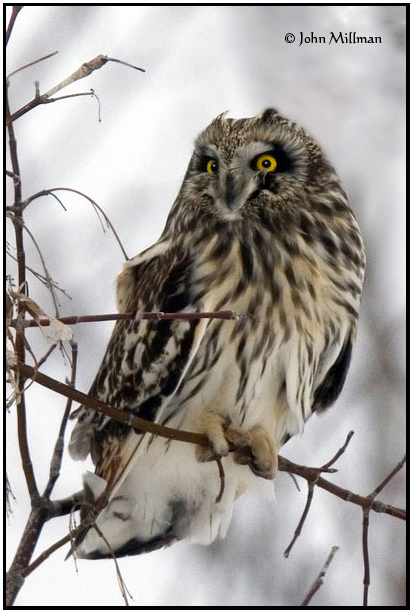
Short-eared Owl
Photo: John Millman
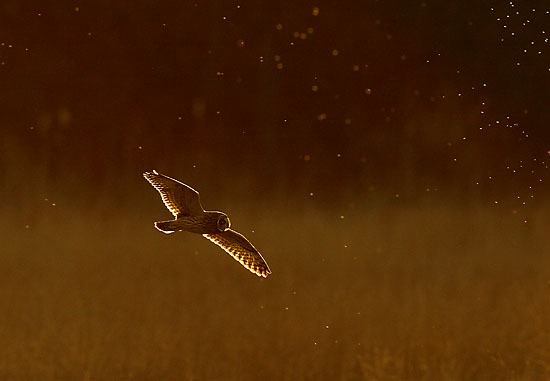
Short-eared Owl
Photo: Brandon Holden

Short-eared Owl
Photo: Karl Egressy
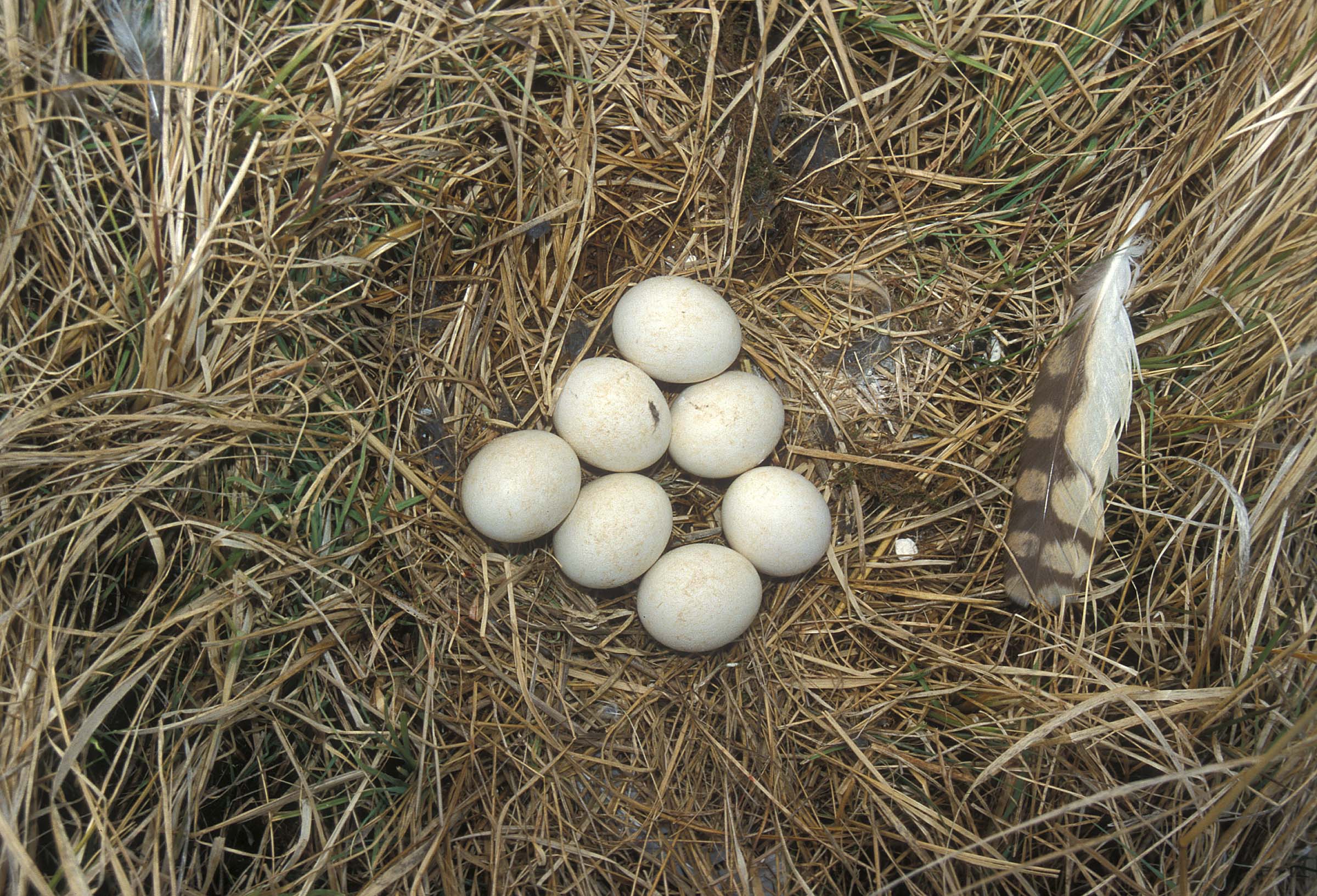
Short-eared Owl
Photo: Mark Peck
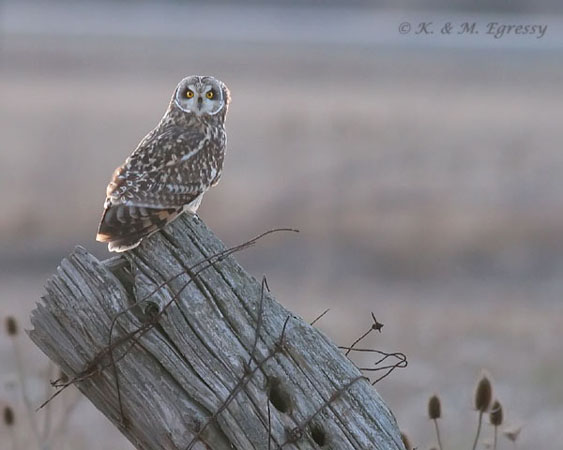
Short-eared Owl
Photo: Karl and Marienna Egressy
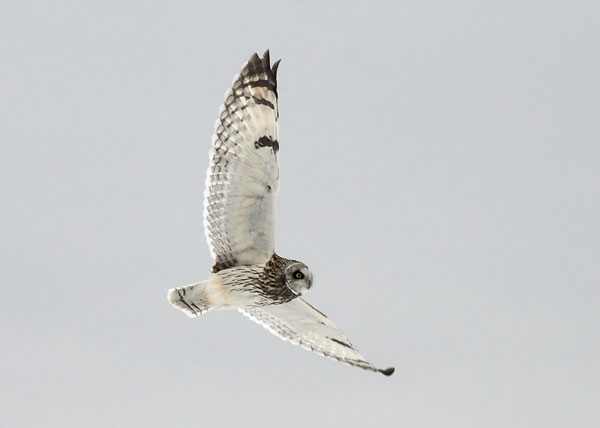
Short-eared Owl
Photo: Karl Egressy
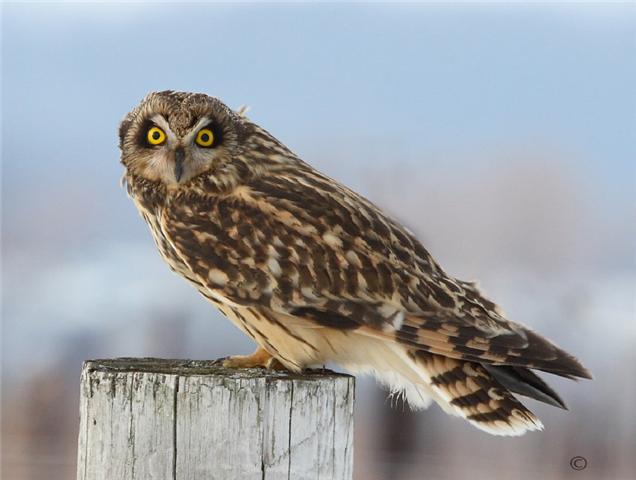
Short-eared Owl
Photo: Mike Cavanagh
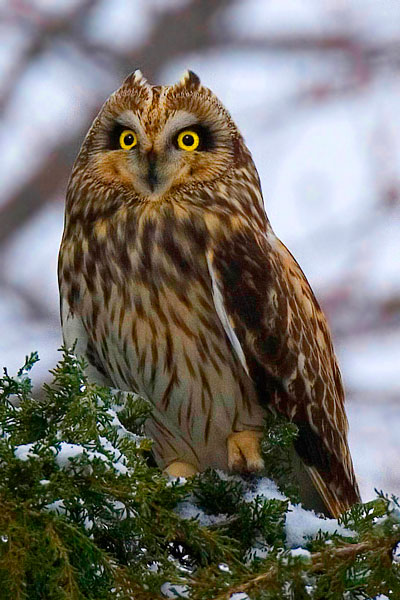
Short-eared Owl
Photo: John Millman
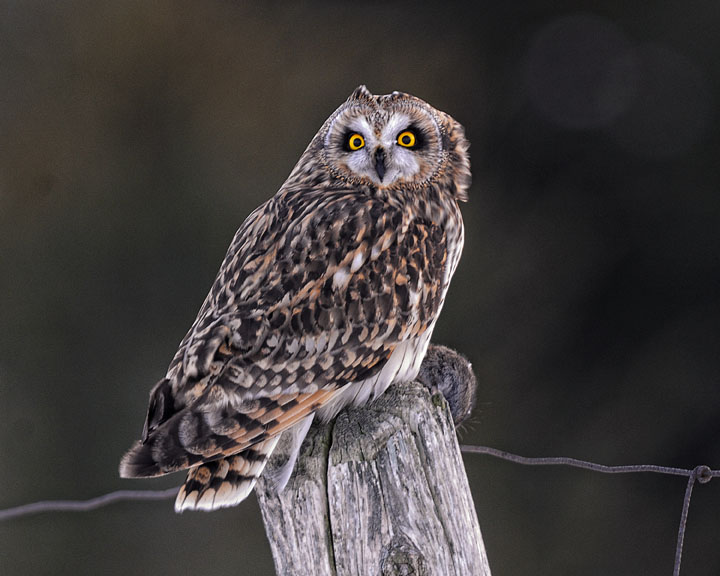
Short-eared Owl
Photo: Wade Clare
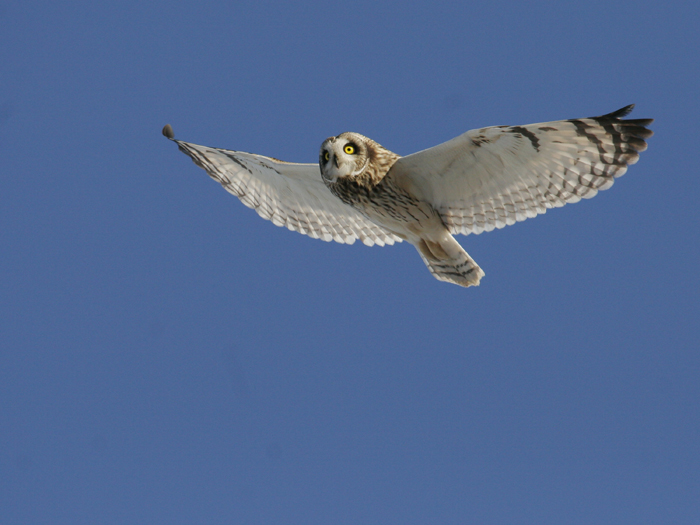
Short-eared Owl
Photo: Mark Peck
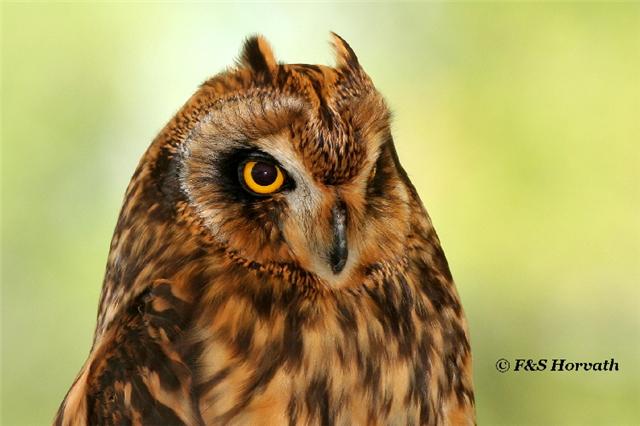
Short-eared Owl
Photo: Frank and Sandra Horvath
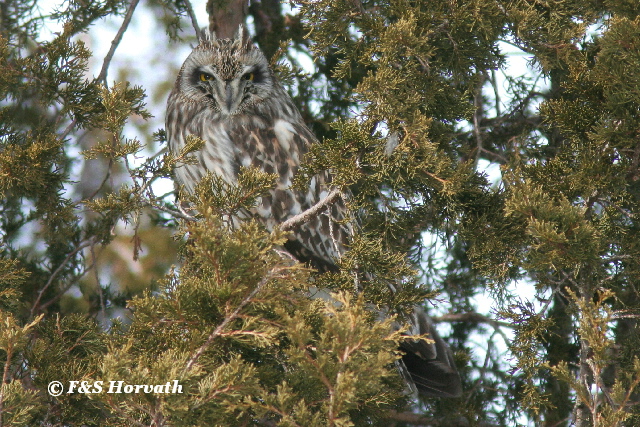
Short-eared Owl
Photo: Frank and Sandra Horvath
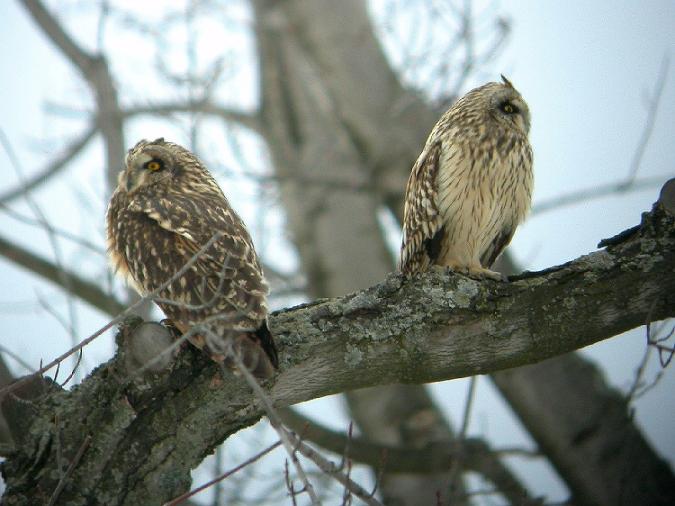
Short-eared Owl
Photo: Sandra Horvath
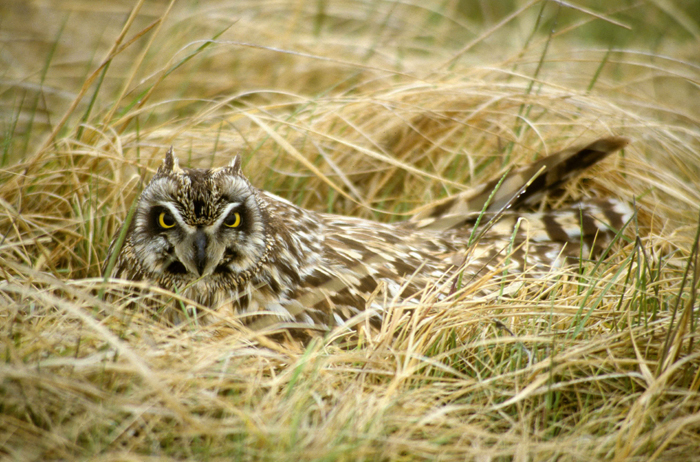
Short-eared Owl
Adult on the nest
Photo: Mark Peck
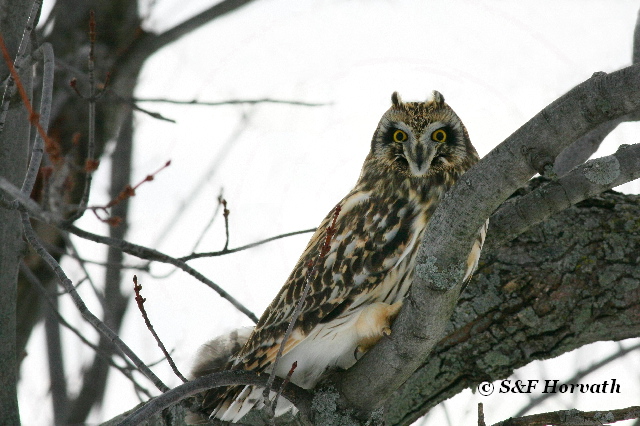
Short-eared Owl
Photo: Sandra and Frank Horvath

Short-eared Owl
Photo: Sam Barone
Long PointTop
November 2 2025 (Sunday) Long Point
Leader: Liam Thorne.
It was a cool (1C) and extremely overcast morning as I followed the east star (Sirius) towards Long Point in Point Rowan. I met up with a group of 17 Ontario Field Ornithologist members and our leader Liam Thorne (Emma was sick) to tour the Long Point and Port Rowan area. We toured the Bird Studies Canada Headquarters grounds , out to the lake and the cemetery. We were treated to some good sightings of American Coot, Ruddy Duck, Common Goldeneye, Bufflehead, Greater Scaup, American Wigeon, Northern Pintail, Green winged Teal, Redhead, Gadwall, and a single Pied Billed Grebe. A couple of Bald Eagles flew down in front of us. Our next stop was the Old Cut Field Station as we crossed the causeway and saw many Sandhill Cranes. It was impossible to stop considering the size of the group and the car convoy. The banding station had caught and were banding White Throated Sparrow, Golden crowned Kinglet, a lovely Carolina Wren and a not too happy White breasted Nuthatch! They had banded 12 Northern Saw Whet Owls the evening before, and MOTUS had detected a NSWO in the bush on the trail, but we couldn't get our eyeballs on it. It is prime migration season for this little owl. We went back to HQ to have lunch and we were treated to an impromptu hawk watch as the temps rose and the sun came out! Red Tailed Hawk, Merlin and a Northern Harrier made an appearance. I learned that Liam is a young lad (Grade 12 high school) and he already knows so much and is such a good birder! He is also pretty good with people! Liam led us to the Port Rowan Wetlands as well as the Lion's Park where we got good looks at many waterfowl ! Lion's Park gave us good views of a very acrobatic Common Tern as well as many Bonaparte's Gulls. The last stop was Turkey Point where we were hoping to see Hudsonian Godwit, but Liam pointed out that it is time that they move on to their wintering grounds in the south. There were still some shorebirds: Dunlin and Black Bellied Plover, as well we were treated to a flock of Snow Buntings which foraged not too far from us on the beach. All in all, a great day, with more stops than I've ever had at this particular trip. Liam is already an accomplished birder, being a licensed bird bander and member of the Long Point Bird Observatory team. We saw 63 species for the day. Eva D'Amico
April 5 2025 (Saturday) Long Point
Leader: Stewart MacDonald.
OUTING REPORT FOR APRIL 5, 2025 EXCURSION TO LONG POINT AND PORT ROWAN On April 5, 2025, 7 people joined Stewart MacDonald for this excursion. Although there was a prediction of heavy intermittent showers, the majority of the outing was conducted without rain falling. The group observed 57 Species of birds, including 20 Waterfowl. The outing started at the Birds Canada Office, where several species of Dabbling Ducks were observed to start the day off on the right foot. The group then drove west on Lakeshore Road where we observed more Waterfowl along the way. Heavy rains on the prior Wednesday created many temporary ponds in the local fields, so the birds had many places to go. One of the highlights of the morning was observing several Sandhill Cranes together, with display behavior from some of the birds. Off we went to the Long Point Causeway with stops to observe diving ducks in Long Point Bay. There were large rafts of Greater and Lesser Scaup, Canvasbacks, Redheads, Ring-Necked Ducks and others which were observed. The highlight was several Horned Grebes which gave the group excellent views. Some of these birds were developing their breeding plumages. The group then took an excursion by foot and observed Greater Yellowlegs, Bald Eagles and other Ducks. Off to Old Cut Observatory, for a walk in the woods and into Long Point Provincial Park, where Hermit Thrush, Eastern Phoebe and Field Sparrow being the highlights. Many Golden-Crowned Kinglets were observed. The final stop was Port Rowan Harbour, where a Red-Throated Loon and Osprey were observed! Many Thanks to Barb O'Neill for her photography and to all the participants for a Fun day of Birding!
April 3 2024 (Wednesday) Long Point
Leader: Stewart MacDonald.
OFO - Ontario Field Ornithologists April 3 2024 7 very dedicated birders accompanied Outing Leader Stewart MacDonald on this day. The conditions for birding were difficult, with persistent high winds and rain throughout the morning. However, we were rewarded with some good sightings on this day, as the weather did not prevent the group from enjoying the outdoors! 45 Species of birds were sighted by the group, including 17 Waterfowl Species. However, songbird sightings were limited as many of the more common species that we would have expected to see, were hunkered down. Even the Bird Banding at Old Cut Observatory was limited for the day. We started the outing at the Headquarters of Birds Canada, and observed a number of species in the Pond, most notably Hooded Mergansers (3 females) and several pairs of Ring-Necked Ducks and Gadwall. We then drove west along Lakeshore Road and stopped at the Lee Brown Wildlife Area, to observe other Waterfowl Species. Continuing from there, we spotted a Northern Harrier, and 2 Bald Eagles at an active nest. We were unable to spot any large groups of sandhill Cranes, but we came across a pair of Cranes engaged in a Courtship Dance which thrilled the group! Driving down the Causeway, we stopped twice to view Waterfowl at the Platforms on the Causeway, but the high winds had driven many of the ducks in Long Point Bay to shelter. However, 4 Long-Tailed Ducks were a pleasant surprise as they flew close to us. Continuing towards the Old Cut Observatory, we stopped a few times to observe Waterfowl and also walked on the Long Point Trail. Good sightings of Green-Winged Teal, Northern Shovellers and Northern Pintails provided excellent views for the group. Arriving at the Parking Lot at Old Cut, we observed a Bald Eagle on an active nest, at fairly close range. Walking around the Old Cut Woods and into Long Point Provincial Park, Songbird sightings were limited due to the weather, although some Eastern Phoebes entertained us with their persistent tail bobbing. I would like to thank the 7 participants for their enthusiasm and endurance in the poor weather conditions and I believe we all enjoyed the day! Thankyou to Norman Franke for sending his photos.
March 13 2022 (Sunday) Long Point
Leader: Doug Tozer, Stu Mackenzie, Adam Timpf.
March 13 2022 (Sunday) Long Point Leaders: Doug Tozer (and Aurora Tozer), Adam Timpf, Stu Mackenzie Thirty-eight brave souls endured strong bone-chilling wind and flurries throughout the morning, but in the end, the birding rewards were excellent. The challenging conditions concentrated cranes, swans, and other waterfowl, and some land birds, in places that made for close viewing. Had the day been warmer and more pleasant, the birds may have been spread out and harder to find and view well. We started at Birds Canada national headquarters just outside Port Rowan where we saw the bulk of our 18 species of waterfowl for the day. On the way out to the lake, we flushed an American Woodcock from a small wet patch in snowy brush, which offered most of the group only fleeting views, but got our spirits up nonetheless. A quick glimpse of an adult Cooper?s Hawk also lifted our (cool) spirits. We lingered for nearly an hour in a sheltered location along the lakeshore getting especially rewarding, close-up views of hundreds of Canvasback, Redhead, Ring-necked Duck, Lesser Scaup, American Widgeon, Gadwall, Hooded Merganser, and Common Merganser. Also present was American Coot, Ruddy Duck, Pied-billed Grebe, Bufflehead, and several Bald Eagles. On the way back to the cars the group enjoyed a lone Yellow-rumped Warbler and numerous American Robins feeding on Eastern Red Cedar fruits and a quick flyover by a single Merlin. Next we visited the Port Royal Cemetery where wind and snow had jammed the Big Creek river valley full of Sandhill Cranes, Tundra Swans, and other waterfowl attempting to find shelter. Amongst chattering teeth and shivering we heard lots of complements for good views of Northern Pintail and Northern Shoveler alongside the impressive shoulder-to-shoulder clusters of cranes and swans. We ended our day having lunch at Long Point Bird Observatory?s Old Cut Research Station where we continued to fill out our list. A quick glimpse of a flushed owl got us warm again, possibly a Great Horned. Point-blank views of Song Sparrow and Swamp Sparrow at the nearby feeders offered good chances for learning fine field marks. In the end we all very much enjoyed the day?s birds despite the difficult weather. The final tally was 65 species and a really good time finally doing something fun in-person! Our trip report is available here - https://ebird.org/tripreport/42975 Highlights: American Woodcock, Eastern Meadowlark, Eastern Towhee, Myrtle Warbler, all the swans, cranes and great waterfowl diversity.
June 6 2015 (Saturday) Long Point Area
Leader: Jody Allair.
We had a great turnout (22 participants) for today's OFO Field Trip to the Long Point Birding Area. The cool windy morning kept most of the mosquitoes at bay but also made the birding a little challenging. Despite this we did manage to hear and see most of our target birds and record 70 species in total. Highlights for the day included: 2 rather late Common Loons flying over the Bird Studies Canada office, brief glimpses of Louisiana Waterthrush, and superb views of Prothonotary Warbler and Cerulean Warbler. Thanks to all those who made the long drive down to Long Point this morning and to all the participants for making today an enjoyable day of birding. Detailed species lists are below. eBird Checklists: [Bird Studies Canada Office](http://ebird.org/ebird/canada/view/checklist?subID=S23804629) [Backus Woods](http://ebird.org/ebird/canada/view/checklist?subID=S23804761)
March 21 2015 (Saturday) Long Point Area
Leader: Diane Salter, Doug Tozer, Adam Timpf, Stu Mackenzie, Mike Burrell.
On this chilly spring day, some 50+ birders attended the Long Point OFO trip today in search of Tundra Swans, Sandhill Cranes, waterfowl, and other early migrants. Participants were not disappointed as Tundra Swans were in no short supply with flocks flying continuously throughout the day. It appears some birds were moving onwards, while other birds were just arriving. Several fields contained large concentrations with as many as 3000 in the field west of Port Royal along Front Rd. The East Quarterline Rd between Concession 1 and the Front Rd also had a large group of birds and made for nice viewing on a less busy road. Large flocks of dabblers (expected species) and redhead accompanied the swans with smaller numbers of geese mixed in as well. Small numbers of Sandhill Cranes, Horned Larks, and Killdeer were present at most stops. No Cackling Geese or Greater White-fronted Geese were seen during the tour, but both species were still in the area today. I found (re-found?) a single Greater White-fronted Goose just west of Lee Brown's along Front Rd before a swirl of birds took off and I lost track of it. The waterfowl were moving around a lot today so it's worth checking all the fields, and sometimes checking them twice. The inner bay and lake are still frozen, with the only open water being where Big Creek goes under the causeway at Long Point. Several Pied-billed Grebes were present here, along with Canvasback and other diving ducks. Swans and ducks will remain concentrated here until the bay opens. Many thanks to Doug Tozer, Diane Salter, and Tim Lucas for co-leading this trip, and to all the other experienced birders who lent their eyes, ears, and scopes. Many thanks to St. Williams Nursery & Ecology Centre for providing parking and carpooling space, and to Bird Studies Canada and Old Cut Bird Observatory for providing washroom facilities and a warm place to eat lunch.
June 7 2014 (Saturday) Long Point Area
Leader: Jody Allair.
We had a great turnout (30 participants) for today's OFO Field Trip to the Long Point Birding Area. The cool morning kept the mosquitoes at bay but also made the birding a little challenging. Despite this we did manage to hear and see most of our target birds and record 67 species in total.
Highlights for the day included: two very obliging Least Bitterns, Louisiana Waterthrush, Prothonotary Warbler, Acadian Flycatcher (heard only), great views of Blue-winged Warbler and killer scope views of Grasshopper Sparrow.
Thanks to all those who made the long drive down to Long Point this morning and to all the participants for making today an enjoyable day of birding. Detailed species lists are below.
Ebird Checklists:
March 22 2014 (Saturday) Long Point Area
Leader: Diane Salter, Doug Tozer, Adam Timpf, Stu Mackenzie.
A group of thirty birders met this morning for the annual OFO trip to Long Point. Despite the cold weather feeling decidedly winter-like the birds mostly cooperated.
We were successful in finding about 4000 Tundra Swans scattered through the area, a bit lower than have been easy to find in the last couple of days but still very nice to see. We also found 20 other species of waterfowl, many of which were viewed at the mouth of Big Creek and from the Turkey Point beach.
Aside from waterfowl the group found Pied-billed Grebe (Long Point causeway), Horned Grebe (Turkey Point beach), Sandhill Cranes (several locations), Red-shouldered Hawk (Turkey Point marsh) and thousands of blackbirds and many Killdeer and Song Sparrows to round out the list of 63 species.
Below is a list of locations visited and the associated eBird checklists:
- St. Williams Forestry Station
- Walsingham Flats
- Hazen Road (concession 3 to 4)
- Hazen Road (concession 2 to 3)
- 1st Concession
- Lakeshore Road west of Lee Browns
- Lee Browns WMA
- Bird Studies Canada Headquarters
- Long Point Causeway
- Turkey Point marsh
- Turkey Point beach
A birding guide to the Long Point Area is an excellent resource for anyone visiting Long Point and is available here
Thanks to Diane Salter, Stu Mackenzie and Daniel Giesbrecht for helping lead the outing today and to the St. Williams Forestry Station Interpretive Centre and Bird Studies Canada for generously allowing access to their facilities for bathrooms and warmth.
June 8 2013 (Saturday) Long Point Area
Leader: Jody Allair.
We had a great turnout (30 participants) for today's OFO Field Trip to the Long Point Birding Area. The cool morning kept the mosquitoes at bay but also made the birding a little challenging. Despite this we did manage to hear and see most of our target birds and record 70 species in total.
Highlights for the day included: two very obliging Least Bitterns, Louisiana Waterthrush, Prothonotary Warbler and 5 species of shorebird including a lingering White-rumped Sandpiper.
Thanks to all those who made the long drive down to Long Point this morning and to all the participants for making today an enjoyable day of birding.
Detailed species lists:
- BSC HQ: http://ebird.org/ebird/canada/view/checklist?subID=S14373041
- Backus Woods: http://ebird.org/ebird/canada/view/checklist?subID=S14373106
- St. Williams Forest: http://ebird.org/ebird/canada/view/checklist?subID=S14373137
- Port Rowan Sewage Lagoons: http://ebird.org/ebird/canada/view/checklist?subID=S14373173
March 10 2012 (Saturday) March 10 (Saturday ) Long Point Area
Leader: George Pond, Barry Jones, Jim Heslop, Bob Stamp.
There was a large turnout for the Long Point Outing. Over 45 participants started the day. Unfortunately fog rolled in early in the morning & the swans didn't move inland into the fields from the Bay as they would normally. We did find one group in the fields but they soon disappeared in the fog. There were good looks at 2 Sandhill Cranes near Lee Brown's & other small groups in a couple of other areas. We spent time at the Harbour in Port Rowan where we could hear swans & see ducks in the fog. Identification was difficult as the fog rolled over the ice and open water. After lunch at BSC we walked back to the lookout & had excellent views of Bald Eagles in the trees by the water's edge. At least 5 different eagles flew out of this area. All of the inland water areas were still frozen & covered with snow. We again drove the roads looking for swans & found a juvenile Golden Eagle flying over a group of swans. Back to the Harbour at the end of the day to find the fog had lifted. Hundreds of Swans (including 1 Trumpeter) & large rafts of ducks (at least 13 species) filled the waters. A total of 48 species were seen during the day. Special thanks to Doug Tozer & Adam Timpf for co-leading the group. Also thanks to BSC for welcoming the group to their building for lunch & to the St. Williams Interpretive Centre for use of their facilities at our meeting point.
March 10 2011 (Saturday ) Long Point Area
Leaders: Diane Salter, Rob Maciver.
Approximately 40 people participated in today's OFO trip to the Long Point area led by Diane Salter and me.
Between 9:00 a.m. and 4:40 p.m. we tallied 62 species plus 2 additional taxa, highlights of which included Little Gull, Great-horned Owl, Eastern Meadowlark and White-winged Crossbill. A Golden Eagle was reported by some. No Smew. No unusual geese.
Thank you to all of today's participants for being such a congenial group. Thanks also to Ron & Anne Marie Ridout and Bird Studies Canada for opening up their facility to our group and providing coffee, as well as Andrew K. for pre-trip intelligence.
June 4 2011 (Saturday) Long Point Area
Leaders: Christian Friis, John Brett, Stu Mackenzie.
Twelve birders joined me and John on a tour of the Long Point area. Beginning in Backus Woods at 7 am, birding was tough, restricted to mostly aural observations. Most species tucked away in the scrubby understory or high in the canopy, offering poor viewing unfortunately, though we did get a number of Carolinian goodies. We persevered and continued to Spooky Hollow, where we were treated to views of an Acadian Flycather just before a the sky opened and a thunderstorm hit around 11 am. This was a good time for lunch. We arrived at Old Cut field station shortly after lunch where a late Pine SIskin was hanging around, and then headed to Big Creek National Wildlife Area where we were treated to views of Black Terns and Least Bitterns. After birding Concession A and around the Port Rowan lagoons, where we added Orchard Oriole, we went to Townsend sewage lagoons, where we picked up a few shorebird species (Semipalmated Plover, and Baird’s and Semipalmated Sandpipers) and added to our waterfowl species. All together an okay day, despite the challenging birding that made up the bulk of the trip.
John and I would like to thank the people who came out to the trip; the Hamilton Field Naturalists for allowing our group access to Spooky Hollow; and Bird Studies Canada for allowing us to park in their lot and car pool from there.
March 12 2011 (Saturday) Long Point Area
Leaders: George Pond, Barry Jones, Jim Heslop, Bob Stamp.
Today a good‐sized group of keen birders assembled at the St. Williams Forestry Station to participate in the annual early “spring” OFO field trip to Long Point. Thank you to those members that car pooled, which made manoeuvring a fairly large group a good bit easier. We were lucky that we didn't have the weather that the area experienced yesterday with blowing snow and treacherous roads. Long Point Bay was still frozen over this year, so waterfowl viewing was limited to “lakes” in the surrounding corn fields as a result of all the recent rains. Some local roads were still almost impassable also limiting the number of stops we made.
Nevertheless, we did see the “big three” advertised species. Tundra Swans were in the thousands on the ice of Long Point Bay as we drove the causeway. Better views were had on the “Front Road”, County Road 42, both calling in flight and in surrounding corn fields. A number of pairs of Sandhill Cranes were out in the fields too, allowing good telescope looks. A little surprisingly, given their nice recovery of recent years, we didn't see a Bald Eagle until our final stop of the day, an immature bird, with a radio transmitter strapped to its back! New for the year for many included, American Robins, a number of Killdeer, and blackbirds. We had Pine Pine Siskins in several locations. An extremely cooperative Merlin perched right along the road so that most or all of the group got a look and some even pictures. The wily Wild Turkeys managed to elude us this year but some fortunate individuals saw some on their drive down and/or home.
Thank yous go to Bob Stamp and John Olmsted for co‐leading the outing, Birds Studies Canada for allowing us to use their Old Cut Field Station as a lunch room, volunteers from the Friends of Long Point for arranging access to the St. Williams Forestry Station facilities and to Diane Salter for again allowing us to visit her well‐stocked feeders in Walsingham, which never fail to produce a few species we miss elsewhere.
March 13 2010 (Saturday) Long Point Area
Leaders: George Pond, Barry Jones, Jim Heslop, Bob Stamp.
Today about 35 intrepid field naturalists braved the inclement weather to participate in the annual early spring OFO field trip to Long Point. Not one of whom can ever be called a “fair‐weather” birder. Although the wind and rain made viewing a tad tough and kept the raptors grounded, we still managed, as a group, to view forty some‐odd avian species.
Maybe more importantly, we did see the “big three” advertised species those being Tundra Swans both on Long Point Bay, in flight and on surrounding corn fields, at least four Bald Eagles in the same locales, (both adults and younger individuals) and, luckily, a pair of Sandhill Cranes in a field along Front Road just west of Hwy 59. New for the year for many included, a sizable flock of American Coots, a number of Killdeer, several Eastern Bluebirds and American Robins. The wily Wild Turkeys managed to elude us this year but some fortunate individuals saw some on their drive down.
Thank yous go to George Pond and Bob Stamp for co‐leading the outing, George again for arranging and Birds Studies Canada for allowing us to use their Old Cut Field Station as a lunch room, what a godsend. Also to Diane Salter for arranging access to the St. Williams Forestry Station powder rooms and especially for allowing us to visit her well‐stocked feeders in Walsingham which never fail to “produce” a few species we miss elsewhere. Last, but not least, thank you to Wendy Hunter for making the trek down to make available to folks OFO merchandise such as checklists, hats and sweatshirts. If you don‐t know all that is available, check the OFO website.
Any way, we look forward to doing it all again next March, in bright sunshine – Bob and George guarantee it.
7 February 2009 Long Point
Leaders: Bob Stamp, John Olmsted and Jim Heslop .
On Saturday 14 March, about 40 birders met at St. Williams Forestry Station for a day of birding the Long Point area. The day dawned sunny and mild and this year Long Point Bay was ice‐free making for a great day for waterfowl viewing.
Birding highlights: Thousands of ducks and Tundra Swans peppered and salted Long Point Bay. Especially rejuvenating were the uplifting calls of the swans as groups flew low overhead, while we walked and waded a portion of the A Concession in particular. At least 25 Snow Geese of both blue and white morphs also were on the bay. From the viewing stand on the causeway, we watched as a “flock” of eight cavorting immature Bald Eagles put on an awe‐inspiring aerial show.
From the viewing stand at Lee Brown's Waterfowl Sanctuary the group was especially appreciative of a half dozen Sandhill Cranes that circled and landed in the adjacent field.
Kinglets and creepers, recent early spring migrants such as Great Blue Herons, Killdeer, Horned Larks, and four species of blackbirds, lingering American Tree Sparrows, juncos and Pine Siskins as well as resident Wild Turkeys and Eastern Bluebirds added to our grab bag of species for the day.
A special thank you to:
Bird Studies Canada for again permitting us to lunch at their Old Cut Banding Station,
Steve Thorpe for finding the group a Glaucous Gull through the heat haze on a flooded field on Lakeshore Road,
Diane Salter for allowing us to finish the day enjoying the parade of species coming to her many well‐stocked feeders near Walsingham and, last but not least, to those in the group who car‐pooled, making the “train” through the countryside much more manageable.
Good birding from your reporter Jim Heslop.
15 March 2008 Long Point
Leader: George Pond.
49 people in 23 cars (after pooling) traveled from Wild Turkey Point to Long Point. The group identified 59 species but as usual in a group of this size everyone missed several species seen by others. Highlights included thousands of Tundra Swans sitting on the ice in the bay, swimming in any open water, sitting in the fields and flying overhead. Against the blue of the sky they made an impressive sight indeed. Several Sandhill Cranes were seen by all as was a mature Bald Eagle sitting on the ice. Some saw a Hermit Thrush at Old Cut. As usual on this trip some saw their first American Robin, Red-winged Blackbird, Grackle and Killdeer for the year. Spring was certainly in the air.
Many thanks to Barry Jones, Jim Heslop and Bob Stamp for leading the large convoy of vehicles and to Diane Salter for her bird feeders where we saw our only Pine Siskins and Common Redpolls and later Red‐bellied and Hairy Woodpeckers and White‐throated Sparrows. Thanks also to Bird Studies Canada for the use of the Old Cut Visitor Centre for lunch and washroom facilities.
Reported by George Pond.
17 March 2007 Long Point Area
Leaders: George Pond, Barry Jones, Jim Heslop, Bob Stamp.
28 eager birders showed up for the Long Point OFO trip despite the terrible driving conditions. However as the day progressed the weather became better, but remained cold and windy.
The three target birds, Tundra Swan, Bald Eagle and Sandhill Crane, were all seen. Spectacular views of 19 Sandhill Cranes very close to the road were the highlight of the trip. Other birds reported by the group included Northern Shrike, Rusty Blackbird, Eastern Meadowlark, Eastern Screech‐Owl, Turkey Vulture, 16 species of duck, Cackling Goose and Chipping Sparrow. Everyone had spectacular views of a Fox Sparrow at the Old Cut Banding Station.
In all, 60 species of birds were identified but as usual on an outing like this not everyone saw every bird.
Thanks to Stu McKenzie of Bird Studies Canada for the use of the Old Cut Visitor Centre for lunch and a pit stop. Thanks also to my co‐leaders Barry Jones, Jim Heslop and Bob Stamp.
Reported by George E. Pond.
17 June 2006 Long Point
Seventeen enthusiastic birders, led by John Miles and assisted by George Pond, enjoyed a hot, sunny day in the Long Point area, with a tally of 98 species. That’s just the number of bird species. Of course, when you are with John, you are also introduced to a wide range of the plants and trees that help make Long Point such a pleasure to visit.
The birds seemed unusually quiet, but the sharp ears of John and others in our group were still able to identify a lot of great birds. Here are just some of the highligh
ts:- Cerulean, Golden‐winged, Blue‐winged, Hooded and Prothonotary Warblers, among a total of 14 of that family.
- Such dazzling favourites as Scarlet Tanager, Indigo Bunting, Rose‐breasted Grosbeak, Baltimore and Orchard Orioles, Eastern Bluebirds, Eastern Meadowlark and Bobolinks.
- A Ruby‐throated Hummingbird doing its back and forth display flight.
- Ruffed Grouse and Wood Duck families.
- Broad‐winged Hawks.
- Pied‐billed Grebe, Common Moorhen and Great Egret; Forster’s and Black Terns.
At the end of a long, rewarding day, Jean Iron thanked John on behalf of the OFO and of all of us who participated for sharing his breadth of knowledge of the natural history of the area.
Reported by Ian Cannell.
18 March 2006 Long Point Area
19 car‐loads of OFO members eager to beat the cold and find some interesting birds were not disappointed. A total of 71 species were recorded despite the cold and wind. Narrowly missing the Eurasian Wigeon at Lee Brown’s was our only real setback. Best finds were a Lesser Yellowlegs with Killdeer and 2 Tree Swallows along Concession 1, a Pectoral Sandpiper along Concession A road, and in the woods at Big Creek along the same road: Tufted Titmouse, Carolina Wren, Brown Creeper, Red‐bellied Woodpecker, and Golden‐crowned Kinglets. 19 species of ducks were seen, including Canvasback, Blue‐winged and Green‐winged Teal, Redhead and 15 Ruddy Ducks. Other good finds were Pied‐billed Grebe, Turkey Vulture, Rough‐legged Hawk, Northern Harrier, 5 Bald Eagles, about 250 American Coots, Great Horned Owl, Fox and Chipping Sparrows, and a flock of Rusty Blackbirds.
Many thanks to George Pond who led this outing, ably assisted by Jim Heslop and Bob Stamp.
Reported by Dave Milsom.
19 March 2005 Long Point Area
Led by Jim Heslop and Bob Stamp
About 40 OF members in 19 cars toured Long Point region looking for early migrants and viewing the Tundra Swan migration spectacle. The swans were everywhere, more than 10,000 in the fields and in the air all day. Just to hear their calls was worth the trip. Altogether counting any bird seen by at least one participant, we tallied 58 species on the day.
Highlights: Golden Eagle seen sitting in a tree, then flying south of 2nd Concession 2 km west of Highway 59; two groups of Sandhill Cranes among the swans in the corn fields on the north side of Front Road west of Highway 59; a grey morph Eastern Screech-Owl in a Wood Duck box at Big Creek on A Concession; two adult Bald Eagles; a Green-winged Teal at Silver Lake in Port Dover; and White-crowned Sparrow and Carolina Wren in Fishers Glen. There was a surprising number of waterfowl considering the lack of open water and the cold weather this month. Three Horned Grebes were at the bridge on the causeway. We watched Pine Siskins and a Red-bellied Woodpecker at a feeder near Old Cut and on the 6th Concession.
Long Point is located at the south end of Highway 59 and most of the area covered was on the west side of Highway 59. Fishers Glen is on Lake Erie between Port Dover and Port Rowan. Report by Barry Jones. OF thanks Barry Jones and co-leaders Jim Heslop and Bob Stamp for an enjoyable day.
19 June 2004 Long Point Area
Leader: John Miles.
Cool temperatures and gusty winds diminished song, but we saw and heard many elusive woodland species thanks to John's keen eyes and ears. We birded mainly the trails in Backus Woods and the famed Wilson Tract, which were sheltered from the strong wind. Highlights were 2 singing Prairie Warblers, 2 singing Acadian Flycatchers, 5 singing Hooded Warblers, a singing Mourning Warbler in full view and a singing Yellow-throated Vireo. Other interesting sightings were a male Scarlet Tanager at eye level probably keeping low because of the high winds in the treetops, 4 Blackburnian Warblers, an Orchard Oriole, a Vesper Sparrow, a Grasshopper Sparrow, and all six species of regularly occurring swallows in southern Ontario. The group enjoyed a visit to the farm of Mary Gartshore and Peter Carson, who grow Carolinian plants to restore the natural vegetation of southern Ontario. Late in the afternoon from the viewing stand overlooking Big Creek Marsh, we had a fine view of a flying Least Bittern, which was an excellent way to end the field trip.
Reported by Ron Pittaway and Jean Iron
20 March 2004 Long Point and Vicinity
Leader George Pond.
More than 20 stalwart birders met George Pond at the icy St.Williams Forestry station parking lot. It was raining/sleeting as George went over the day's plans. Barry Jones and Jim Heslop had seen a flock of Wild Turkey on their way, so we first drove around the corner, north on County Rd. #16, but could not relocate these.
The caravan then headed to Hwy #59, where we stopped to observe a large mixed flock of blackbirds made up of Common Grackles, Red-winged Blackbirds, Brown-headed Cowbirds and European Starlings. Horned Larks and Mourning Doves were also seen here. There were at least four Rusty Blackbirds at the marsh on Conc. A. plus a Song Sparrow and Downy Woodpecker. On both sides of the West 1/4 Line, south of Conc. A. we encountered many Tundra Swans, Canada Geese, Northern Pintail and other "puddle" ducks. A highlight was seeing 13 to 15 Sandhill Cranes, a pair of which eventually landed close to our position.
We next stopped at Lee Brown's on County Rd. #42 and watched many American Wigeons and Green-winged Teals, Ring-necked Ducks, some Wood Ducks and Killdeer. At the Port Rowan lagoon, we had Ring-necked Duck, and added Lesser Scaup and Bufflehead and then drove down to the bay. Here we saw many American Coots, Redheads and more. On the causeway we had at least six Pied-billed Grebes, Hooded and Common Mergansers, Canvasback and Common Goldeneye and a Bald Eagle way out on the ice. We made a welcome lunch stop at the Long Point Bird Observatory Old Cut banding station, which gave us a chance to dry out and warm up. Two Eastern Meadowlarks obligingly flew into a tree across the road for all to admire.
On the return trip over the causeway, a Bald Eagle was seen in flight and everyone was able to see this adult bird well, when it landed in a tree out in the Big Creek marsh, in spite of the raw wind and rain. We headed east towards Turkey Point, stopping once or twice to view waterfowl. At TP we saw another Bald Eagle at a great distance and a Mink crossing the marina ice. Just west of Fisher's Glen, George spotted an Eastern Bluebird, but in the driving rain we could not re-locate it, however there were many American Robins trying to shelter from the weather here. Our last stop was at Port Ryerse, where a fourth Bald Eagle was seen by some and here we bid each other our farewells. Another successful field trip in somewhat challenging weather conditions and enjoyed by all.
On the return to the Forestry Station to pick up cars a remnant group of us finally got to see 21 Wild Turkeys as they grazed in a field. Another group found the Barrow's Goldeneye at Lasalle Park in Hamilton on the way home.
Reported by Maris Apse
22 March 2003 Long Point and Vicinity
Leader: George Pond.
Despite a raw, damp, misty and rainy day 35 birders in 16 vehicles toured the Lake Erie shoreline from Port Ryerse to Long Point. Long Point bay is still frozen but there was lots of open water at Port Ryerse and Turkey Point where there were thousands of Greater Scaup with some Redhead and Canvasback mixed in. Later we came across a small group of Ring-necked Ducks. In all, some 56 species of birds were seen or heard by the group. Highlights included Tundra Swans on the fields and flying, a Bald Eagle, great looks by all of Sandhill Cranes, a Great Horned Owl on a nest, 18 species of ducks and geese, Eastern Bluebirds, a singing Carolina Wren and a calling Red-bellied Woodpecker. Although not as good as last year's 69 species, it was considered a fairly successful day by all.
8 June 2002 Long Point and Vicinity
Leader: John Miles.
Eighteen OFO birders assembled on Saturday at 6:00 a.m. at the parking lot of the St. Williams Forestry Station. We proceeded north up the east side of the Forestry Station to the sand road and started west. Just past where the cold water creek crosses the road we had a singing Dark-eyed Junco, while at the corner a Blue-winged Warbler was singing. Along the sand road Scarlet Tanagers and Indigo Buntings were singing almost everywhere. At the 1/4 Line the singing Prairie Warbler was quickly found perched in the open. A Chestnut-sided Warbler put on similar performance and even a Yellow-rumped Warbler appeared. Kitty corner across the intersection, an Eastern Towhee was playing robin on the lawn of the old cemetery (an old name for towhee is ground robin), and a pair of Eastern Bluebirds was in the oak tree. A Green Heron flew over.
Proceeding west towards Walsingham, a Bay-winged Bunting (an old name for Vesper Sparrow) was singing from the top of an irrigation nozzle in a field where we scoped it, while Boblinks were in the field on the other side of the road. We took the 2nd road west of Walsingham south to Regional Road 60, stopping at the old iron bridge, where a Blackburnian was heard up the creek. A Blue-winged Warbler dropped by for a second or two before moving off into the underbrush.
Turning south off Regional Road 60 towards the Wilson Tract we stopped at the Timpf's farm and walked back to their ravine where Louisiana Waterthrushes are resident alone the creek, but they did not put in an appearance. The Timpf's orchard produced 6 species of sparrows: Vesper, Savannah, Field, Chipping, Song and Grasshopper.
The walk into the Wilson Tract produced singing Scarlet Tanagers and Ovenbirds. On the way back out an Acadian Flycatcher was heard numerous times and brief glimpses were obtained, while overhead was a Yellow-throated Vireo. A walk into the tract on the south side of the road flushed a Ruffed Grouse. A couple of members located a Mourning Warbler and a couple of Louisiana Waterthrushes along the road.
We continued west and then south to the Front Road stopping for lunch at Lee Browns where we added such exotics as Mallard and Rock Dove to the day's list. Three Cliff Swallows were on the wires just west of the picnic tables, while Purple Martins were around the martin houses across the road.
A walk around Old Cut produced Carolina Wren and Willow Flycatcher. A Black-billed Cuckoo flew over pursued by a Common Grackle. A Ruby-throated Hummingbird sat in the open. Next stop was the Long Point dykes. At least a cool breeze was coming off the lake. There were numerous Marsh Wrens and a dozen or so Black Terns. A few Common Moorhens were heard but not seen. On the way back an first summer Little Gull flew by closely several times.
There were only Tree Swallows at the Port Rowan sewage lagoons. The pond beside the new Bird Studies Canada headquarters had 5 species of shorebirds: Killdeer, Spotted Sandpiper, Least Sandpiper, Semipalmated Sandpiper and Dunlin. On the road through Backus Woods, a Cerulean Warbler was singing and finally located high up in a tree along the edge of the pond where it was out on a dead branch. At 4:30 p.m. we headed back to the Forestry Station where the pooled cars had been left and called it a day. About 90 species, including 14 species of warblers, had being located by the group, but not one single hawk or eagle.
Reported by John Miles
23 March 2002 Long Point and Vicinity
Leader: George Pond.
Thirty participants saw a total of 69 species. We visited Port Ryerse, Fishers Glen, Turkey Point, St. Williams, several viewing points along Lake Erie, Old Cut Banding Station (banding starts April 1), the Long Point Causeway, Big Creek Marsh and Lee Brown Wildlife Area.
Highlights were:
7 Pied-billed and 2 Horned Grebes
Thousands of ducks of 20 species
Hundreds of Tundra Swans along the causeway and in the fields to the north
1 immature Bald Eagle
1 Sandhill Crane beside the causeway
+20 adult Little Gulls at Turkey Point
1 Eastern Screech-Owl on Concession A
1 Red-bellied Woodpecker at Fishers Glen
Reported by Jean Iron
10 June 2000 Long Point
Led by John Miles
Ann White reports: John Miles led an excellent trip in this area. We started at the St. William's Forestry Station, where the first thing we noticed was the smallness of the group compared with most O.F.O. trips. We thought perhaps the early start, 6.30 a.m., had discouraged all but the most dedicated. About 12 birders were there all day, with some others coming and going through the morning, as we explored the Backus woods area.
Although the weather was fine, there was a strong wind, which made birdsong scarce, but in a lull we were able to pick up Prairie, seen well by everyone, but not the Wormeating Warbler on its territory. A Blue-winged Warbler obligingly sat on a wire for us, and other birds such as Scarlet Tanager, Towhee, Great Crested Flycatcher, Eastern Wood-Pewee and Rose-breasted Grosbeak made their presence known in the woods. A large shape in a tree turned out to be a vulture, and its red head showed well in the sun, as we watched Chimney Swifts fly high above it. Surprisingly, the lack of warbler song turned into a bonus, because we started to look around us, and though birds of course were the main focus, we started to study trees, butterflies, and ferns. Our trip turned into a wonderful "nature outing". We smelled the Sassafras leaf, and that of the Spicebush, (nice), and then the Carrion flower, and Skunk Cabbage, (yuk), and John introduced us to the Dwarf Chinquapin Oak, at its only location in Canada. Mature oaks barely 6 feet tall! In contrast were the Tulip trees, tall and stately, reaching high into the canopy before branching. We saw their tulip-like flowers, and distinctive leaves. Lots of Tiger Swallowtails were patrolling the sandy roads, and this was the most prevalent butterfly species. The best sighting however was that of Red-spotted Purples. A group of three very fresh ones, clustered together on a tree trunk and became a photographer's dream, with one basking with open wings, and one right beside it with wings closed; all the field marks in one view. Then there were the ferns. We saw 10 species through the day. John identified them and told us how to remember different species. The Cinnamon with its fruiting body that colour, the Interrupted, with the fruiting bodies "interrupting" the leaflets on the stem, the Lady, with hairy legs, and the delicate Ebony Spleenwort with its black central rib.
But back to birds. An Acadian Flycatcher was heard, and we all watched. Below us was a wooded creek, and soon someone's sharp eyes spotted the bird, for the rest of us to see. Then we drove to a spot where a Prothonotary, and Ceruleans were nesting. No singing, so about to leave we got back into our cars, when I inadvertently set off my car alarm. The Prothonotary sang quite close to us, and the Ceruleans started to sing overhead! Brief looks were seen of them high in the canopy. We went to the Gartshore-Carson farm for our picnic lunch, picked up hummingbird and Grasshopper Sparrow, then moved on to another area. We had heard secret mutterings about a treat in store for us for some time. Here it was. A scope was set up, and three by three we went into the wood. On the way we saw a Blue-headed Vireo nest, and listened to the male singing. When we reached the scope we found it was trained on a Hooded Warbler nest, with young in, and the parents feeding them. We were able to watch visits by both male and female. Many thanks to those who planned that. That was the highest highlight of the day, but we went on to visit the marsh, with Black Terns, Marsh Wrens and an American Bittern doing an obliging flypast, Port Rowan lagoons and the lake overlook in town, finishing the day with 103 species in total. Great for a breezy June day. Thanks to John Miles for leading us.
When I reached home there was a message- a hotline call- “A Black Vulture at Backus woods, hanging around, eating a dead raccoon.........

Prothonotary Warbler
Photo: John Millman

Kentucky Warbler
Photo: Andrew Don
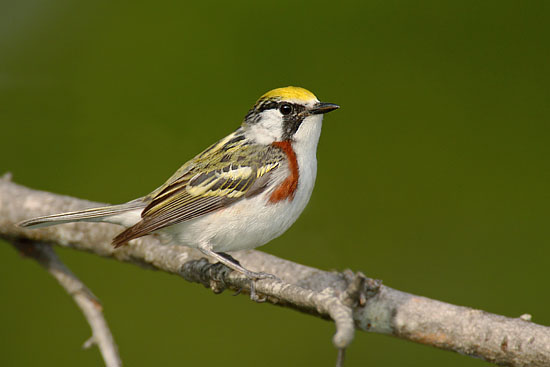
Chestnut-sided Warbler
Photo: Brandon Holden
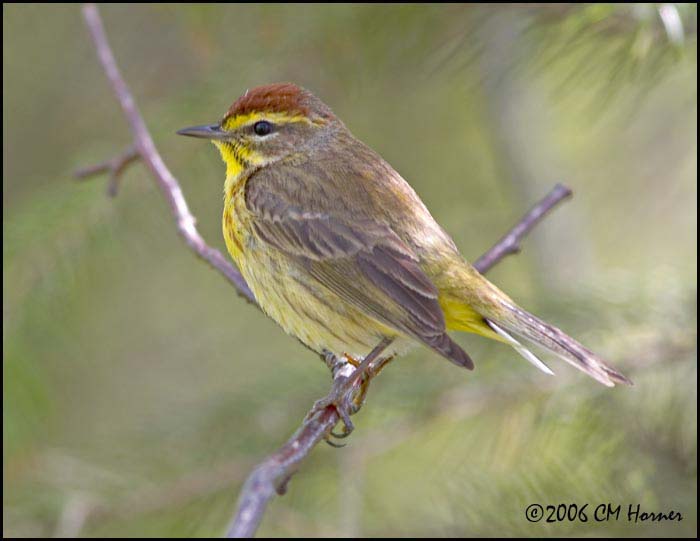
Palm Warbler
Photo: Carol Horner
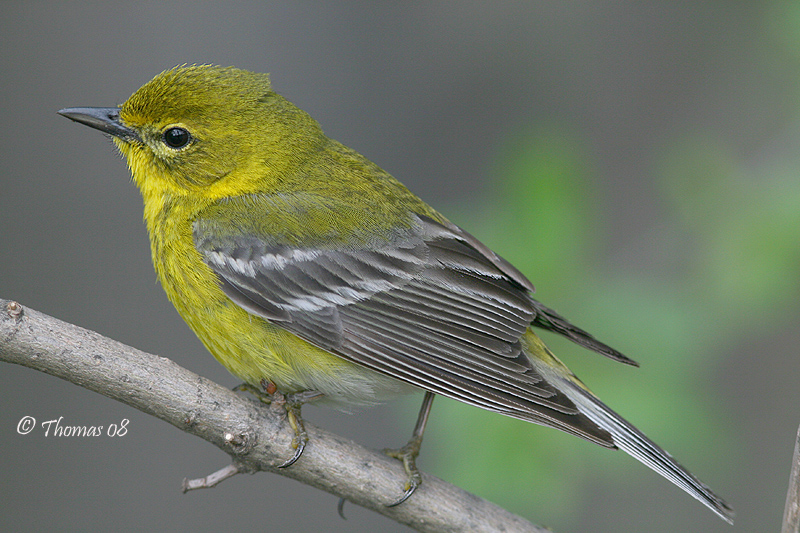
Pine Warbler
Photo: Tom Thomas
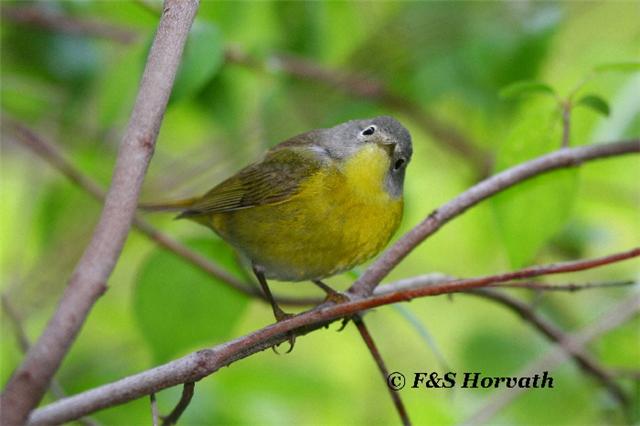
Nashville Warbler
Photo: Frank and Sandra Horvath
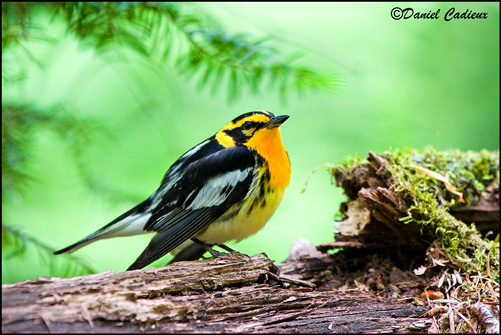
Blackburnian Warbler
Photo: Daniel Cadieux

Hooded Warbler
Photo: Tom Thomas
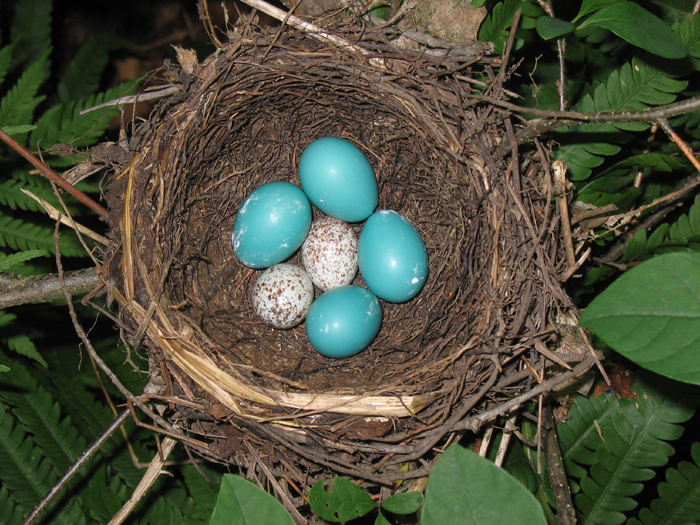
Wood Thrush
Photo: Mark Peck
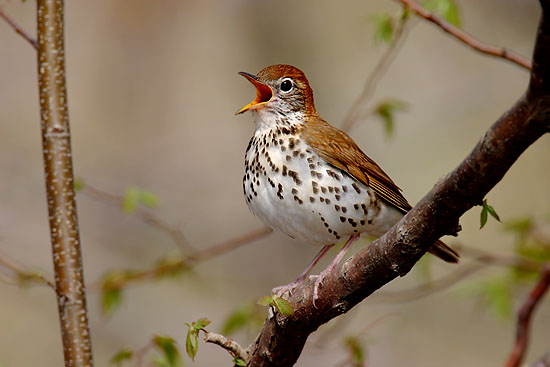
Wood Thrush
Photo: Brandon Holden
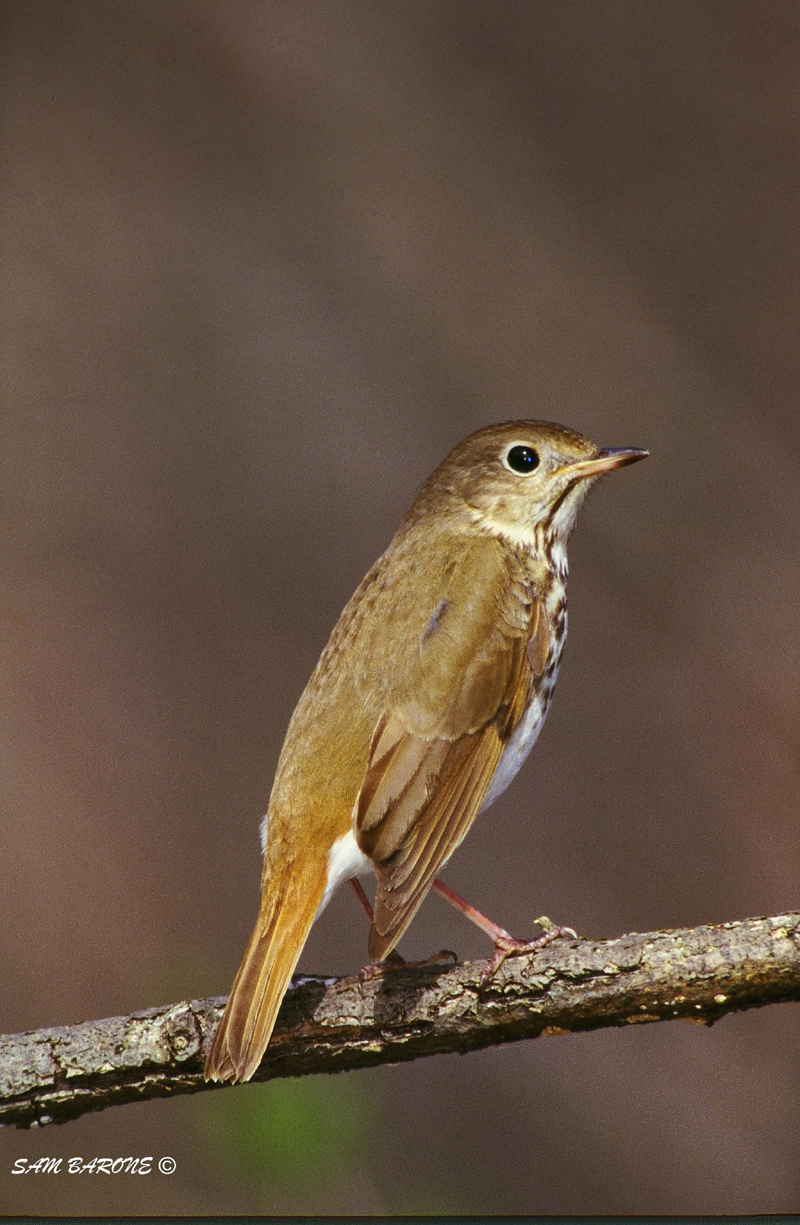
Hermit Thrush
Photo: Sam Barone
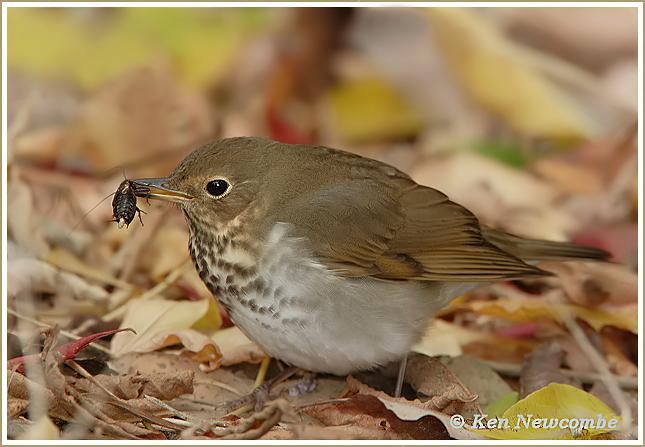
Swainson's Thrush
Photo: Ken Newcombe
.jpg)
Wood Thrush
Photo: Mark Peck
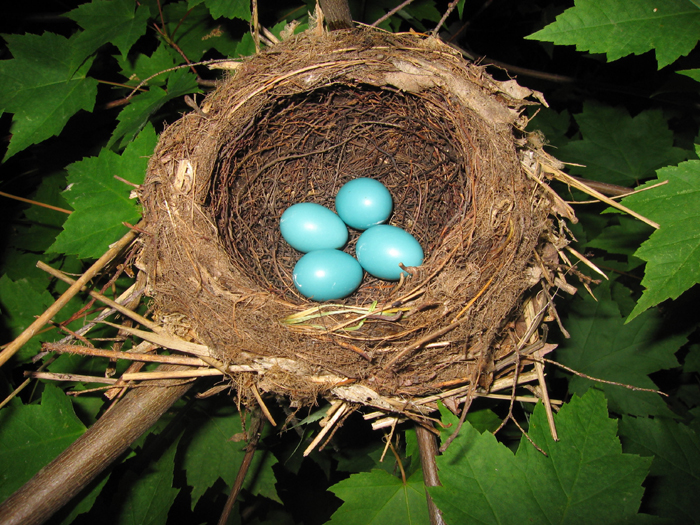
Wood Thrush
Photo: Mark Peck
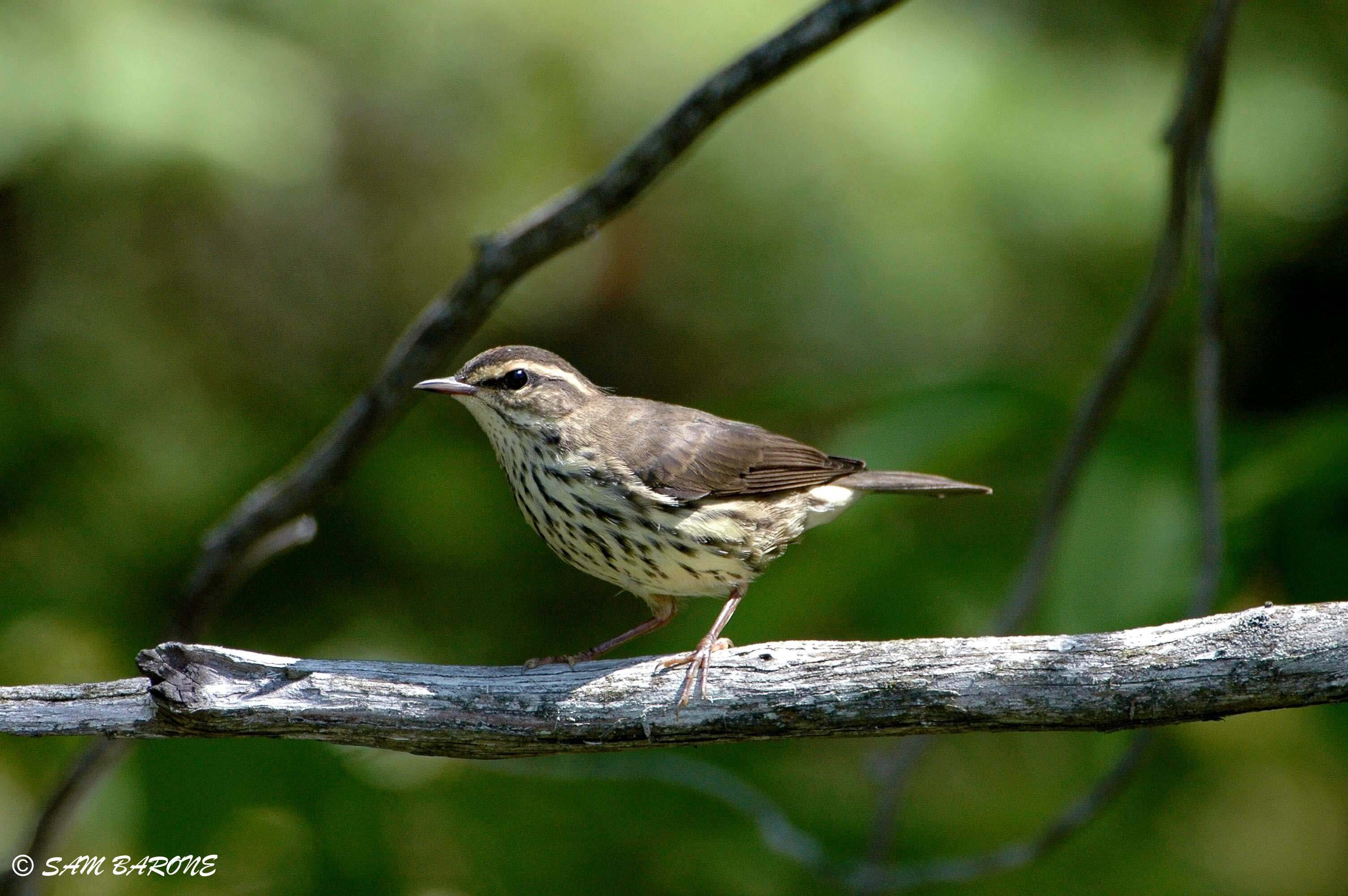
Northern Waterthrush
Photo: Sam Barone

Red-eyed Vireo
Photo: Frank and Sandra Horvath
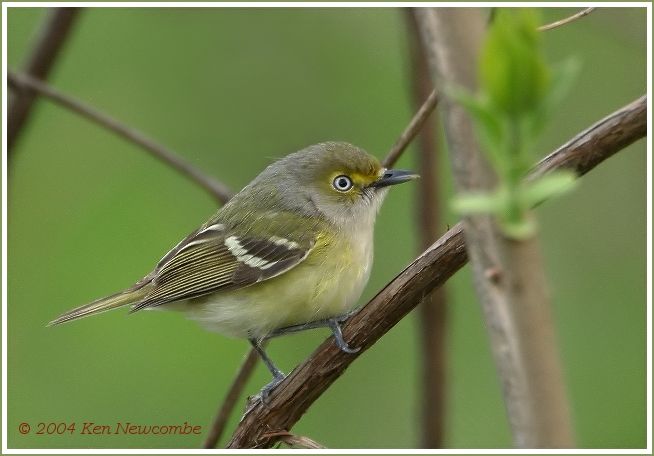
White-eyed Vireo
Photo: Ken Newcombe
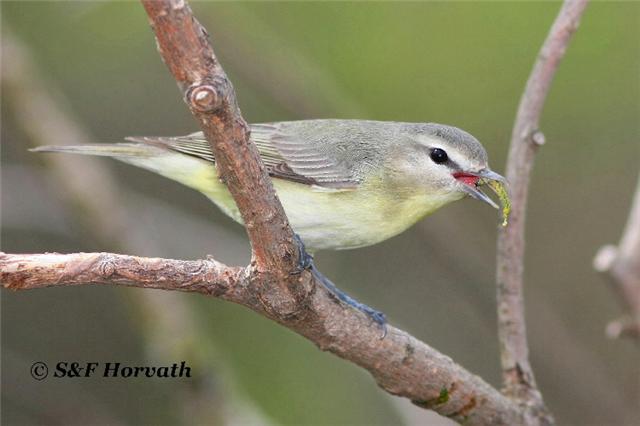
Philadelphia Vireo
Photo: Sandra and Frank Horvath

Blue-headed Vireo
Photo: Sandra and Frank Horvath
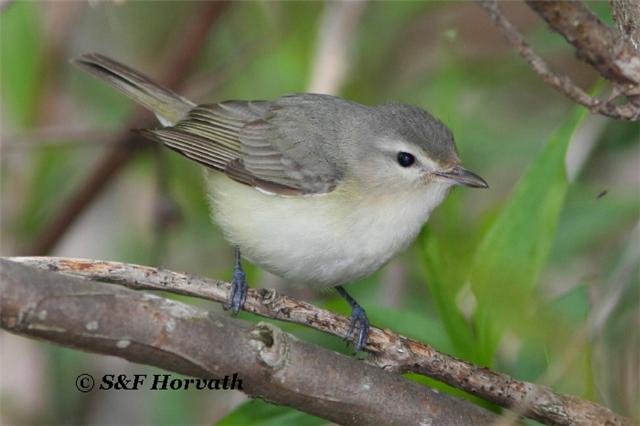
Warbling Vireo
Photo: Sandra and Frank Horvath
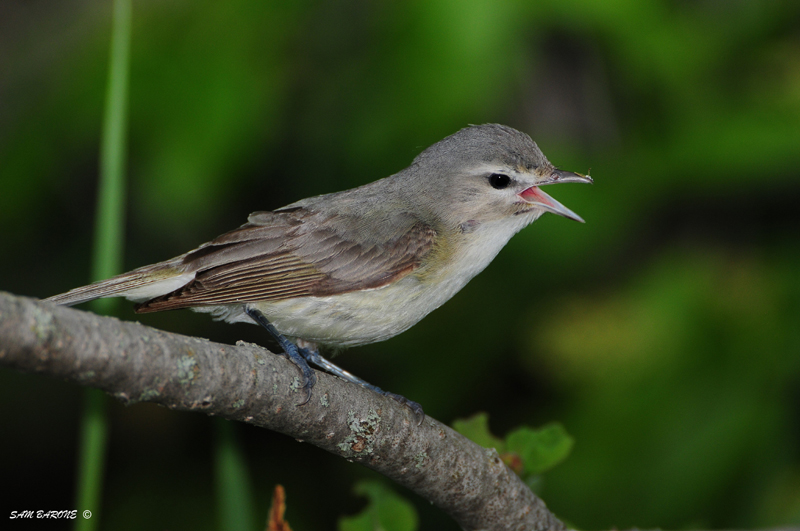
Warbling Vireo
Photo: Sam Barone
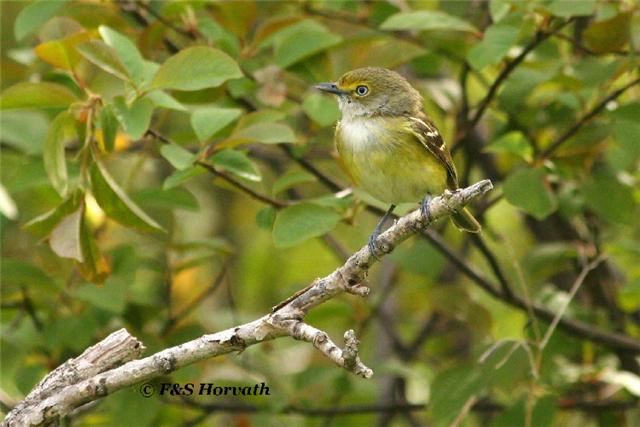
White-eyed Vireo
Photo: Frank and Sandra Horvath

Brewer's Blackbird
Photo: Sandra and Frank Horvath

Brewer's Blackbird
Photo: Sam Barone
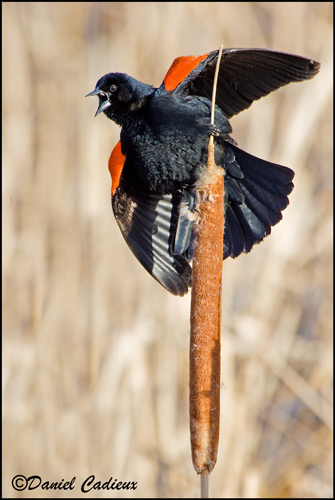
Red-winged Blackbird
Photo: Daniel Cadieux

Yellow-headed Blackbird
Photo: Jean Iron

Brewer's Blackbird
Female
Photo: Jean Iron
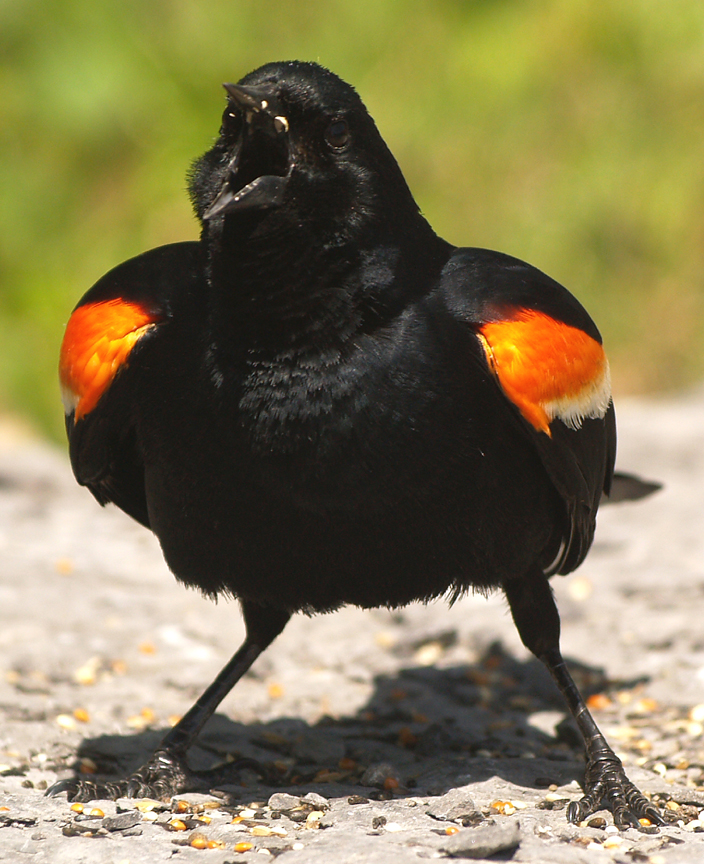
Red-winged Blackbird
Photo: Francine Ouellette

Red-winged Blackbird
Photo: Carol Horner
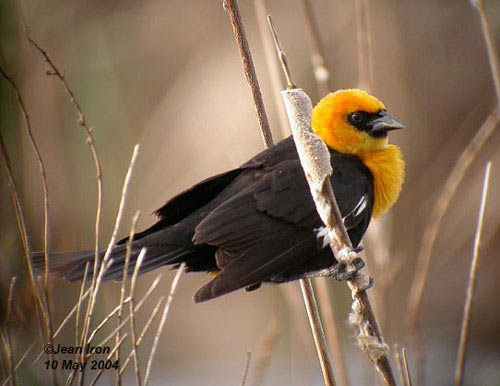
Yellow-headed Blackbird
Male
Photo: Jean Iron
Niagara River Gull WatchTop
October 25 2025 (Saturday) Niagara Hotspots
Leader: Marcie Jacklin, Bob Highcock, Jean Hampson.
On Saturday October 25, Marcie Jacklin, Bob Highcock and Jean Hampson lead the Niagara Hotspots outing for the Ontario Field Ornithologists. We had a great day with 20 participants and 52 species of birds observed at five of Niagara?s most productive hotspots. The day started at Grimsby Wetlands, a former sewage lagoon that has been transformed into a beautiful area to locate marsh birds. Highlights here included some birds that were lifers for some of our members such as Northern Pintail and Rusty Blackbird. Other waterfowl included numerous Wood Ducks, American Coots, Green Winged Teal, Gadwalls and American Wigeon. Surprisingly, two Purple Martins were still present near their nesting boxes. The next hotspot we visited was the 40 Mile Creek Side Trail. This municipality of Grimsby run park just had a new bridge installed over the creek which makes the easy trail very convenient to access. Since we had a large group, we split into two with Marcie leading from the Lake end of the trail and Bob and Jean from the Olive street end. Here we had Brown Creepers, both Red and White- breasted Nuthatches, Carolina and Winter Wren and Ruby and Golden-Crowned Kinglets. We had a quick flyby of White-winged Scoters on the lake and our lone Black Duck of the day was there among the Mallards. We drove to the Outlet Collection ponds in Niagara-on-the-Lake to search for Wilson?s Snipe that were being reported there. We were able to see three individuals well through scopes. Common Gallinules had nested here this summer and one juvenile remained for us to photograph. After a quick lunch break, we drove the short distance to the Niagara College Ponds. The biggest attraction here was a family of Trumpeter Swans, two adults with five juveniles. We also had an Eastern Phoebe here. We ended the day in St. Catharines at Malcolmson Eco Park. Two Fox Sparrows foraging along the trail were a highlight. We had great looks at some Hermit Thrush and Cedar Waxwings. It was a full day that was enjoyed by all.
December 8 2024 (Sunday) Niagara Gull Weekend
Leader: Sarah Lamond, Bill Lamond.
OFO staged another successful Gull Weekend On Decemeber 7th and 8th in the Niagara area. On Saturday Bob Highcock and Jean Hampson led a group along the Welland Canal. in the afternoon Justin Peter gave an informative talk on Gulls. Many birders then attended the late afternoon gull flyby at Niagara On The Lake. On Sunday Dec. 8, two fieldtrips were organized : Sarah and Bill Lamond's group had a successful outing: Sarah's report attached : [https://ebird.org/tripreport/299468](https://ebird.org/tripreport/299468) A second group led by Gis Segler and William Konze birded from Dufferin Islands. The 30 people on session 2 of the Niagara Gull Weekend trip on Sunday December 8 were greeted with a balmy +7C with only a light breeze. We spotted all 8 expected gulls on the river including 1 Little Gull (seen at the flyby in Niagara on the Lake) as well as 1 Glaucous Gull. The most interesting gull of the day was likely Lesser Black-backed x herring gull hybrid seen at the control gates. In total we manged 57 species including the long staying Black-throated Gray Warbler which was still flitting about in the tree tops in Port Weller.The warbler and Little Gull were lifers for several birders. [https://ebird.org/tripreport/300012](https://ebird.org/tripreport/300012)
October 26 2024 (Saturday) Niagara Hotspots
Leader: Bob Highcock, Jean Hampson.
On Saturday October 26, four OFO members joined Bob and I as we introduced them to some of the Niagara Region?s top birding hotspots. We met at 8 am at the Grimsby Wetlands and immediately began finding interesting birds such as a colourful Fox Sparrow hopping on the path. An American Bittern had been reported here the previous day so we searched for a glimpse of this elusive bird from the Watchers Pond observation platform. We did see a pair of Rusty Blackbirds which happened to be life birds for some of our participants. Other birds observed were Song and Swamp Sparrows, Wood Ducks, Green-winged Teal, Northern Shoveler, American Coot, Lesser Yellowlegs, and a Marsh Wren. Then I spotted the American Bittern and everyone had great looks at it through their binoculars, camera and our scope. Next we travelled to 40 Mile Creek, also in Grimsby, and had some incredibly close views of Golden-crowned and a single Ruby-crowned Kinglet. We were all entertained by a singing Carolina Wren and three feisty Winter Wrens. After a lunch break we headed to Niagara-on -the -Lake?s Outlet Collection ponds to look for the Wilson?s Snipes that had been reported throughout the week. We were not disappointed and found three of the reported birds. The ponds behind Niagara College were also productive with Gadwalls, American Wigeons and a single Pied-billed Grebe. We finished the day at Malcolmson Eco Park in St.Catharines, introducing the group to one of the best birding spots in the region during migration. We had a calling Raven flyover and our only Brown Creeper for the day. We totalled 44 species of birds on our checklists. As we parted from our happy guests one of them told us that we were great ambassadors for birding in Niagara! Jean Hampson
October 28 2023 (Saturday) Niagara Hotspots
Leader: Marcie Jacklin.
October 28, 2023 Niagara hotspots including the Eastern Lake Erie Shoreline Leader : Marcie Jacklin OFO Niagara hotspots including the Eastern Lake Erie Shoreline On Saturday October 28th, 15 OFO participants gathered at Grimsby Wetlands or Biggar Lagoons. Although quiet at this site we were treated to some early migratory ducks like Northern Shoveler, American Wigeon, Northern Pintail and Green-winged Teal. The biggest challenge was a flock of shorebirds. We tallied at least 9 Dunlin but a Dowitcher was also seen. The next stop was the Port Dalhousie Yacht Club in hopes of seeing a Jaeger or Brant moving through. Unfortunately, it was also very quiet but we managed to get good looks at a Dunlin and Coot. After a quick break we dashed off to Fort Mississauga where a Jaeger was reported. Some people had distant views of a jaeger thanks to Ryan Griffiths. Our last stop was Port Weller East. The first birds we saw were 2 Common Ravens and we noticed they were mobbing 2 Turkey Vultures! Most of the group managed to walk all the way out to the pier end and added some more waterfowl to our list ? Surf Scoter, Bufflehead and a confusing Teal showing a blue patch in the wing. Our reward at the end was another Dunlin and a fly-by Snow Bunting. It was a beautiful fall day to be out in the field with fellow birders.
December 5 2021 (Sunday) Niagara River
Leader: Jeremy Bensette, Marcie Jacklin.
OFO Niagara Gulls Outing A group of approximately twenty enthusiastic birders joined Jeremy Bensette and Marcie Jacklin for the annual OFO Niagara Gulls Outing on Sunday, December 5, 2021. The group size was significantly reduced this year as a health precaution, but we had great birding success anyway. We started at the Adam Beck overlook, where everyone had satisfying views of as many as three adult Iceland Gulls. Contrary to the usual route for this outing, we then headed to Queen's Royal Park at Niagara-On-The-Lake to look for the very rare vagrant Razorbills that had been reliably seen here in recent days. This location provided nice views of as many as four Razorbills swimming and feeding at the mouth of the Niagara River, as well as several Red-throated Loons, a flyover group of redpolls, and a variety of common ducks and water birds. After a quick break for lunch we visited the Queenston docks where at least seven adult Little Gulls put on a show among hundreds of Bonaparte's Gulls and a flock of about a hundred Snow Buntings flew over. From here we continued south along the river, stopping briefly at the Queenston Heights overlook, where birders sometimes see Black Vulture, and the Whirlpool, where in recent years Black-legged Kittiwake and Black-headed Gull had been seen, but we did not spot these rarities at these spots. After driving past The Falls, our group visited Dufferin Islands parking area, where we saw the long-staying Black-bellied Whistling-Duck, a resident at this location this fall season, but generally a very rare vagrant species anywhere in Canada. At this point the group was thinning out, and those who continued crossed the road to view the thousands of roosting gulls in the rapids above The Falls. We found eight adult Lesser Black-backed Gulls and about ten Great Black-backed Gulls with our spotting scopes, then moved further upriver to find another six adult Lesser Black-backed and two juvenile Glaucous Gulls among the roosting Herring Gulls and Ring-billed Gulls. The day ended with eight gull species, as well as several other great birding highlights like quality views of two provincial rarities. Several of the species we saw were new additions to the life lists of many members of the group, and this was several members' first opportunity to observe the spectacle of Niagara region's winter gulls. A big thanks to Marcie Jacklin for co-leading the trip, to Kate Derbyshire for helping with scopes, bird finding, and eBird lists (links below), to those who participated in the group, and to those who helped to organize the event. Have a great winter, and good birding! Jeremy Bensette Ebird checklist links Niagara--Adam Beck (ON): [https://ebird.org/checklist/S98622599](https://ebird.org/checklist/S98622599) Niagara-on-the-Lake--Queens Royal Park: [https://ebird.org/checklist/S98622547](https://ebird.org/checklist/S98622547) Niagara--Queenston (ON): [https://ebird.org/checklist/S98622584](https://ebird.org/checklist/S98622584) Niagara--Queenston Heights overlook: [https://ebird.org/checklist/S98622506](https://ebird.org/checklist/S98622506) Niagara--Dufferin Islands: [https://ebird.org/checklist/S98622473](https://ebird.org/checklist/S98622473) Niagara--Upper Falls (ON): [https://ebird.org/checklist/S98622456](https://ebird.org/checklist/S98622456) Niagara--Control Gates: [https://ebird.org/checklist/S98622438](https://ebird.org/checklist/S98622438)
December 2 2018 (Sunday) Niagara River Gull Watch
Leader: Jeremy Bensette, Marcie Jacklin, Josh Vandermeulen.
Yesterday was another great time at the annual OFO Niagara Falls Gulls trip! We did not take an exact count of attendees, but we estimate that this event was attended by approximately 100 birders. This was a bit less than last year, likely due to the rainy weather forecast for Sunday morning. That rainy weather ceased before we started, and the sun even came out for a good portion of the day! Eight species of gulls were identified by the group, despite high temperatures and high water level above the falls. We started the day at 9 am at Sir Adam Beck Generating Station, where we enjoyed at least two Iceland Gulls and a Great Black-backed Gull among many Herring and Ring-billed Gulls. We also saw an adult Little Gull among a flock of Bonaparte's Gulls at the Roosting Rocks a few hundred metres up river. We stopped briefly at the Whirlpool, where we watched a flock of a few hundred Bonaparte's Gulls resting and a Red-tailed Hawk perched on a very low branch, seemingly watching the turbulent river. By late morning most of the group made it to the Upper Falls viewing area, where we were granted views of an immature Glaucous Gull, a probable hybrid Glaucous x Herring Gull, a couple more Iceland Gulls, multiple Lesser Black-backed Gulls of various ages, and many Great Black-backed Gulls. Non-gull highlights above the falls included as many as three Harlequin Ducks and two Dunlin perched between the rapids above the falls, a local breeding pair of Peregrines occupying a high ledge overlooking downtown Niagara Falls, and a Black-crowned Night Heron perched very close to the driveway in Dufferin Islands Park. We did not visit the Queenston boat launch area as a group this year because of the high volume of boaters using that area lately, but many individuals who did check out this spot were rewarded with a few Little Gulls. Also, it was reported that 7 Little Gulls flew by with around 1400 Bonaparte's Gulls at the mouth of the Niagara River at Niagara-on-the-Lake around sunset. We would like to thank everyone who participated in this fun and social birding event, especially Justin Peter and Mark Peck for Saturday's ID workshop, and the various great people who helped with organizing the weekend. Have a great winter birding season!
December 3 2017 (Sunday) Niagara River Gull Watch
Leader: Jeremy Bensette, Marcie Jacklin, Josh Vandermeulen.
In perfect gull-watching weather on Sunday 4 December 2016, over 130 OFO members and friends spend an enjoyable day birding the Niagara River. The purpose of the trip was to identify and age the largest number of gull species and see other good birds on the River. It was a treat to see everyone from all over Ontario, and we were pleased to welcome our American friends from neighbouring states. Having so many sharp-eyed birders worked in our favour. Our group saw 10 species of gulls listed here in checklist order: Bonaparte's Gull: numerous and almost all were adults. Little Gull: one adult seen very well from the boat launch at Queenston. *Black-headed Gull: one adult flying and resting on the water put on an excellent show at Whirlpool, though was a challenge to pick out from above at the viewing areas. Ring-billed Gull: common on the River. Herring Gull: common on the River at Adam Beck and above the Falls. Thayer's Gull: one adult at Adam Beck was seen well. One juvenile below the Falls was seen well by a group that braved the wet mist. Kumlien's Iceland Gull: almost all the Iceland Gulls we see on the Niagara River are the kumlieni subspecies which breeds in the eastern Canadian Arctic. At Adam Beck we saw two adults and 1 third winter. Above the Falls out from the barge viewing area was one adult. Lesser Black-backed Gull: several adults and a juvenile at Adam Beck, and at least five adults and a juvenile seen from the control gates area. Glaucous Gull: one adult out from control gates area. Great Black-backed Gull: one adult at Adam Beck, two at Queenston, and least four adults and one juvenile above the Falls and at the control gates. Other Species on or near the River: four adult male Harlequin Ducks seen well from the viewing areas near the barge. At least five Tufted Titmice at Dufferin Islands were eating peanuts from people's hands, also a Red-bellied Woodpecker, Carolina Wren, Winter Wren and Brown Creeper. A Pine warbler was in a pine tree on the median between the Greenhouse and the River. Black Vultures were seen all day on various roofs and chimneys in Lewiston NY (up to 7 at one time), from the pull-off on the road below Brock Monument that leads down the hill to Queenston, adult Bald Eagle at Queenston.
December 3 2017 (Sunday) Niagara River Gull Watch
Leader: Jeremy Bensette, Marcie Jacklin, Josh Vandermeulen.
Well over 100 birders joined Marcie Jacklin, Jeremy Bensette and I for the annual OFO gull trip along the Niagara River yesterday, December 3, 2017. We were treated to beautiful weather conditions - nearly 10 degrees, sunny and calm - and a wide variety of interesting birds were seen, including nine species of gulls as well as the Thayer's subspecies of Iceland Gull. The OFO group began at the overlook for the Adam Beck/Robert Moses power plants in the morning, then birded the stretch of river from Niagara Falls to above the Control Gates during the late morning and early afternoon. Due to the size of the OFO group, small factions broke off throughout the day, covering many locations. Below are some of our highlights from an excellent day along the mighty Niagara River. My apologies if I have missed any sightings. Due to the size of the group I am sure there were several notable sightings that are not covered here. Adam Beck overlook - several "Kumlien's" Iceland Gulls of various ages, including a nice comparison of several 2nd winter birds. One of the 2nd winter Iceland Gulls at Adam Beck appeared to lie more on the Thayer's side of the spectrum, while an adult "Thayer's" Iceland Gull was also viewed by some. Two Peregrine Falcons were seen here as well. Niagara Falls - the Black-legged Kittiwake was seen well by most birders who tried for it. The bird would disappear for half an hour at a time but was frequently observed flying in and out of the mist at the base of the Horseshoe Falls, providing excellent looks at its distinctive juvenile plumage. A life bird for many! Above the Falls - the group of five Harlequin Ducks were in their usual location, amongst the rocks mid-river and across from the Floral Showhouse building (greenhouse). At least eight different Lesser Black-backed Gulls of various ages were found in the stretch of river between the edge of the Falls and the Control Gates, while "Kumlien's" Iceland Gull and Glaucous Gull were also observed here. A Snowy Owl spent a second consecutive day at the south end of the concrete breakwall extending south from the Control Gates. Two Common Ravens provided entertainment near the Control Gates as they flew around and exhibited some pair-bonding behaviour. I heard second hand that someone watched one of the Common Ravens steal the remains of a dead bird from the Snowy Owl! Common Raven has only recently become a member of the avifauna of Niagara as the species slowly extends its range to the south in southern Ontario. Three Northern Rough-winged Swallows were lingering on the river, flying back and forth from the area around the barge to the Control Gates. Northern Rough-winged Swallows are often seen here into early November, but it is unusual for them to linger into the winter birding season. This is only the second record out of the last 10 years during "winter" in Ontario. Queenston - The Black Vultures were active on this warm sunny day and several groups saw individuals gliding over the river near Queenston. Some of us were not so lucky and our only views of Black Vulture were of 1-3 birds roosting on the roof of the usual church across the river in Lewiston, NY. The Queenston docks provided good views of up to three Little Gulls as they foraged along the river to the north. Crystal Beach - While a little ways away from the Niagara River, several groups of birders reported success in observing the Brant at Crystal Beach Waterfront Park, located on the north shore of Lake Erie between Point Abino and Fort Erie. This bird does occasionally wander along the shoreline, but is usually on the beach immediately west of the parking area at Crystal Beach Waterfront Park. Thank you to Marcie and Jeremy for assisting me with leading this hike, and thank you to all the other birders who were so generous in assisting with identification and aging of gulls with their fellow peers. Additionally, I want to give a special shout out to Justin Peter and Mark Peck who put together an excellent gull workshop and quiz at the Niagara Falls Public Library on the Saturday afternoon. I hope that a great time was had by all, and I'm looking forward to next year!
November 29 2015 (Sunday) Niagara River Gull Watch
Leader: Jean Iron, Ron Tozer.
In lovely weather on Sunday 29 November 2015, over 125 OFO members and friends spend an excellent day birding the Niagara River. The purpose of the trip was to identify and age the largest number of gull species and see other good birds on the River. We were pleased to have so many birders interested in gulls and to be accompanied by keen young birders whose sharp eyes helped with spotting. Our group saw 9 species of gulls listed here in checklist order: Bonaparte's Gull: very numerous and almost all were adults. In the afternoon, the leucistic (almost all white) Bonaparte's Gull flew up and down the River at Adam Beck and gave excellent views. Black-headed Gull: one adult reported at the fly-past at Niagara-on-the-Lake. Ring-billed Gull: common on the River. Herring Gull: We saw hundreds especially above the Falls near the barge and control gates where there were feeding flocks. Thayer's Gull: one adult above the Falls was seen well as it stood for a while and flew around near the barge. Kumlien's Iceland Gull: almost all the Iceland Gulls we see on the Niagara River are the kumlieni subspecies which breeds in the eastern Canadian Arctic. At Adam Beck we saw 2 adults and 1 third winter. Above the falls and at the control gates there were several adults, one of which near the barge provided great comparison with adult Thayer's Gull. Lesser Black-backed Gull: almost full adult and juvenile at Adam Beck and three adults above the Falls. Glaucous Gull: Three adults above the Falls. Great Black-backed Gull: one adult at Adam Beck and three adults above the Falls and at the control gates. Small numbers so far this year. A possible first winter California Gull was reported at the control gates at Chippawa above the Falls. We're hoping someone will get better views and photos to confirm it. Other Species on or near the River: A first year male Harlequin Duck just north of Adam Beck was visible from the lookout. At least three Tufted Titmice at Dufferin Islands were eating peanuts, also a Red-bellied Woodpecker. Two late Blue-gray Gnatcatchers were at Dufferin Islands along with two Brown Creepers and Carolina Wrens. We ended with 10 Black Vultures in a row on a roof in Lewiston NY, seen from the pull-off on the road below Brock Monument that leads down the hill to Queenston. We thank everyone who came on today's trip for their energy and enthusiasm. A great team spotted the birds and helped everyone see the gulls, including Mark Ansell, Maris Apse, Eleanor Beagan, Mike and Ken Burrell, Willie D'Anna, Bill Gilmour, Tim Lucas, Kevin McLaughlin, Mike Nelson, Betsy Potter and Ron Pittaway. It was a very successful day.
November 30 2014 (Sunday) Niagara River Gull Watch
Leader: Jean Iron, Ron Tozer.
In very enjoyable weather on Sunday 30 November 2014, over 100 OFO members and friends spend an excellent day birding the Niagara River. The purpose of the trip was to identify and age the largest number of gull species and see other rarities on the River. It was impressive to have so many birders interested in gulls, and we were pleased to be accompanied by keen young birders whose sharp eyes helped with spotting. Our group saw 9 species of gulls listed here in checklist order: Bonaparte's Gull: very numerous and all were adults. In the morning, the leucistic (almost all white) Bonaparte's Gull was on the roosting rocks on the American side, and seen by some from near the Butterfly Conservatory on the Canadian side. In late afternoon, we saw it well at the flypast at Niagara-on-the-Lake in a flock of Bonaparte's Gulls leaving the Niagara River to spend the night on Lake Ontario. Little Gull: one first winter at Whirlpool and one adult flying in the mist below Rainbow Falls. Ring-billed Gull: common on the River. Herring Gull: We saw hundreds especially above the Falls in the barge area where there were large feeding flocks. We noted all age classes, and picked out a few juvenile "Northern" Herring Gulls still in full juvenile plumage at this time, whereas southern juvenile Herring Gulls that hatched earlier this year have already molted into first winter plumage. Thayer's Gull: one adult and one third winter at Adam Beck. Kumlien's Iceland Gull: almost all the Iceland Gulls we see on the Niagara River are the kumlieni subspecies which breeds in the eastern Canadian Arctic. At Adam Beck we saw at least four adults, one second winter and one juvenile. Above the falls and at the Control Gates at Chippawa were several adults and a juvenile, and in the mist below Horseshoe falls a juvenile flew about putting on a great show. Lesser Black-backed Gull: one third winter at Adam Beck and several adults above the Falls. Glaucous Gull: one juvenile at Adam Beck and two juveniles above the Falls. Great Black-backed Gull: one adult at Adam Beck and several adults and a juvenile above the Falls and at the Control Gates. Other Species on or near the River: Many saw the rarest bird of the day, which was the Eurasian Tree Sparrow at 15732 Niagara River Parkway near Niagara-on-the-Lake. We are most grateful to the home owners for this viewing opportunity. A Purple Sandpiper was on the traditional rocks right of the barge. At least two Tufted Titmice at Dufferin Island were eating peanuts at the feeders. Up to 10 Black Vultures were either on roofs and chimneys in Lewiston or flying above the town. A Pomarine Jaeger at Niagara-on-the-lake was seen several times during the day, but did not reappear after about 3:30 p.m. However, at that location were at least two Red-throated Loons and many Horned Grebes. Two Peregrine Falcons were at Adam Beck and one flew over the Falls. Bill Read was available to sell the Peterson Gull Guide by Howell and Dunn, an invaluable resource for the serious gull watcher. For tips and information about gull watching, please [click here](/site/page/view/articles.gulls). We thank everyone who came on today's trip for their energy and enthusiasm. We are indebted to those who helped get people on the birds and make the day such a success.
December 1 2013 (Sunday) Niagara River Gull Watch
Leader: Jean Iron, Ron Tozer.
Today's gull trip was a great success. About 200 OFO members and friends attended the trip. We were delighted see so many birders interested in gulls, and were impressed by the number of young birders. The purpose was to see and age the largest number of gull species, and enjoy seeing many other rarer birds on the Niagara River.
Our group recorded 11 species of gulls are below in checklist order.
Black-legged Kittiwakes - 2 juveniles below the Rainbow Falls were seen well by all.
Bonaparte's Gull ? Adults. The numbers of Bonaparte's dropped off this week. All birds noted were adults.
Little Gull - The birders who went to the evening flypast at Niagara-on-the-Lake saw one adult.
Franklin's Gull at railway bridge over Niagara River at Fort Erie seen by some who went for the Lark Sparrow.
Ring-billed Gull - Common on the River.
Herring Gull - 100s of all age classes along the river. We also saw several juvenile "Northern" Herring Gulls. They are recognized at this time of year by their very dark brown plumage and still being in full juvenile plumage, whereas most "Southern" Herrings that hatched earlier in the year have now molted into first winter plumage.
Thayer's Gull - at least one adult at Adam Beck and an adult on the wall at the Control Gates at Chippawa.
Kumlien's Iceland Gull - almost all of the Iceland Gullsseen at Niagara are the kumlieni subspecies which breeds in the eastern Canadian Arctic. We saw about 4 juvenile/first winter birds and several adults at Adam Beck, and two adults on the wall at the Control Gates at Chippawa above the Falls.
Lesser Black-backed Gull - several adults at the Control Gates at Chippawa and a second winter and an adult at Adam Beck. This European Gull is now regular in increasing numbers on the river. The origin of many of our birds may be Greenland, where this species colonized in recent years.
Glaucous Gull - third winter in the middle of the River at the Control Gates and a juvenile at Adam Beck.
Great Black-backed Gull - many adults, several juveniles and other age classes mostly above the Falls and at Adam Beck.
Other Species: the group recorded about 70 species on or near the River. Here are some highlights: the first winter Red Phalarope provided excellent views at the barge area above the Falls; 2 Purple Sandpipers on the traditional rocks right of the barge; 2 adult Peregrines: one at Adam Beck stalking Bonaparte's Gulls and one right of the barge in the middle of the river; Black Vulture in a conifer across the River at Lewiston; Lark Sparrow at No. 793 on the Niagara River Parkway at Central Avenue in Fort Erie. We thank the gracious home owners who have bird feeders and welcome birders to see the Lark Sparrow.
Bill Read was on hand to sell the Peterson Gull Guide by Howell and Dunn and Howell's book on Molt in North American Birds, both excellent resources for serious birders.
Gull watching at Niagara should remain excellent throughout December.
December 4 2011 (Sunday) Niagara River Gull Watch
Leaders: Ron Tozer, Jean Iron.
Eleven species of gulls were seen by about 75 birders on today's annual OFO field trip to the Niagara River. The outing was a great success in fine balmy weather and ideal viewing conditions.
1. Franklin’s Gull: one first winter bird on the Roosting Rocks between Adam Beck and the Butterfly Conservatory and seen early and late afternoon flying in its usual right corner near the Robert Moses Dam at Adam Beck.
2. Little Gull: 1 adult at the Queenston boat Launch and 2 out of 3 that flew to Lake Ontario at the fly‐past at Niagara‐on‐the‐Lake.
3. Bonaparte's Gull: abundant.
4. Ring‐billed Gull: common.
5. Herring Gull: abundant.
6. Thayer’s Gull: 2 adults at Adam Beck Overlook.
7. “Kumliens” Iceland Gull: 2 or 3 adults at Adam Beck overlook.
8. Lesser Black‐backed Gull: 1 first winter at Adam Beck, and several adults at Chippawa and Goat Island across the river.
9. Glaucous Gull: 1 first winter in the middle of the river at Chippawa.
10. Great Black‐backed Gull: many.
11. Black‐legged Kittiwake: one first winter flying with Bonaparte’s at the Whirlpool
*Candidate Slaty‐backed Gull: a very distant bird on the American side near Gull Island. However because of distance we could not see bright pink legs and string‐of‐pearls to confirm a Slaty‐backed.
*Possible hybrid gull: sleeping on the wall at Chippawa that had a darker mantle than Herring Gull and much head streaking. We were hoping for California Gull, but when it woke up it had pink legs and pale eyes.
OTHER BIRDS
Juvenile Pomarine Jaeger seen all day at Adam Beck.
3 female Harlequin Ducks on the wall at Chippawa.
1 Purple Sandpiper on its usual rock right of the barge above the Falls.
2 Peregrine Falcons on the American side behind the barge.
3‐5 Black Vultures seen at the overlook on the Niagara Parkway below Brock Monument and several seen at Adam Beck.
Hooded Mergansers at Dufferin Islands reservoir. Tufted Titmouse, Carolina Wren and Red‐bellied Woodpecker at feeders in Chippawa were seen by some of the group.
There were no reports of the Razorbill at Niagara‐on‐the‐Lake.
November 28 2010 (Sunday) Niagara River Gull Watch
Leaders: Ron Tozer, Willie D’Anna, Betsy Potter.
Over 82 OFO members and friends enjoyed a day of good weather, gulls and other birds along the Niagara River today. Our main objective was to see gulls, and ten species were found. Most participants got to see all of them well.
We started at the Adam Beck Overlook where the following were noted:
- California Gull: 1 adult
- Thayer’s Gull: 1 juvenile and 1 adult
- Iceland Gull: at least 2 juveniles and 2 adults
- Lesser Black‐backed Gull: 2 juveniles and 2 adults
Next we visited the Whirlpool where we viewed:
- Little Gull: 2 adults
- Eastern Screech‐Owl: 1 red morph roosting in a red cedar adjacent to the parking lot, spotted by the amazing eyes of Betsy Potter! This owl was the highlight of the day for many.
At this point we split the group, with some heading to the Control Gates above the falls and others to Tim Horton’s and Thomas Street in Chippawa. An adult Lesser Black‐backed Gull was found at the Control Gates and there was a Red‐bellied Woodpecker and a Tufted Titmouse at Thomas Street.
The groups joined up again and we proceeded to Dufferin Island where we parked and walked to look at the river above the falls. Here we observed:
- Little Gull: 1 adult
- Lesser Black‐backed Gull: 2 adults
- Glaucous Gull: 1 juvenile
- Tufted Titmouse: 1
Some participants then went on to Fort Erie to look at the Tundra Swans along the river and the Cackling Goose near the Peace Bridge. Others went back to Sir Adam Beck to look at the gulls there again.
Trip leaders Willie D’Anna, Betsy Potter and Ron Tozer would like to thank everyone on today’s trip for their enthusiasm and participation in locating birds. It was a great group effort.
29 November 2009 Niagara River Gull Watch
Leaders: Ron Tozer, Jean Iron.
Today’s annual OFO field trip to the Niagara River was a great success. Between 50‐60 birders attended the outing in fine balmy weather and ideal viewing conditions. We saw a respectable 10 species of gulls. Most people were interested in learning the fine points of gull identification. We had excellent views of perched Thayer’s Gulls at Adam Beck Lookout allowing the group to compare them to Herring Gulls and “Kumlien’”’ Iceland Gulls.
- Little Gull: 1 adult at the Whirlpool and another adult above the Falls near the barge.
- Bonaparte’s Gull: Abundant.
- Ring‐billed Gull: Common.
- California Gull: Third basic (winter) individual seen at about 3 p.m. from Adam Beck Overlook flying around in front of American dam on the right side.
- Herring Gull: Abundant.
- Thayer’s Gull: 2 adults and 1 juvenile at Adam Beck Overlook and an adult at Chippawa in a feeding frenzy.
- “Kumlien’s” Iceland Gull: 6+ adults and 2 juveniles at Adam Beck, 1 juvenile at Chippawa and 1 juvenile at barge area.
- Lesser Black‐backed Gull: 8+ at Adam Beck, Chippawa and Goat Island on the American side.
- Glaucous Gull: 1 at Chippawa and 1 at Adam Beck.
- Great Black‐backed Gull: Many.
Some other birds seen were Hooded Mergansers at Dufferin Islands reservoir, Tufted Titmouse and Red‐bellied Woodpecker at feeders in Chippawa seen by some of the group, and 1 Tufted Titmouse at Dufferin Islands with Black‐capped Chickadees.
Gulls were very common today along the Niagara River. The anglers at the Queenston Boat Launch told us that Shiners (minnows) are plentiful this fall so the gulls have lots of food. The gull season often extends well into January, usually until there is a deep freeze.
We thank the many people who attended the trip and hope that you had an excellent day.
30 November 2008 Niagara River Gull Watch
Leaders: Ron Tozer, Jean Iron.
Today’s annual OFO field trip to the Niagara River was a huge success. We saw very respectable 10 species of gulls. Even with the threatening weather forecast close to 80 birders attended the outing. Most people were interested in learning the fine points of gull identification and how to age them.
- Little Gull: Adult at the Whirlpool.
- Bonaparte’s Gull: Abundant including one probable leucistic individual.
- Ring‐billed Gull: Common.
- California Gull: Second basic individual seen by members who stayed behind at Adam Beck when most of us went to the Whirlpool.
- Herring Gull: Abundant.
- Thayer's Gull: Adult at Adam Beck Overlook.
- Kumlien's Iceland Gull: 8+ at Adam Beck.
- Lesser Black‐backed Gull: 7+ at Adam Beck and Chippawa.
- Glaucous Gull: 2 at Chippawa.
- Great Black‐backed Gull: Many.
Other birds of note seen today were a Cackling Goose at Chippawa, Pied‐billed Grebe at Dufferin Islands reservoir, Tundra Swans at Bakers Creek, juvenile Common Loon south of Chippawa, Tufted Titmouse and Red‐bellied Woodpecker at feeders in Chippawa.
We thank the many people who attended and hope that they had an excellent day. There are still several weeks of good gulling at Niagara. The season often extends well into January usually until there is a deep freeze.
Reported by Ron Tozer and Jean Iron
Sunday, 2 November 2008 Grand Bend, Pinery Provincial Park, Kettle Point
Leader: Maris Apse.
Several flocks of birds including approximately 20 White‐winged Crossbill flew over as we assembled at the Sobeys in Grand Bend on a cool but sunny morning. Twelve vehicles with some 20 participants proceeded to the end of River Road as the main beach is closed until spring for ‘enhancements’ – major construction and landscaping. We scanned the lake and found two or three Red‐throated Loon with one eventually coming fairly close. There was relatively little movement of waterfowl and gulls, but we did see three distant Tundra Swan southbound.
Our second stop was at the Grand Bend lagoons on Mollard Line south of #81, where we walked to the third lagoon seeing some 14 species of waterfowl, including a Cackling Goose, some Ring‐necked Duck and Lesser Scaup, a few Gadwall and Long‐tailed Duck, 1 White‐winged Scoter(!), 12 to 15 American Coot and about 80 Bonaparte's Gulls. Two Pine Siskin, two American Goldfinch and a mixed blackbird flock flew over. We also saw two Song Sparrow here.
On the way to Greenway Road several Horned Lark were seen and we left some cars at the Lambton County Heritage Museum to reduce the convoy in Pinery Provincial Park. At our first stop at the big burn north of Burley Bridge, we located both juveniles and an adult Red‐headed Woodpecker, while a Red‐tailed Hawk soared over us. It was quiet at the bridge but Blake Mann was able to hear a Swamp Sparrow and a group photo was taken. I spotted a Ruffed Grouse sneaking off the roadside a bit before the Nippissing Beach trailhead and most of us were able to get some decent views of it as it hopped up on a log before flying off. The feeders at the Visitors Centre were not as busy as the ‘facilities’ but we saw House Finch and Tufted Titmouse here, before a ‘gate party’ lunch in the parking lot where we enjoyed the sun. We drove to Beach area #9 (no Pacific Loon) but Donald Pye spotted a soaring Bald Eagle with two Red‐tailed Hawk and a female Purple Finch landed near us.
While driving towards Kettle Point Blake heard Pine Siskin. Along Ipperwash Beach we saw a White‐winged Scoter and several female Black Scoters, a Killdeer as well as an adult and juvenile Great Black‐backed Gull. An adult Bald Eagle was perched out on the point and we found about 40 Black‐bellied Plover and a Dunlin on the shingles–some of the plovers were quite active giving us great looks at their black axillaries. En route south we all watched a female Northern Harrier. As we played hide and seek with several Horned Grebe, two sub‐adult Bald Eagles put on an aerobatics show.
Cedar Cove was our next stop, where we re‐found the adult Lesser Black‐backed Gull with many Horned Grebe, a closer Common Loon, Common Goldeneye, Greater Scaup, Hooded Merganser and the fifth Bald Eagle of the day. We were down to five or six vehicles at the Forest lagoons where we saw 10 Green‐winged Teal and the only Double‐crested Cormorant of the day.
Thanks to all the participants from near and far for their participation and contribution to a very enjoyable day of birding, walking and talking. The day's total species count was 66.
Reported by Maris Apse
2 December 2007 Niagara River Gull Watch
Leaders: Ron Tozer, Jean Iron.
The weather was much better and milder than expected for the 40 OFO members and friends who met this morning for the annual Niagara Gull trip. Viewing conditions were excellent. We saw 8 species of gulls: Bonaparte’s, Ring‐billed, Herring, Thayer’s, Iceland, Lesser Black‐backed, Glaucous and Great Black‐backed. Highlights were:
Adam Beck
1 adult Thayer’s Gull
5 adult and one juvenile "Kumlien’s" Iceland Gulls
2 adult Lesser Black‐backed Gulls
Above the Falls from Toronto Hydro Building to Chippawa
1 juvenile Glaucous Gull
5 adult Lesser Black‐backed Gulls
Feeders at Chippawa
1 Tufted Titmouse. The friendly homeowner on Thomas Street near Peter
Street has 5 Tufted Titmice coming to his well‐stocked feeders
2 Red‐bellied Woodpeckers
1 first winter White‐crowned Sparrow
Numbers of large gulls are high and there are thousands of Bonaparte’s Gulls on the River. A large feeding frenzy off Chippawa suggests that emerald shiners (minnows) are plentiful.
We thank everyone who came from many parts of Ontario, including the Bruce Peninsula, Ottawa, London, Algonquin Park and Toronto.
Reported by Ron Tozer and Jean Iron.
3 December 2006 Niagara River Gull Watch
A large group of about 60 birders met at Sir Adam Beck lookout at 9:00 a.m. There we had excellent views of the adult California Gull, an adult Thayer’s Gull and several adult “Kumlien’s“ Iceland Gulls, an adult Lesser Black‐backed Gull and an adult Little Gull. Some were fortunate to see a juvenile Black‐legged Kittiwake. We next checked the gorge below Niagara Falls where we narrowly missed two Black‐legged Kittiwakes seen by others, but saw an adult Little Gull, another adult Thayer’s Gull and an adult Lesser Black‐backed Gull. Above the Falls on a large boulder in the river were the two Purple Sandpipers in first basic plumage. They were life birds for many of the group. About noon the Slaty‐backed Gull in third basic plumage was relocated on the concrete wall at Chippawa. It flew to the middle of the river to feed, but returned briefly to the wall where most of the group had great views through their scopes. The Slaty‐backed Gull was a lifer for most of the group. At Niagara‐on‐the‐Lake we could not find the Razorbill seen earlier in the day, but had excellent views of an adult Red‐throated Loon molting into basic (winter) plumage still with some red on its throat. We also saw two adult Little Gulls, and a few members of the group saw a juvenile Black‐legged Kittiwake. Bonaparte’s Gull numbers were low at the fly‐past. The trip ended about 4:30 p.m.
Total of 11 gull species:
- Little Gull
- Bonaparte’s Gull
- Ring‐billed Gull
- California Gull
- Herring Gull
- Thayer’s Gull
- Iceland Gull (subspecies kumlieni)
- Lesser Black‐backed Gull
- Slaty‐backed Gull
- Great Black‐backed Gull
- Black‐legged Kittiwake
We had much help finding the Slaty‐backed Gull and thank everyone who came out for an exciting day of gull watching along the Niagara River.
Reported and led by Jean Iron and Ron Tozer.
27 November 2005 Niagara River Gull Watch
Leaders: Jean Iron and Ron Tozer.
Today's OFO gull trip to the Niagara River was a success, and the warm temperatures and no wind made it a pleasant day. We found 8 species of gulls. Franklin's Gull: One in first basic plumage in late afternoon flew by the Flypast with a group of Bonaparte's Gulls at Niagara-on-the-Lake. Thayer's Gull: One adult at Adam Beck and another adult on the wall at the control gates at Chippawa. Kumlien's Iceland Gulls: Two adults at Adam Beck and one adult on the wall at the control gates at Chippawa. Lesser Black-backed Gull: one adult and two juvenile/first basic birds at Adam Beck; two adults above the falls, four adults at Chippawa. We also saw Herring Gull (abundant), Ring-billed Gull (abundant), Bonaparte's Gull (abundant), Great Black-backed Gull (uncommon). At Fort Erie we hoped to see the 1000s of Bonaparte's Gulls and 6 Little Gulls that were seen on Saturday and much of last week, but the Bonaparte's had all but disappeared overnight. Where did they go? During the Flypast at Niagara-on-the-Lake only about 750 Bonaparte's Gulls went out to roost on Lake Ontario this evening - a much lower number of Bonaparte's Gulls than usual for this date. We did not see California Gull this year so Ron Tozer checked his records to see how long we have been finding California Gull on the November Niagara trip. We observed California Gull every year back to 1995, except for 2000 and 2005.
Other Sightings: One Purple Sandpiper and one Spotted Sandpiper on the rocks straight out from the north side of the Toronto Hydro building just north of the barge above the Falls. Tundra Swans including young of the year at Bakers Creek between Chippawa and Fort Erie. Red-bellied Woodpecker and two Tufted Titmice were at feeders at Chippawa. Carolina Wren (heard), Ruby-crowned Kinglet, Horned Grebes, two Red-necked Grebes, 1000s of Bufflehead, plus Black, Surf and White-winged Scoters at Fort Erie.
Ron Tozer and I thank the 40 plus participants who enjoyed gull watching today along the Niagara River.
Reported by Jean Iron
28 November 2004 Niagara River Gull Watch
Leaders: Ron Tozer and Jean Iron.
The trip was a great success: despite the rain we sighted 10 species of gulls plus one hybrid gull.
California Gull: One at Adam Beck.
Black-legged Kittiwake: One juvenile at Niagara-on-the-Lake which floated by with a raft of Bonapate's Gulls.
Little Gull: One adult winter above the Falls near the barge.
Thayer's Gull: One adult at Adam Beck.
Kumlien's Iceland Gulls: One adult and one juvenile at Adam Beck.
Lesser Black-backed Gull: One adult at Chippawa , and an adult and first winter at Adam Beck.
Nelson's Gull (Herring x Glaucous hybrid) One adult at Adam Beck.
We also saw Herring Gull (abundant), Ring-billed Gull (abundant), Bonaparte's Gull (abundant), Great Black-backed Gull (fairly common). We had good telescope views of a Purple Sandpiper on a small rocky island in the rapids near the barge above the Falls. After lunch we saw two Tufted Titmice at Chippawa and the Rufous/Allen's Humingbird at the home of Janice and Art Haines. The rarest bird of the day was a male Common Teal, which is the Eurasian subspecies of Green-winged Teal. It was with Green-winged Teal in the concrete ponds south of the Old Pump House Building, opposite Dufferin Island. At Niagara-on-the-Lake, thousands of Bonaparte's Gulls went out to Lake Ontario in the flypast.
Other reports: At the mouth of the river at Niagara-on-the-Lake were two Red-throated Loons, a Little Gull and a Glaucous Gull; Carolina Wren at Queenston Boat Launch; and a Glaucous Gull in the gorge below the Falls.
Reported by Jean Iron
30 November 2003 Niagara River Gull Watch
Leaders: Ron Tozer and Jean Iron
About 50 Ontario Field Ornithologists members enjoyed a fine day of birding along the Niagara River today. The trip began at Niagara-on-the-Lake, where highlights were several Red-throated Loons and a Red-necked Grebe. Then Sir Adam Beck produced great views of Iceland Gulls, an adult Lesser Black-backed Gull and an adult Nelson's Gull (Glaucous x Herring hybrid). The group proceeded upriver to the greenhouse parking lot above the falls, and enjoyed the hundreds of perched and flying gulls there, including two or three adult Lesser Black-backed Gulls. A walk around the hydro building to see the Brant also resulted in Jean Iron spotting a Purple Sandpiper on a small island upstream from the barge. This bird was closer than is usual for the species at this location, and it was enthusiastically viewed by everyone.
After braving gale-force winds near the control gates while scoping hundreds of gulls and ducks, the group proceeded back downriver to the Whirlpool. During much scanning of wheeling Bonaparte's Gulls, we were able to pick out an adult winter Little Gull and a Bonaparte's Gull with a complete black hood there. Then we went back to Sir Adam Beck where everybody got wonderful views of the adult California Gull, and some noted an apparent second winter Thayer's Gull. We made a quick trip back to Whirlpool to look for the Black-headed Gull found by Kevin McLaughlin, but had to settle for the "thrill of the chase" on that one. We had found nine gull species for the day, but this would not be our tenth.
Later at Sir Adam Beck again, some were fortunate to see a second winter Lesser Black-backed Gull. In late afternoon, the last intrepid members of the group viewed the fly past of gulls at Niagara-on-the-Lake. Over ten thousand Bonaparte's Gulls flying downriver to roost on Lake Ontario were accompanied by three Little Gulls.
Reported by Ron Tozer
24 November 2002 Niagara River Gull Watch
Leaders: Ron Tozer and Jean Iron.
OFO's trip to the Niagara River attracted about 80 birders. We saw 11 species of gulls: Little Gull, Black-headed Gull, Bonaparte's Gull, Ring-billed Gull, California Gull, Herring Gull, Thayer's Gull, Kumlien's Iceland Gull, Lesser Black-backed Gull, Great Black-backed Gull and Black-legged Kittiwake.
Highlights:
Sir Adam Beck: one adult winter (basic) California Gull, juvenile and adult winter Lesser Black-backed, adult winter Thayer's, juvenile and adult winter Kumlien's Iceland Gull.
Below the Falls: one first winter Black-legged Kittiwake.
Above the Falls: three adult winter Lesser Black-backed Gulls, one juvenile Thayer's Gull, one juvenile Kumlien's Iceland Gull.
Below the Control Gates at Chippewa: one adult winter California Gull, one adult winter Lesser Black-backed Gull, one adult winter Thayer's Gull, and a large gull almost Great Black-backed size whose mantle shade was midway between Herring and Great Black-backed, probably a Great Black-backed X Herring hybrid.
Fly-past at Niagara-on-the-Lake: one adult winter Black-headed Gull and one adult winter Little Gull.
Other birds of interest:
A Red-throated Loon at the mouth of the River, an adult Bald Eagle on the Niagara Parkway near Queenston, a pair of Carolina Wrens at Queenston Dock, one Red-necked Grebe and about six Common Loons below the Falls, one Red-necked Grebe above the control gates at Chippewa among the hundreds of scaup and Canvasbacks, many Northern Rough-winged Swallows below the control gates at Chippewa.
We'd like to thank Doug Tozer, Kevin McLaughlin, Maris Apse, Gordon Bellerby, Barbara Mann and all the birders for helping to spot the birds and make this a great day on the Niagara River.
Reported by Jean Iron and Ron Tozer
2 December 2001, Niagara River Gull Watch
Led by Ron Tozer and Jean Iron.
58 members and guests met at Niagara-on-the-Lake. The weather was perfect at about 14 degrees celsius. Total species of gulls 10: Ring-billed Gull, Herring Gull, "Kumlien's" Iceland Gull, Thayer's Gull, Great Black-backed Gull, Lesser Black-backed Gull, Bonaparte's Gull, Little Gull, Black-headed Gull, California Gull. Niagara-on-the-Lake: White-winged Scoters, one juvenile Common Loon, a flock of 10 Snow Geese, one Brant and a flock of Common Redpolls.
Queenston: Thousands of Bonaparte's Gulls, the majority were adults in basic (winter) plumage. Also one Gray Catbird, one Belted Kingfisher (male), one Bald Eagle with the green tag on the right wing.
Sir Adam Beck lookout: one California Gull, one first basic and four adult Kumlien's Iceland Gulls, three Lesser Black-backed Gulls, one Thayer's Gull.
Whirlpool: Thousands of Bonaparte's Gulls, two adult Little Gulls.
Chippewa and above the falls: six Lesser Black-backed Gulls, four Iceland Gulls including two adults, one second basic and one juvenile/first basic.
Fly-past at Niagara-on-the-Lake: One Black-headed Gull, four Little Gulls, and an estimated six to 10 thousand Bonaparte's Gulls. 40 birders attended the fly-past.
3 December 2000 Niagara River Gull Watch
Led by Jean Iron and Ron Tozer.
About 50 birders were led by Ron Tozer and Jean Iron in fine early December weather. Thanks to a tip from Gordon Bellerby, we went first to the Control Dam above the Falls after meeting in Niagara-On-The-Lake, then birded north along the river ending at the Boat Launch at Queenston. We saw 9 species of gulls. The Niagara and world record is 14 species set along the river on 25 November 1995. We missed Glaucous Gull, California Gull and Black-legged Kittiwake that were seen recently.
Highlights were:
Horned Grebe: Two in winter plumage at the Control Dam.
Harlequin Duck: A female on a rock ledge below the Control Dam.
Dunlin: One in winter plumage on the rock ledge below the Control Dam.
Little Gull: One adult above the Falls near the Toronto Hydro Building seen by some of the trip participants.
Bonaparte's Gull: Several thousand along the river.
Ring-billed Gull: Hundreds along the river.
Herring Gull: Hundreds
Thayer's Gull: An adult seen perched and in flight from the Sir Adam Beck Overlook.
Kumlien's Iceland Gull: Several at Sir Adam Beck including an adult and a second winter bird. One juvenile at the Queenston Boat Launch.
Lesser Black-backed Gull: Four adults at the Control Dam, two adults in the gorge below the Falls, and one adult and a second winter bird at Sir Adam Beck.
Great Black-backed Gull: Dozens along the river with a concentration around the Falls.
Sabine's Gull: A juvenile in the gorge below the Falls and a second juvenile at the Whirlpool.
Reported by Jean Iron

Bonaparte's Gull
Basic
Photo: Mark Peck

Laughing Gull
Photo: Frank and Sandra Horvath
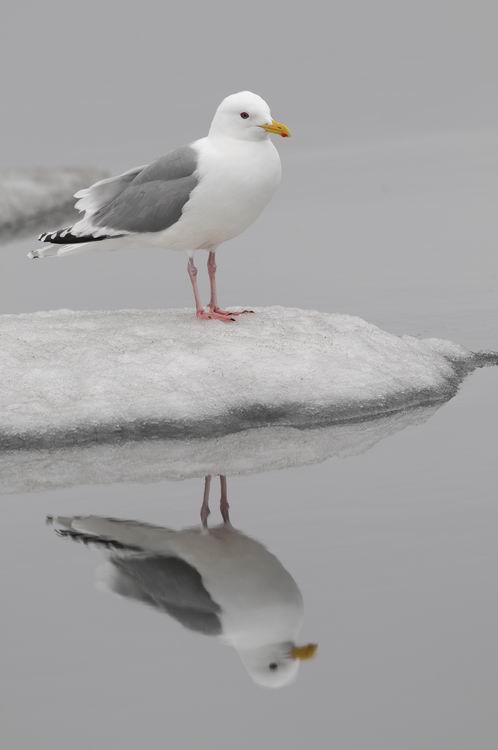
Iceland Gull
Photo: Mike McEvoy

Herring Gull
Photo: Max Skwarna
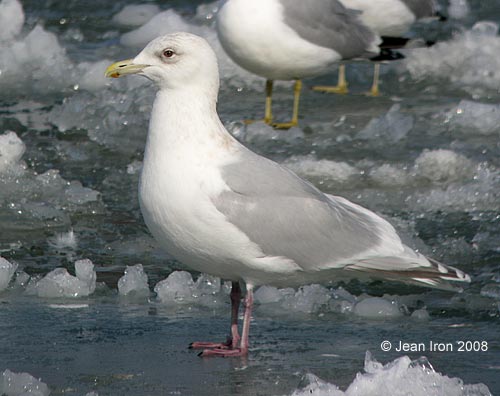
Iceland Gull
Kumlien's form Basic
Photo: Jean Iron
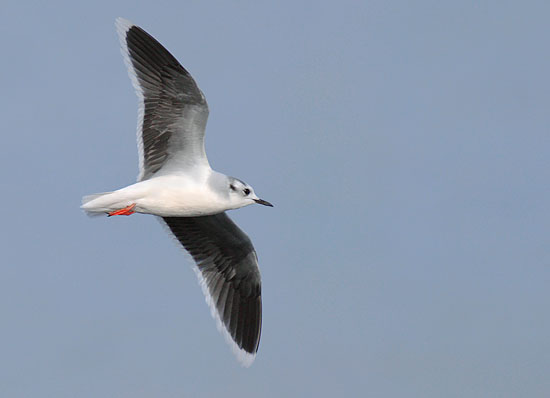
Little Gull
Basic
Photo: Brandon Holden
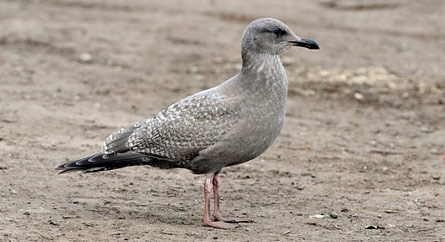
Iceland Gull
Juvenile
Photo: Kirk Zufelt
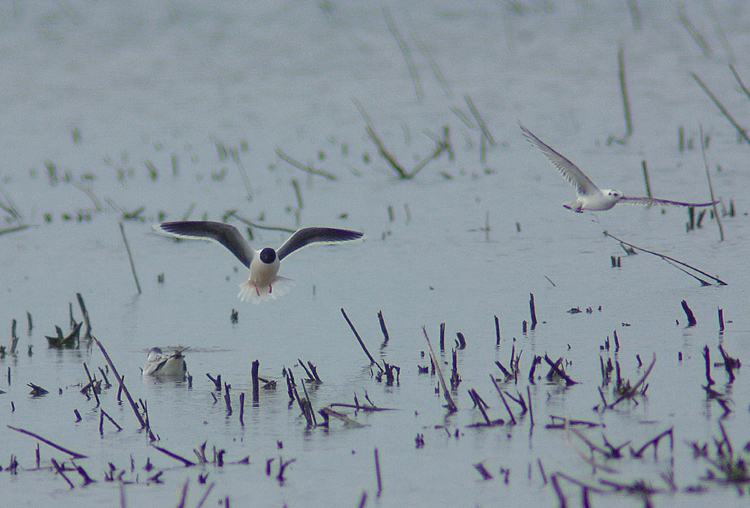
Little Gull
Photo: Barry Cherriere
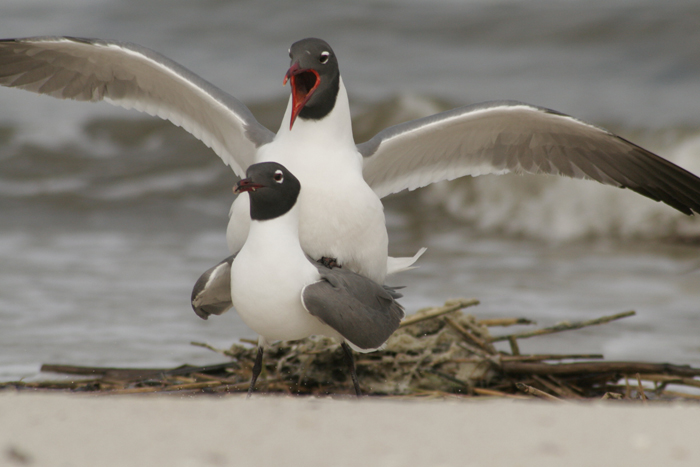
Laughing Gull
Photo: Mark Peck
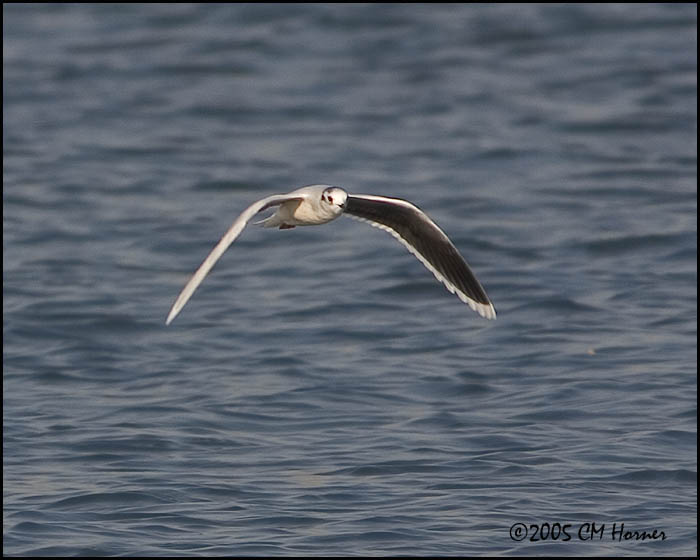
Little Gull
Basic
Photo: Carol Horner

Lesser Black-backed Gull
Photo: Barry Cherriere

Ring-billed Gull
Photo: Brandon Holden
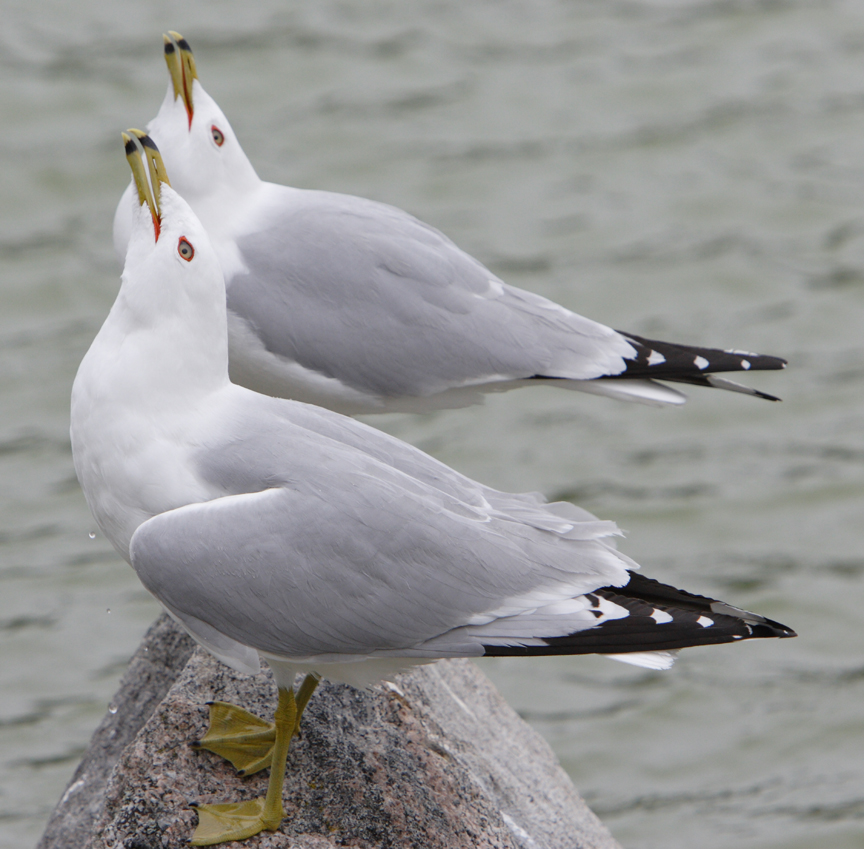
Ring-billed Gull
Photo: Francine Ouellette

Bonaparte's Gull
Photo: Sam Barone

Franklin's Gull
Photo: Barry Cherriere
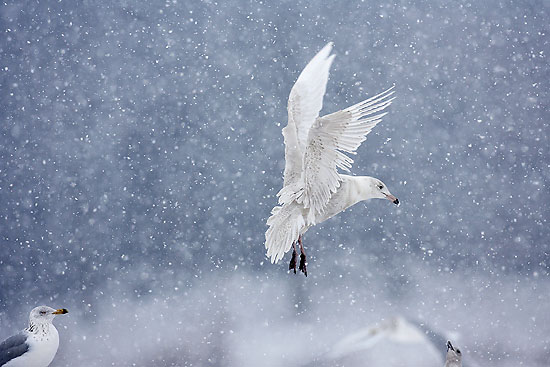
Glaucous Gull
Juvenile
Photo: Brandon Holden
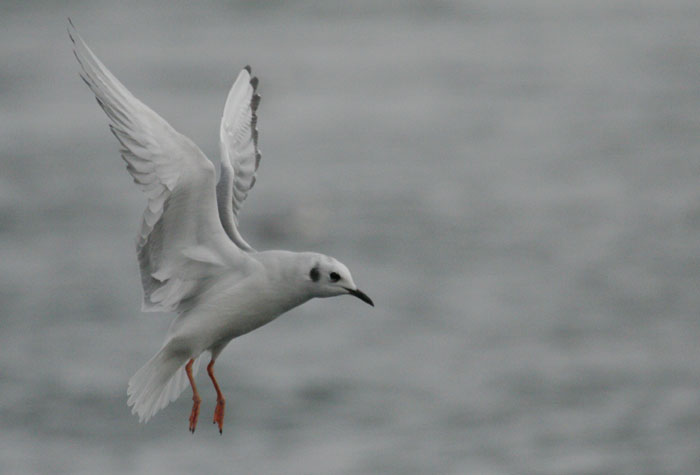
Bonaparte's Gull
Basic
Photo: Mark Peck
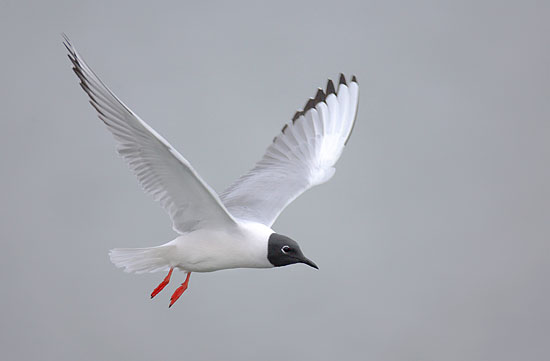
Bonaparte's Gull
Photo: Brandon Holden

Tufted Titmouse
Photo: John Millman
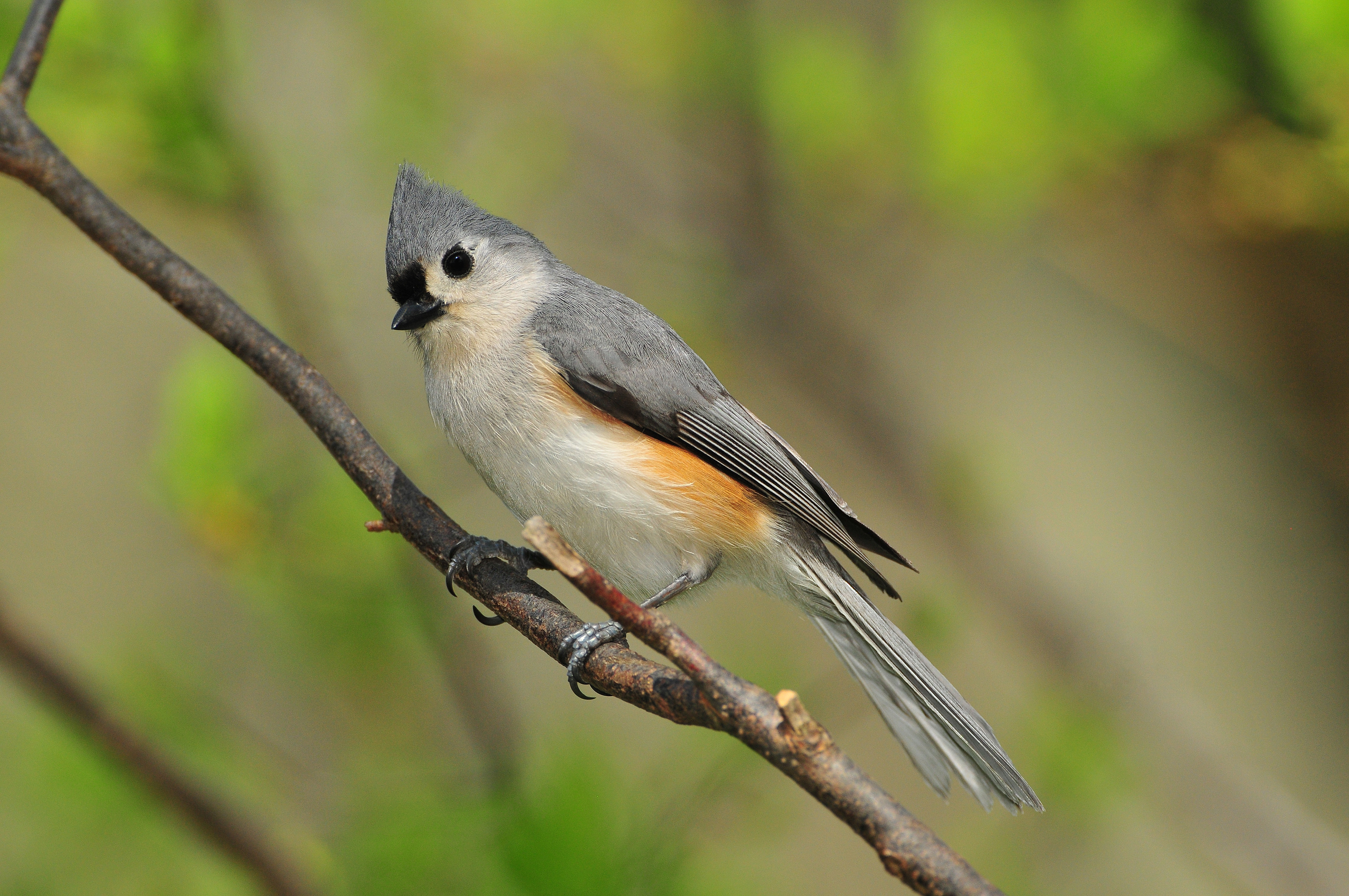
Tufted Titmouse
Photo: Sam Barone
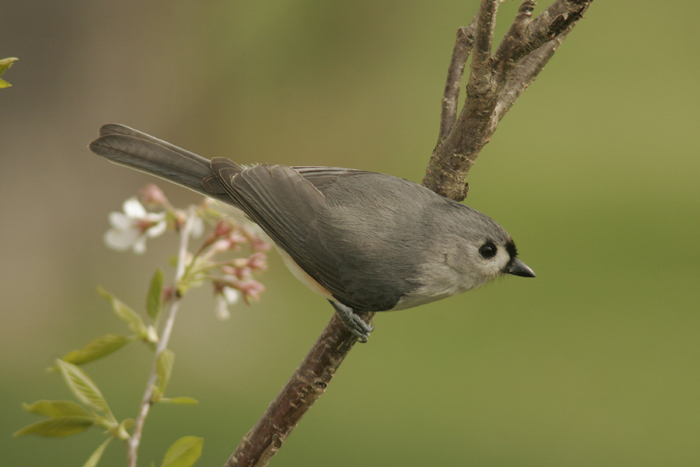
Tufted Titmouse
Photo: Mark Peck
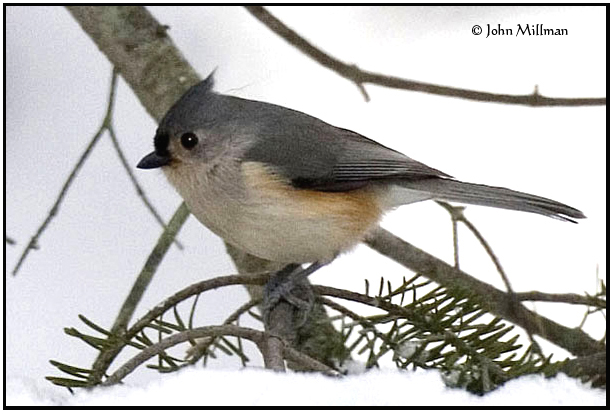
Tufted Titmouse
Photo: John Millman

Tufted Titmouse
Photo: Sam Barone
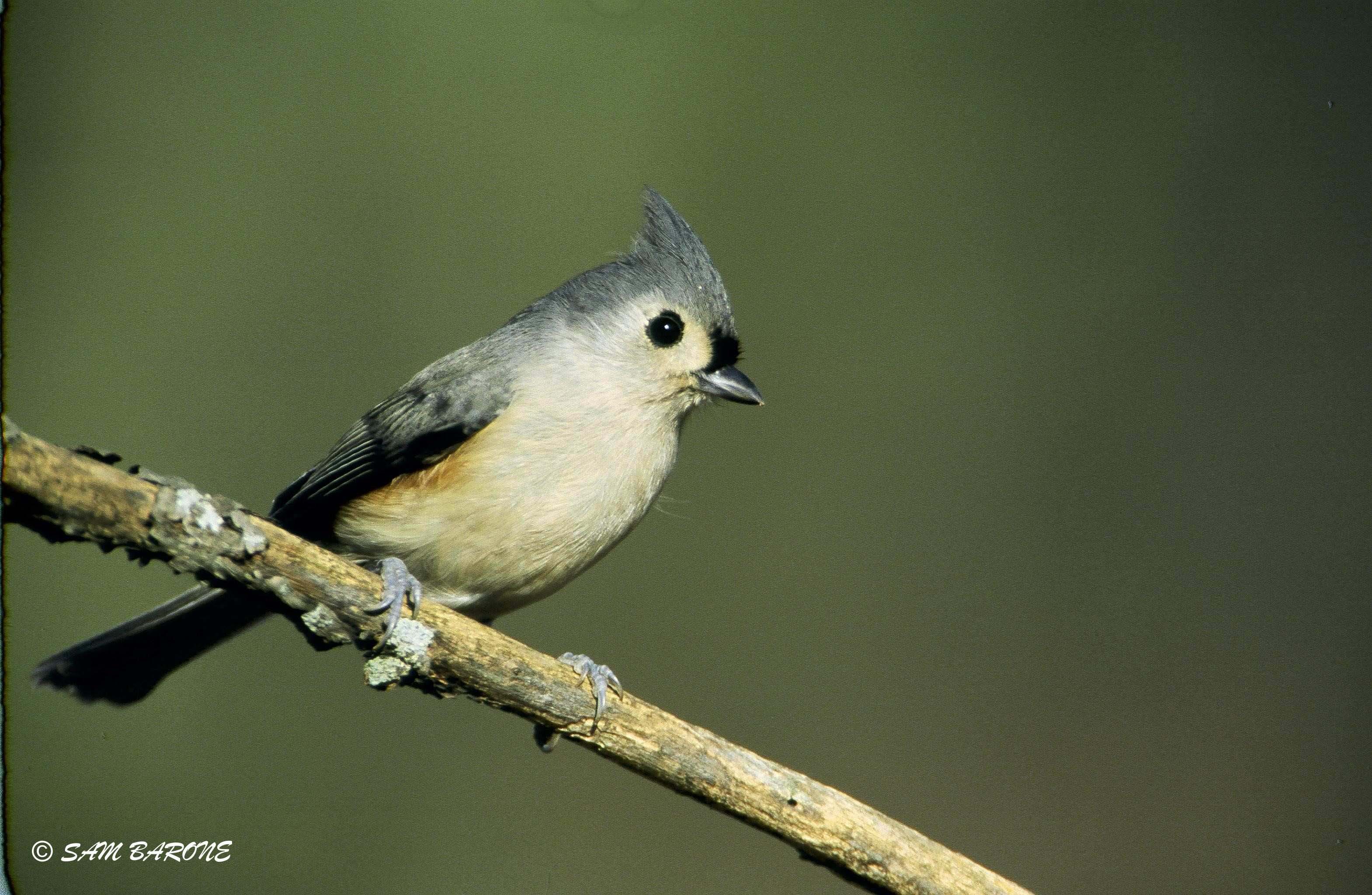
Tufted Titmouse
Photo: Sam Barone
Rock Point Provincial Park
and Lake Erie ShoreTop
August 28 2016 (Sunday) Rock Point Provincial Park and Eastern Lake Erie Shore
Leader: Marcie Jacklin.
Eleven OFO members showed up for a shorebird outing today. We covered Port Colborne, Rock Point Provincial Park, Mosaic Ponds and Grimsby. We recorded 43 species which included 14 species of shorebirds. The highlights were Buff-breasted Sandpiper, American Golden Plover, Bairds Sandpiper, Wilson's Phalarope, 2 Peregrine Falcons and 4 species of warblers. We had a long day (ended at 6 pm) but the group was a lot of fun. I would like to thank Blayne and Jean Farnan, John Black, Josh Vandermeulen and Bob Manson for scouting for us.
August 30 2015 (Sunday) Rock Point Provincial Park and Eastern Lake Erie Shore
Leader: John Black, Dan Salisbury.
About 30 birders with 16 cars showed up at the Park Gate at 0800 hours. We went directly to the Rock Point Banding station where Jim Smith and Bev kindly showed us a number of interesting birds that had been trapped in the nets. Notable were: A young Canada Warbler, a young American Goldfinch, a Trail's Flycatcher, a Catbird, a young Common Yellowthroat and a Red-eyed Vireo. Some of the birders had a chance to handle and release the birds. At 0900 hours Dan and Luc, who had been checking the Point, returned to tell us there were 6 species of shore birds there so we travelled to the washrooms at the south east end of the park and then and walked down to the point. All had good looks at the shorebirds (There was a little shore today!). They included: 4 Least Sandpipers, 6 Semi-palmated Sandpipers, 20 Semi-palmated Plovers, 5 Sandlerlings, 2 Killdeers and 3 Spotted Sandpipers. We drove to the sod farms. En route Mosaic Ponds, seen from the road, yielded two Wood Ducks but no shorebirds and no Common Egrets. It was not until we reached the dirt fields south of Poth Road that we had some target birds: 18 Black-bellied Plovers. Following Poth Road to the end and then traveling north we failed to find anything except Killdeers. At one stop we watched as 3 young Copper's Hawks were pursued by a group of crows. In a field north of Poth Road where two Bairds Sandpipers had been seen earlier in the morning we failed to find any birds as they had been chased away by a group flying model airplanes. Trip over at 1200 hours.
August 17 2014 (Sunday) Rock Point Provincial Park and Eastern Lake Erie Shore
Leader: John Black, Dan Salisbury.
40 enthusiastic participants showed up for the outing. There were only 18 individual shorebirds at Rock Point, the lowest number for this trip over the years. The good news was that there were two juvenile Baird's Sandpipers at which we all had excellent looks in great light conditions. There were also almost no shoreline or shorebirds at the Mosaic Esterhazy lagoons which was fortunate because this year we did not have permission to walk into the property.
We spent a lot of time on Feeder Canal Road. Here we had at least 5 Green Herons, 20 Great Egrets, Solitary Sandpiper ( heard) and a good number of yellowlegs. Many of the participants seemed as interested in the turtles as the birds. We had a northern map turtle, a Blanding's turtle, painted turtles and a snapping turtle. We searched all the sod farms for for plover. It was only at our last stop on Poth Road that we had a group of about 60 Black-bellied Plovers fly in as we got there at about 12:30. No Buff-breasted Sandpipers or American Golden Plovers in the fields. Perhaps just a few week early for their return.
At Rock Point: 7 shorebird species
- Spotted Sandpiper 3
- Baird's Sandpiper 2
- Lesser yellowlegs 2
- Greater Yellowlegs 1
- Least Sandpiper 5
- Semipalmated Plover 2
- Semipalmated Sandpiper 2
- Killdeer 1
Also viewed
- Long-tailed Duck (1) sitting on the lake
- Black Tern (1) flying over the lake.
- Red-eyed Vireo
- American Goldfinch
- Yellow Warbler
- Baltimore Oriole
- Ring-billed Gull
- Herring Gull
- Double-crested Cormorant
- Song Sparrow
- Mourning Dove
- Common Tern
- Gray Catbird
- Northern Cardinal
- Red-tailed Hawk
Fowler's Toad observed on the beach by some.
At the Mozaic Esterhazy Lagoons
- Green Heron and Wilson's Snipe were heard
- Great Blue Heron (3)
- Wood Duck (1)
- Great Egret (1)
- Caspian Tern (2)
Further down the road at the canal and small ponds
- Great Blue Heron (3)
- Green Heron (5)
- Great Egret (20)
- Solitary Sandpiper (1)
- Greater Yellowlegs (3)
- Lesser Yellowlegs (2)
- Swamp Sparrow (1)
- Marsh Wren (1)
- Wood Duck (5)
- Blue-winged Teal (3)
Swallow Species observed during the outing
- Tree Swallow
- Barn Swallow
- Cliff Swallow
- Purple Martin
- Great-crested Flycatcher
- Eastern Kingbird
- Turkey Vulture
- Canada Goose
- Belted Kingfisher
- Common Grackle
- European Starling
- Cedar Waxwing
- Painted Turtle
- Map Turtle
- Blanding's Turtle
- Snapping Turtle
- Black-bellied Plover (60)
- Killdeer (30)
- American Kestrel (2)
- Cooper's Hawk (1)
- American Crow (14)
- Black-bellied Plover 30
- American Golden Plover 2
- Semipalmated Plover 8
- Killdeer 22
- Spotted Sandpiper 4
- Greater Yellowlegs 8
- Lesser Yellowlegs 25
- Sanderling 3
- Semipalmated Sandpiper 60
- Least Sandpiper 20
- White-rumped Sandpiper 1
- Baird's Sandpiper 1
- Pectoral Sandpiper 2
- Stilt Sandpiper 1
- Short-billed Dowitcher 10
- Semipalmated Plover 2
- Killdeer 209
- Black-bellied Plover 37
- American Golden Plover 1
- Spotted Sandpiper 6
- Solitary Sandpiper 1
- Greater Yellowlegs 1
- Lesser Yellowlegs 7
- Semipalmated Sandpiper 9
- Least Sandpiper 19
- Short-billed Dowitcher 1
- Buff-breasted Sandpiper 1
- Merlin 1
- Great Egret 1
- Green Heron 4
- Semipalmated Plover 10
- Killdeer 10
- Spotted Sandpiper 8
- Solitary Sandpiper 1
- Greater Yellowlegs 2
- Lesser Yellowlegs 10
- Sanderling 2
- Semipalmated Sandpiper 40
- Least Sandpiper 5
- White‐rumped Sandpiper 1
- Pectoral Sandpiper 1
- Wild Turkey 2
- Great Egret 1
- Green Heron 5
- Black‐bellied Plover 10
- Semipalmated Plover 12
- Killdeer 50
- Spotted Sandpiper 10
- Greater Yellowlegs 3
- Lesser Yellowlegs 15
- Ruddy Turnstone 5
- Sanderling 20
- Semipalmated Sandpiper 200+
- Least Sandpiper 10
- White‐rumped Sandpiper 2
- Stilt Sandpiper 1
- Short‐billed Dowitcher 8
Additional species observed in this area
4 turtle species observed in the ponds and canal on Feeder Canal Road
On the way to Poth Road, the group observed Horned Larks.
At Poth RoadJohn Black and Dan Salisbury with the help of Luc Fazio, Marcie Jacklin and Kevin McLaughlin (Species list compiled by Bob Highcock)
August 18 2013 (Sunday) Rock Point Provincial Park and Eastern Lake Erie Shore
Leader: John Black, Dan Salisbury.
Over 50 individuals with 25 vehicles attended today's OFO shorebird trip, a record number of participants. 15 species of shorebirds were seen. Notable were a single Baird's Sandpiper at Rock Point along with number of very tame Least and Semipalmated Sandpipers which allowed us to approach to within a few meters. A single Stilt Sandpiper and a single White-rumped Sandpiper at the Mosaic Esterhazy Lagoons and two Golden Plovers at the Sod Farms. As we were leaving the Mosaic Lagoons a pair of Sandhill Cranes flew over followed a few minutes later by a Bald Eagle that flushed about 20 Caspian Terns from their resting area. Eight Common Egrets were seen at Mosaic along with about the same number of Great Blue Herons and a single Tundra Swan.
The shorebird numbers were approximately as follows:
We wish to thank George Madsen of Mosaic for letting us into the Mosaic Lagoons and Kevin McLaughlin and Jim Heslop for assisting with the trip.
August 19 2012 (Sunday) August 19 2012 (Sunday) Rock Point Provincial Park and Eastern Lake Erie Shore
Leader: .
25 birders spent a rewarding morning exploring the Rock Point Provincial Park shoreline, the Mosaic Esterhazy Lagoons and the nearby sod farms on Sunday August 19. A total of 60 bird species were seen.
Rock Point was very disappointing. On the shore a few Killdeer, Spotted Sandpipers, Least and Semipalmated Sandpipers, and 2 Semipalmated Plovers were found along with a single Lesser Yellowlegs. The fly-over of a solitary Solitary Sandpiper completed the Rock Point total.
At Mosaic Esterhazy we added a single Greater Yellowlegs, a single Short-billed Dowitcher and a Merlin to our list.
In most years we see Black -bellied Plovers, a few American Golden-Plovers and one or two Buff-breasted Sandpipers at the sod farms. This year was no exception. We arrived at Poth Road at about noon. Our initial impression was not good. There were many Killdeer, but no plovers, on Poth Road. A single Black-bellied Plover was present when we first arrived at the sod farms on the Wainfleet - Dunville Townline Road. About the time when we were ready to give up three separate flocks of Black-bellied Plover arrived. In with them was a single American Golden-Plover and, while scanning the plovers, we also found a Buff-breasted Sandpiper(a lifer for several participants).
Shorebirds observed were:
Other birds of interest were:
Special thanks to George Madsen for access to the Mosaic Esterhazy Lagoons. Special thanks to Luke Fazio, Jim Heslop and Kevin McLaughlin for help in leading the trip.
August 7 2011 (Sunday) Rock Point Provincial Park & Eastern Lake Erie Shore
Leaders: John Black, Dan Salisbury.
30 birders spent a rewarding morning exploring the Rock Point Provincial Park shoreline and the Mosaic Esterhazy Lagoons on Sunday August 7. A total of 63 bird species were seen on the morning portion of the trip.
Normally we see American Golden‐Plovers and one or two Buff‐breasted Sandpipers at the sod farms in the area. A search of the sod farms at 0645 hours indicated that no American Golden‐Plovers were present. As a result, after lunch in Stromness, the trip continued to Smithville with only a quick drive through the sod farms. Unfortunately, only Killdeer were seen on the sod farms and no shorebirds were seem at the Smithville Sewage Lagoons (Water levels too high!).
Shorebirds observed were:
Other birds of interest were:
Special thanks to George Madsen for access to the Mosaic Esterhazy Lagoons.Special thanks to Jim Heslop and Kevin McLaughlin for help in leading the trip.
August 8 2010 Rock Point Provincial Park and Eastern Lake Erie Shore
Leaders: John Black with Jim Heslop and Kevin McLaughlin.
31 participants from 0800 to 1330 hours. 50 species, of which 15 species were shorebirds, were seen.
Rock Point
Strong winds off the lake led to a much reduced beach and very few shorebirds. Six Semipalmated Plover, a few Killdeer, and Spotted Sandpiper, a single Ruddy Turnstone, six Sanderling, two Least Sandpiper and fifteen Semipalmated Sandpiper were observed. Not one yellowlegs was seen!
Mosaic–Esterhazy Lagoons (Permission required for entry)
Here we added both yellowlegs to the trip list along with five Short‐billed Dowitcher, two Pectoral Sandpiper and, the highlight of the trip, a single Red‐necked Phalarope. Killdeer, Semipalmated Plover, Least Sandpiper and Semipalmated Sandpiper were also present. A lone Bald Eagle was also observed.
Sod Farms
On the grass, to the northwest of Canal Bank Road, northeast of Stromness and southwest of Hutchinson Road, 15 Black‐bellied Plover were observed. On the grass, to the north of athe intersection of Hutchinson Road and Poth Road, 12 Black‐bellied Plover were observed.
Shorebird totals
Black‐bellied Plover 28, Semipalmated Plover 12, Killdeer about 70, Spotted Sandpiper 20, Greater Yellowlegs 5, Lesser Yellowlegs 15, Ruddy Turnstone 1, Sanderling 6, Semipalmated Sandpiper 30, Least Sandpiper 5, Pectoral Sandpiper 2, Short‐billed Dowitcher 5, Red‐necked Phalaraope 1.
9 August 2009 Rock Point Provincial Park and Eastern Lake Erie Shore
Leader: John Black.
The trip began at Rock Point at 0800 hours. An adult Bald Eagle flew overhead just after we reached the beach. Excellent shorebirding. Definitely worth a visit if you are in the vicinity. There are some extensive algae flats in the area around the point which are attracting the shorebirds. Over 200 Semipalmated Sandpipers, 2 White‐rumped Sandpipers and a Stilt Sandpiper. From Rock Point we went to the Mosaic Esterhazy Lagoons. Only a few shorebirds but there were 10 Great Egrets and we did add Greater Yellowlegs to the list. Finally we visited the sod farms on Poth Road where we had 10 Black‐bellied Plovers.
56 species total. Shorebirds were
There were 16 participants. The weather was excellent, mostly sunny, until shortly after we left the sod farms. By 1230 hours the rain was intense, but by then we were having lunch. Special thanks to Brandon Holden and Kevin McLaughlin for their keen eyes and help in identifying shorebirds and to George Madsen for getting us into the Mosaic Esterhazy property.
10 August 2008 Rock Point Provincial Park & Eastern Lake Erie Shore
Leader: Dan Salisbury.
Sunday’s outing was attended by 25 participants. We saw a total of 71 species. The trip started at 8:00 am and ended at 2:30 pm.
We began at Rock Point where we had 9 species of shore birds. Notable were 1 White‐rumped Sandpiper and 2 Ruddy Turnstones. From there we went to the Mosaic Esterhazy Lagoons and added 3 Short‐billed Dowitchers, a Pectoral Sandpiper and about 10 Greater Yellowlegs. Unfortunately there was no sign of the Hudsonian Godwit seen earlier in the week. Marsh Wren was a lifer for one group, and at the exit we had excellent looks at a Yellow‐billed Cuckoo, a lifer for another group. After lunch in Stromness we visited the sod farms and had about 10 Black‐bellied Plovers in one field. Then it was on to Morgan’s Point and there the rain finally caught up with us as we studied a Cooper’s Hawk. We persisted in the rain to a rocky point just east of Morgan’s Point where we had good looks at a group of Semipalmated and Least Sandpipers.
Special thanks to Mosaic Esterhazy for permitting us to enter their lagoons.
Reported by Don Salisbury, John Black.
11 August 2007 Rock Point Provincial Park & Eastern Lake Erie Shore
Leader: Dan Salisbury.
A group of 25 avid birders met at the Rock Point Provincial Park this morning. Two of the group saw a six Wild Turkeys between the roadway and the park entrance. On the shore we were rewarded with some excellent observations of numerous shorebirds including one Black‐bellied Plover, six Semipalmated Plovers, two Lesser Yellowlegs, numerous Least Sandpipers, mostly in juvenile plumage, as well as one Pectoral Sandpiper, one juvenile Baird’s Sandpiper and a White‐rumped Sandpiper. Some of the group had an exotic bird, a probable escapee that was thought to be a White‐eared Bulbul from Asia.
Following the Provincial Park walk, we met Georg Madsen from Mosaic Esterhazy Holdings Limited who opened the gates to the evaporation ponds and allowed us to bird this area. We would like to thank Georg who drove in on his days off and the Mosaic company for inviting us into this area for the second year in a row. We were fortunate enough to find a few other shorebirds including a Short‐billed Dowitcher, one Stilt Sandpiper, four or five Greater Yellowlegs and a couple of Solitary Sandpipers. Other birds of interest included an Osprey, two Great Egrets and numerous ducks.
After leaving the Mosaic property, the group found another area across from Port Maitland that had shorebirds and Green Herons. Leaving this area, we checked the sod farms along the feeder canal but had only a few Killdeer. The trip ended at Morgan’s Point where we had a few more shorebirds at the base and some early migrants at the tip. These included Black‐and‐white Warbler and Blackburnian Warbler.
The total number of birds seen by the group was 82 including 14 shorebird species. It was a great day of August birding.
Reported by Dan Salisbury.
5 August 2006 Rock Point Provincial Park and Eastern Lake Erie Shore
The OFO Field trip to the Lake Erie shore began at Rock Point Provincial Park. There were 26 participants.
At Rock Point we had: Killdeer (5), Lesser Yellowlegs (3), Solitary Sandpiper (1), Spotted Sandpiper (15), Sanderling (3), Semipalmated Sandpiper (5) and Least Sandpiper (16). A single meadowlark briefly joined the shorebirds on the beach. A number of Caspian Terns were observed flying beside the beach.
From Rock Point we went to the large property managed by Mosaic Esterhazy Holdings Limited. Georg Madsen, Operations Superintendent, met us at the gate to the property and opened gates on both the north and south sides of Rymer Road for us. We spent a very profitable time in this area adding Black‐bellied Plover (1), Semipalmated Plover (2) Greater Yellowlegs (10) and Pectoral Sandpiper (5) to our shorebird list for the day. About 20 Lesser Yellowlegs, 12 Green Herons, and several Marsh Wrens were also observed. A lone Bald Eagle flew overhead as we were walking out of the area.
We next visited the sod farms at the intersection of Hutchinson and Poth Road where we had 9 Black‐bellied Plovers. We then went along the Canal Bank Road to Wainfleet and over to Morgan’s Point where there were no shorebirds. After lunch at Morgan’s Point we carried on to Harborview Road (just east of Morgan’s Point) where we had 22 Semipalmated Sandpipers, 3 Least Sandpipers and one Lesser Yellowlegs. At 13:30 we arrived at the Erie Peat Road entrance to Wainfleet Bog and spent about 90 minutes walking in the bog. No unusual birds but we did have a Smooth Green Snake and various butterflies. A total of 67 species of birds were seen by the participants.
We would like to thank Georg Madsen and Mosaic Esterhazy Holdings Limited for the opportunity to visit the Mosaic property. The property looks to be an excellent spot for shorebirds and waterbirds in the fall. For permission to enter visit the Mosaic Office at the corner of Canal Bank Road and Rymer Road. Office hours are Monday to Friday from 08:00 to 16:30 hours. For pre‐arrangements of visits or field trips to the area contact George Madsen at 1‐905‐774‐7681 during office hours. (From Rock Point Provincial Park turn right at the entrance to the park and then take the first left on Downy Road.) The road intersects Rymer Road. Turn left on Rymer Road and you will come to the mosaic property with evaporation lagoons on the right and an embankment on the left, which hides two large lagoons, before reaching Canal Bank Road.)
Reported and led by John Black and Dan Salisbury.
6 August 2005 Lake Erie Shore
Leader: Willie D'Anna.
Today 14 birders joined Betsy and me for some great weather and birding in a tranquil and beautiful place - the Lake Erie shore of Ontario. The trip convened at Rock Point Provincial Park, south of Dunnville, and hit several spots between there and Fort Erie. As expected, Rock Point was the most productive for shorebirds with 10 species including 3 Short-billed Dowitchers, 2 Ruddy Turnstones, and a Sanderling. Semipalmated Sandpipers were the most common bird here as well as at every other stop along the shore. On the rocks around the shorebirds were Bonaparte's Gulls, 2 Long-tailed Ducks, and a Red-breasted Merganser. Flying over were lots of swallows, including one Cliff. In the trees along the shore at Rock Point we had good numbers of songbirds but all birds that could have bred in the area. Among them were Blue-gray Gnatcatcher, a cuckoo, Trail's Flycatcher (Willow or Alder), and numerous Baltimore Orioles and Yellow Warblers. After Rock Point we headed inland slightly to the turf farms along Canal Bank and Poth Roads. Along Canal Bank Rd, we added Horned Larks, at least 10 Black-bellied Plovers, and a distant-in-the-heat-shimmer Whimbrel, about which someone remarked was probably the worst look they ever had at that species! Poth Rd added more Horned Larks and over a hundred Killdeer.
Our next stop was Morgan's Point, just southeast of the hamlet of Burnaby. Eight Common Mergansers were new but other than lots of gulls, there was little on the shore. We ate lunch at the park adjacent to the point and added a few more songbirds including one unidentified warbler, probably a Baypoll (Blackpoll or Bay-breasted) from the sounds of the description, and a Carolina Wren. We continued east, stopping at several more points along the shore and although we saw quite a few more shorebirds, we were unable to add any new shorebird species. There was still quite a bit to look at and among the many new species seen, we added 15 more Common Mergansers at the foot of Stonemill Rd as well as a Green-winged Teal - and a Northern Waterthrush at the foot of Buffalo Rd. Our list topped out at 73 species.
Reported by Willie D'Anna
7 August 2004 Rock Point Provincial Park and Eastern Lake Erie Shore
Leader: Willie D'Anna.
A large group of birders assembled at the gate at Rock Point Provincial Park. After paying the entrance fee, we headed straight for the southeastern corner of the park. A Yellow-billed Cuckoo was spotted before we even got down to the beach. Only a few shorebirds were along the shore, but an early Dunlin in fading breeding plumage was nice. Two Ruddy Turnstones were also seen. Loads of Yellow Warblers and Baltimore Orioles worked the willows on the back edge of the beach. A probable Willow Flycatcher was seen but did not vocalize (virtually no eye-ring, short primary projection). We returned to our vehicles and while waiting to use the rest rooms, an immature Bald Eagle and an Osprey came over at the same time. Neither species is regular in the park though the eagle (and Osprey?) breeds on the nearby Grand River.
We left the park and headed to King Road, the first road east of the big bend in H-N 3. It must have been the group karma because finally, on my fourth attempt, the Cattle Egret was there on the edge of the pond. After watching it for a little while it flew back to the cattle and began to pick insects from their heads!
Next, we headed inland to Canal Bank Road in the Township of Moulton. There, in a sod farm on the north side of the road we found the early American Golden Plover we had scouted out earlier in the morning. With the plover were many Killdeer as well as several juvenile Horned Larks which bear little resemblance to the adults. While the group watched the plover, one birder noticed five shorebirds land in an adjacent dirt field. His precise directions enabled me to finally spot one of them. Putting it in my scope, I was delighted to see a WHIMBREL. Most of us saw one or two Whimbrel in the field where they were frequently out of sight behind a rise.
After this, we checked beaches at Morgan's Point, Harbourview Road, Windmill Point, Stonemill Road, and Kraft Road. The shorebirding at these spots was disappointing. We never saw a yellowlegs on the day! One birder that got separated from the group found a Red-headed Woodpecker but the rest of us were not so lucky.
Reported by Willie D'Anna
9 August 2003 Rock Point Provincial Park and Eastern Lake Erie Shore
Leader: Jim Heslop.
Twenty-seven enthusiastic birders and field naturalists met at 8 a.m. at the entrance to Rock Point Provincial Park east of Dunnville on the shores of Lake Erie. While sorting out entrance fees and car pools, a Black-billed Cuckoo flew in and landed for good views and a Ruby-throated Hummingbird buzzed by. An Osprey glided over our cars as we drove in to the east end of the park. A pleasant hike along the rocky shoreline produced a number of shorebirds, many of which allowed us leisurely study at very close range, including Semipalmated Sandpipers and Plovers, Ruddy Turnstones and Lesser Yellowlegs. Yellow Warblers were in abundance in the scrub along the shoreline but mixed in were a few other species, including Palm Warbler and Warbling Vireo. A few quick and lucky folks “got on” a Prairie Warbler before it flew. A number of Turkey Vultures were on the beach at the western terminus of our stroll along the park shore, undoubtedly adding a little bit of fish to their diets.
A walk to the Bird Banding Station at the west end of the park was an opportunity to enjoy a number of butterfly species as well as the resident avifauna while Purple Martins and various swallows hawked overhead. We heard and/or saw Eastern Kingbird, Willow Flycatcher, Cedar Waxwings. Butterflies included Spring Azure, Viceroy, Monarch, Red-spotted Purple and a bonus Giant Swallowtail. As we left Rock Point headed for Morgan's Point, some of the group spotted a small flock of Wild Turkeys. A couple of stops around the latter point allowed us to add to our day's list of shorebirds. We saw Short-billed Dowitcher and Black-bellied Plover. On the return drive, we added Stilt Sandpiper, Sanderling and White-rumped Sandpipers. Stops along Quarrie Road and Cement Road netted Green Herons and Great Egrets.
I would like to thank those members of the club that shared their telescopes and knowledge with the avid new birders. No, Spotted Sandpipers don't always have spots! A final tally for the day was over 70 species of birds including 13 shorebirds.
Reported by Jim Heslop
10 August 2003 Rock Point Provincial Park and Eastern Lake Erie Shore
Leader: Willie D'Anna.
About 30 birders met at the entrance to Rock Point Provincial Park, south of Dunnville, for the trip. There were good numbers and variety of shorebirds at the park (12 species), including one almost colorless adult Short-billed Dowitcher, at least one Black-bellied Plover (also seen at three or four other stops), two White-rumped Sandpipers, a single Solitary Sandpiper (seen by only a single solitary birder), and a fly-by Whimbrel. There were several Caspian and Common Terns, Bonaparte Gulls, and both Common and Red-breasted Mergansers. Lots of Yellow Warblers and Baltimore Orioles were flitting through the willows at the back of the beach, where we also had a Scarlet Tanager and many other songbirds. A Carolina Wren was singing as we returned to our cars. We skipped several spots that I had checked before the trip and found unproductive, stopping next at Reebs Bay (across from the cemetery, a few miles west of Port Colborne). There were quite a few peeps here including the first juvenile Semipalmated Sandpiper of the day (and my first of the year). Our next stop was the pond on Cement Plant Road, where the juvenile Yellow-crowned Night-Heron that Betsy and I had found earlier was still residing. I think we could have ended the trip there and sent everyone home happy! We also added two Great Egrets and two Great Blue Herons.
At Windmill Point, an adult and immature Red-headed Woodpecker called and a Carolina Wren sang as we ate our lunch. At the east end of the point, off Stone Mill Road, we had 13 Blue-winged Teal with one Green-winged, and our first Greater Yellowlegs. An eclipse male Bufflehead was a very unusual find in summer. An immature Black-crowned Night-Heron flew in, filling the last hole on our North American night-heron list.
At the foot of Buffalo Road, we added one more Blue-winged and one more Green-winged Teal and another Great Egret.
At the foot of Kraft Road, our last stop and just a couple miles west of Fort Erie, we had a nice mix of shorebirds, several dozen Common Terns, and a fairly close Whimbrel. Our 69th and last species of the day was a Great Black-backed Gull (actually two).
Lots of interesting butterflies were also seen, including two Giant Swallowtails.
Reported by Willie D'Anna
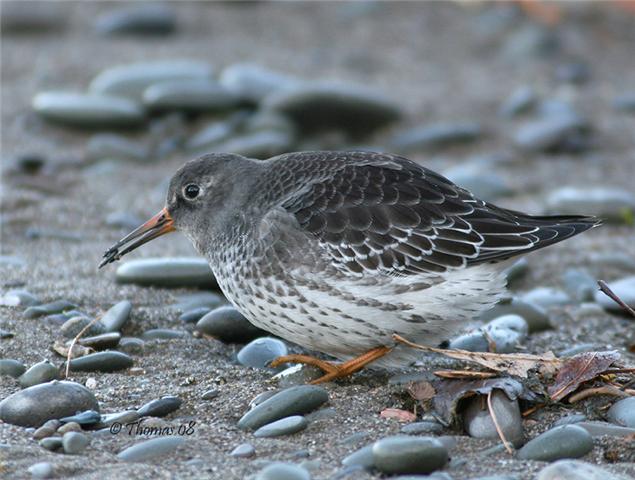
Purple Sandpiper
Photo: Tom Thomas

Spotted Sandpiper
Female bottom bird
Photo: Jean Iron
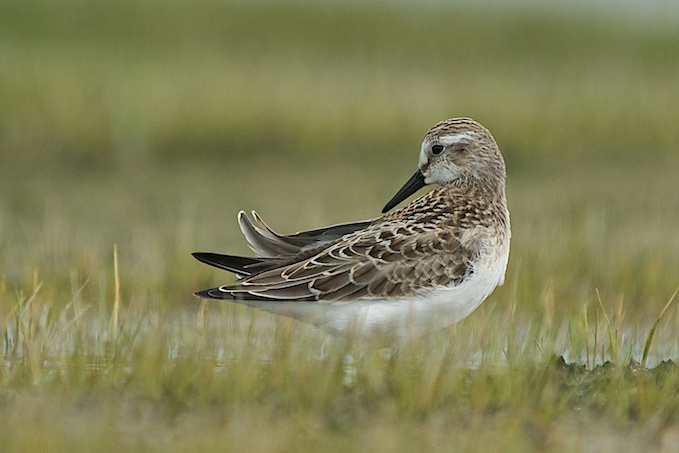
Semipalmated Sandpiper
Juvenile
Photo: Alvan Buckley
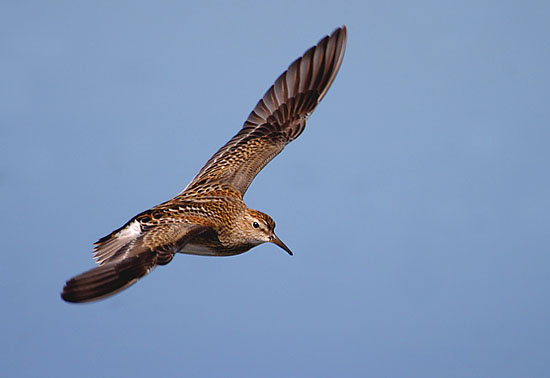
Pectoral Sandpiper
Photo: Brandon Holden

Semipalmated Sandpiper
Photo: Sandra and Frank Horvath
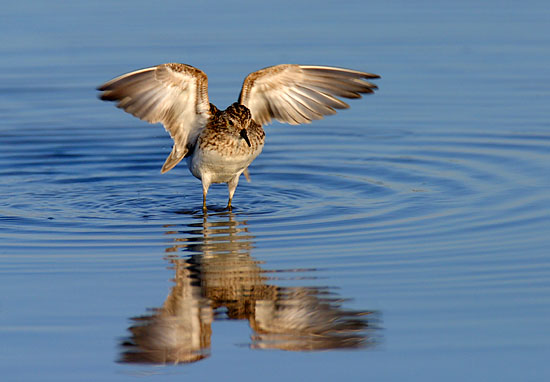
Least Sandpiper
Photo: Brandon Holden
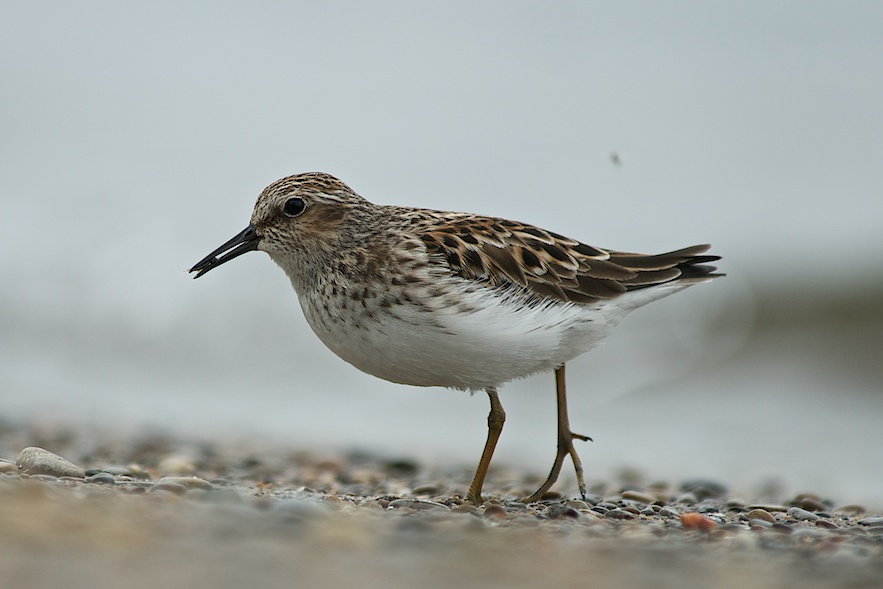
Least Sandpiper
Photo: Alvan Buckley
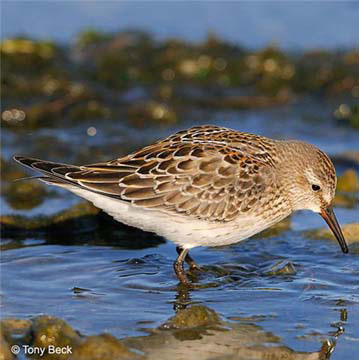
White-rumped Sandpiper
Juvenile
Photo: Tony Beck
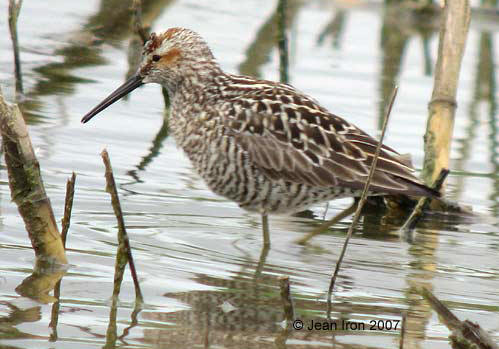
Stilt Sandpiper
Photo: Jean Iron
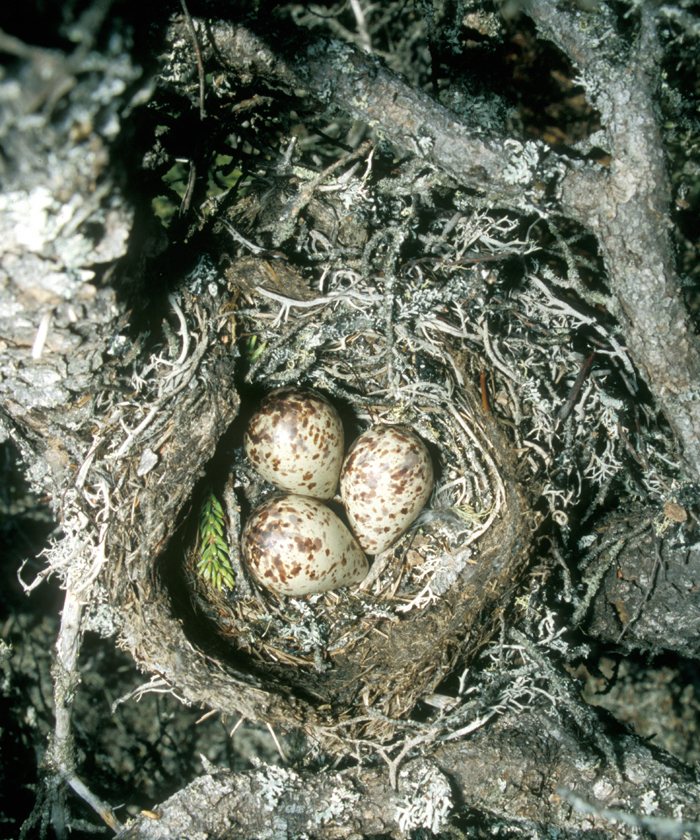
Solitary Sandpiper
Photo: Mark Peck
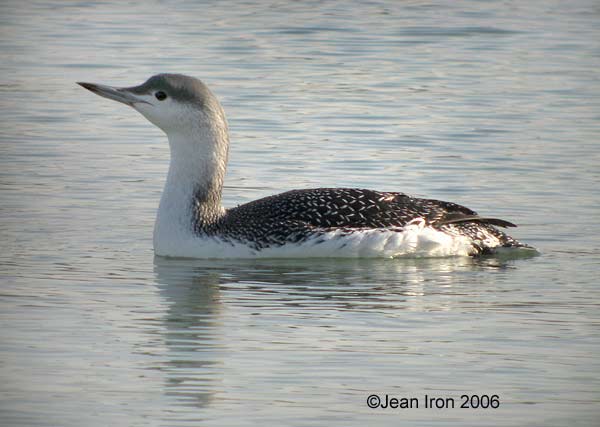
Red-throated Loon
Basic
Photo: Jean Iron

Pacific Loon
Photo: Mark Peck
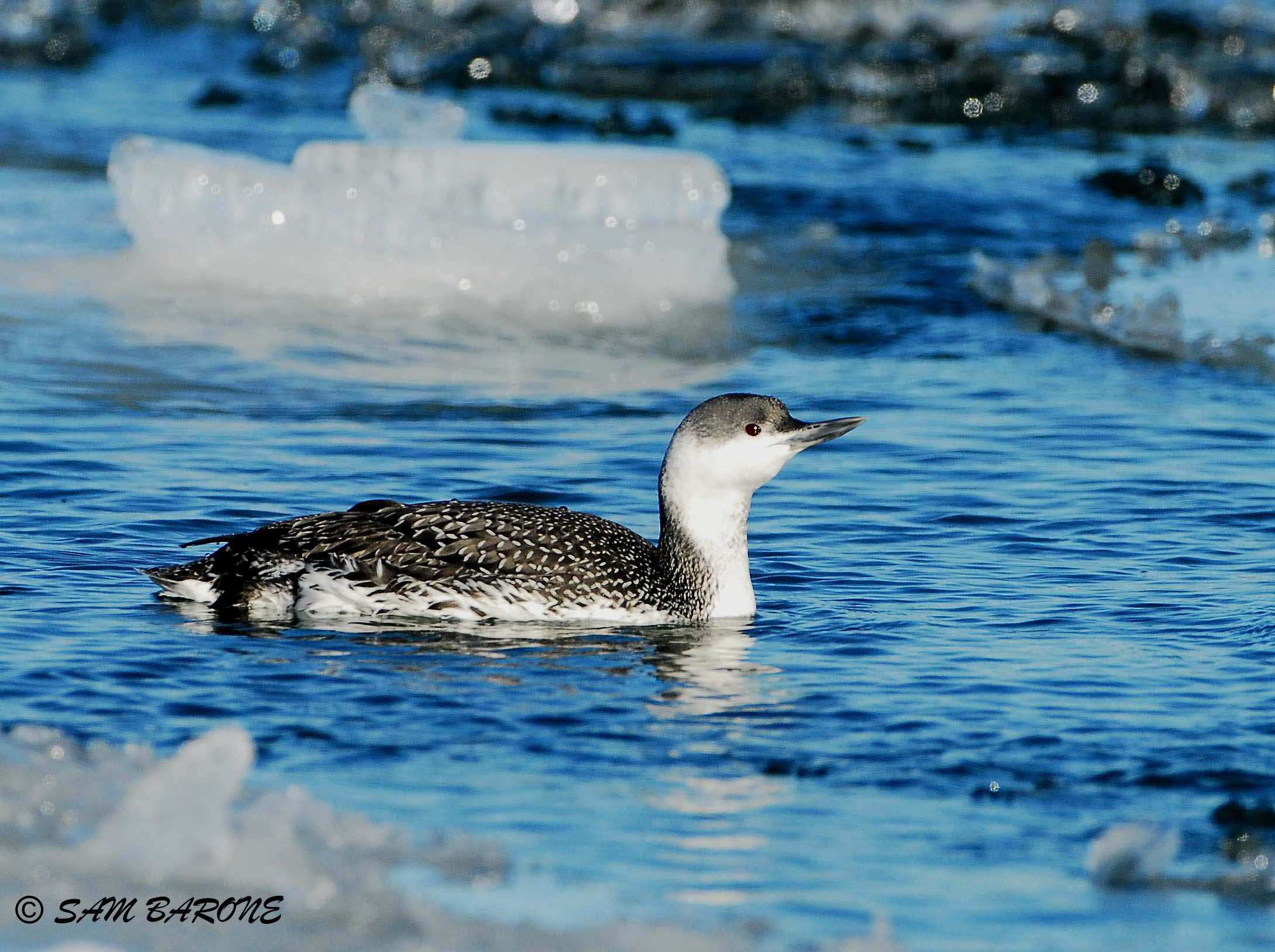
Red-throated Loon
Basic
Photo: Sam Barone
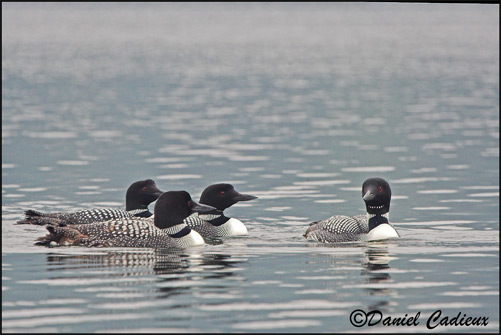
Common Loon
Photo: Daniel Cadieux

Pacific Loon
Basic
Photo: Jean Iron
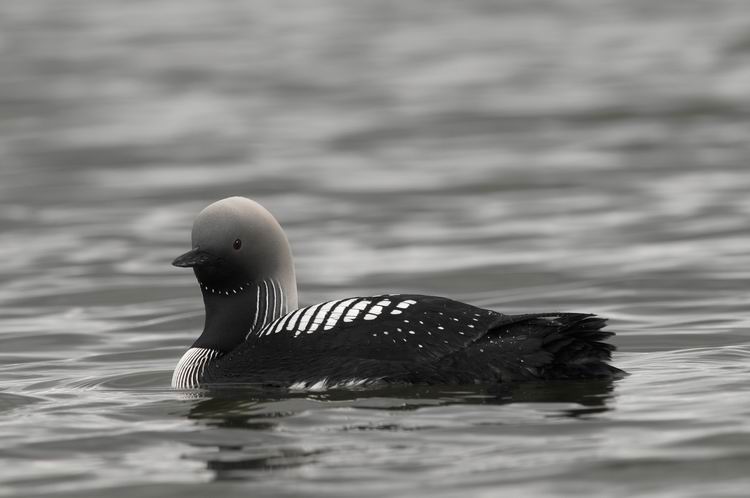
Pacific Loon
Photo: Mike McEvoy
